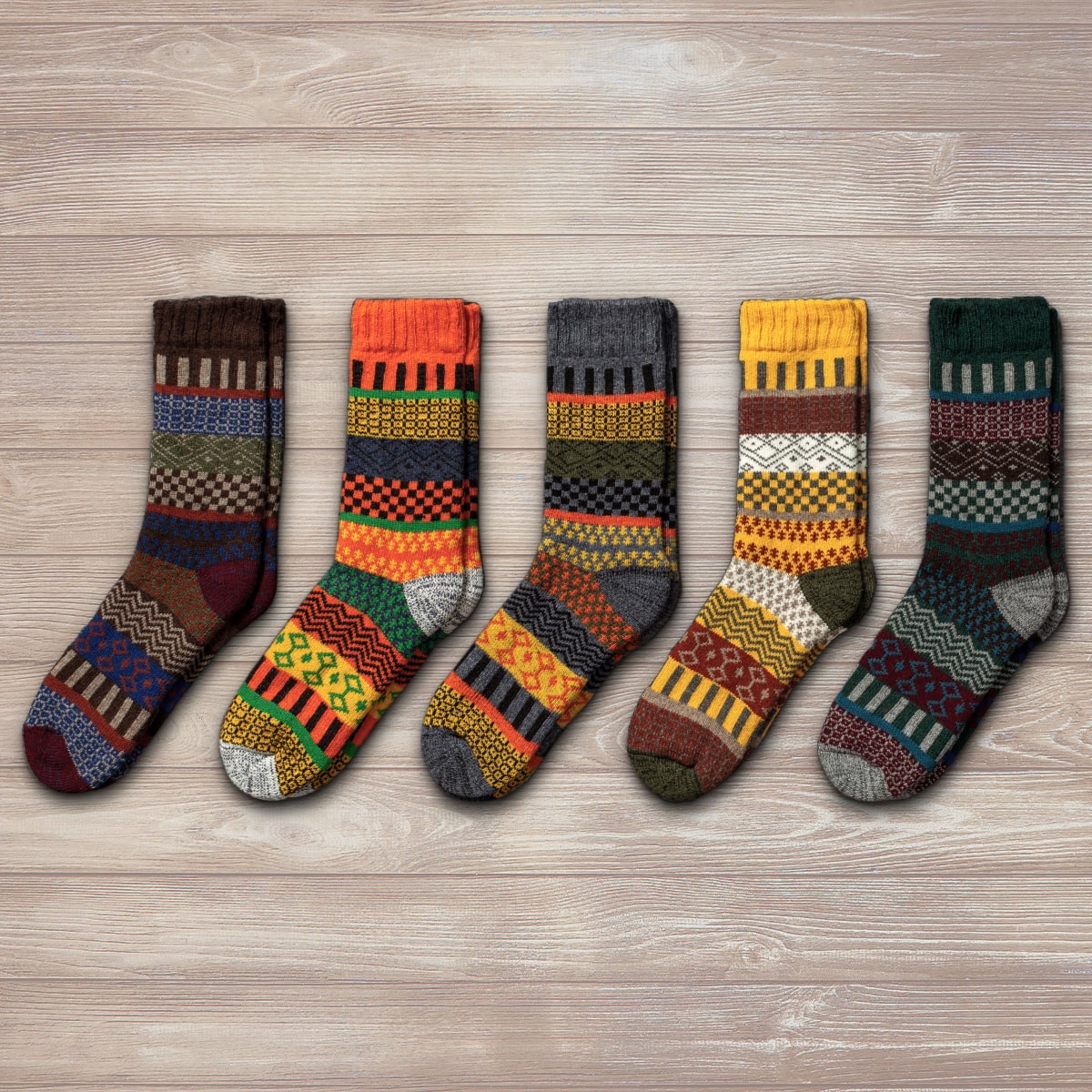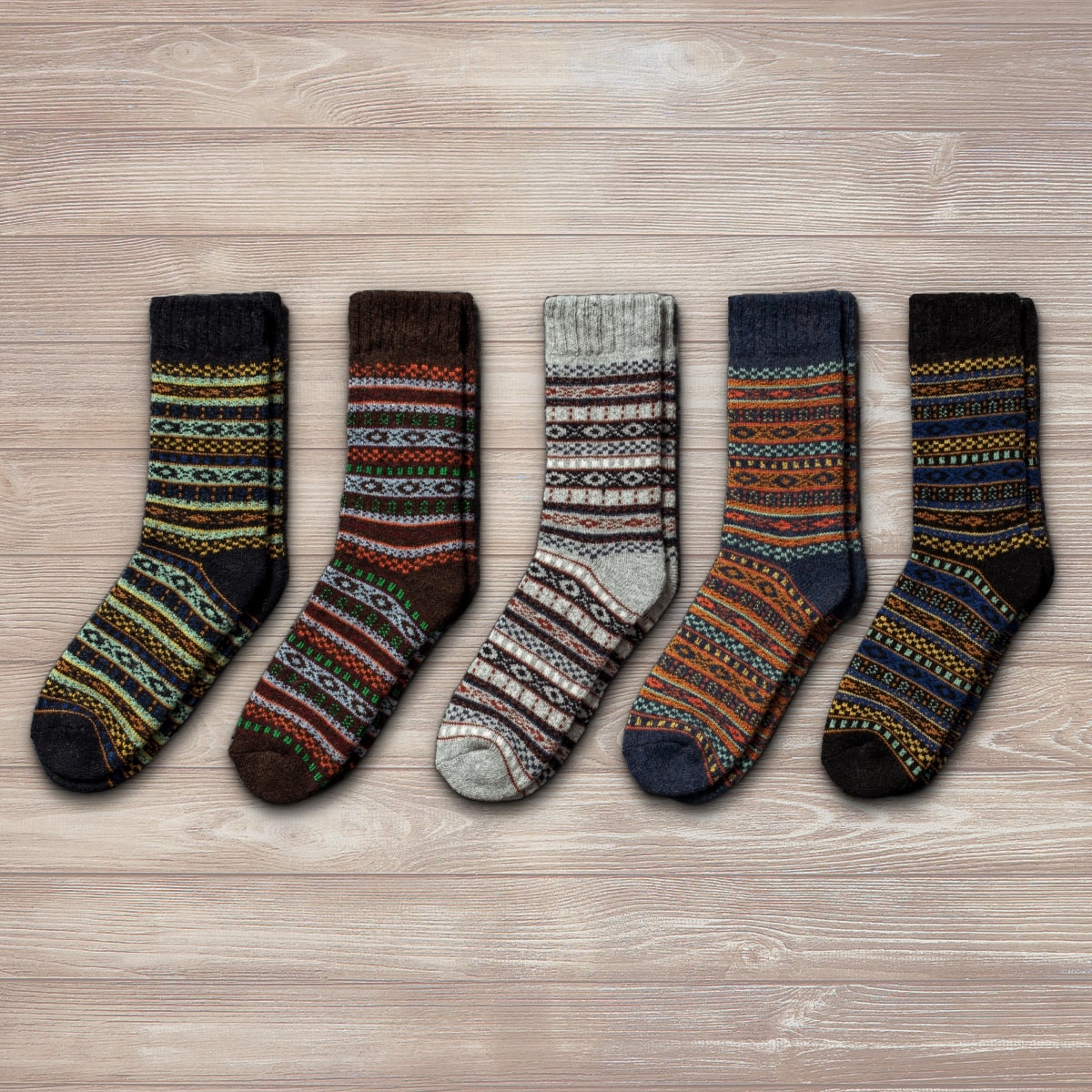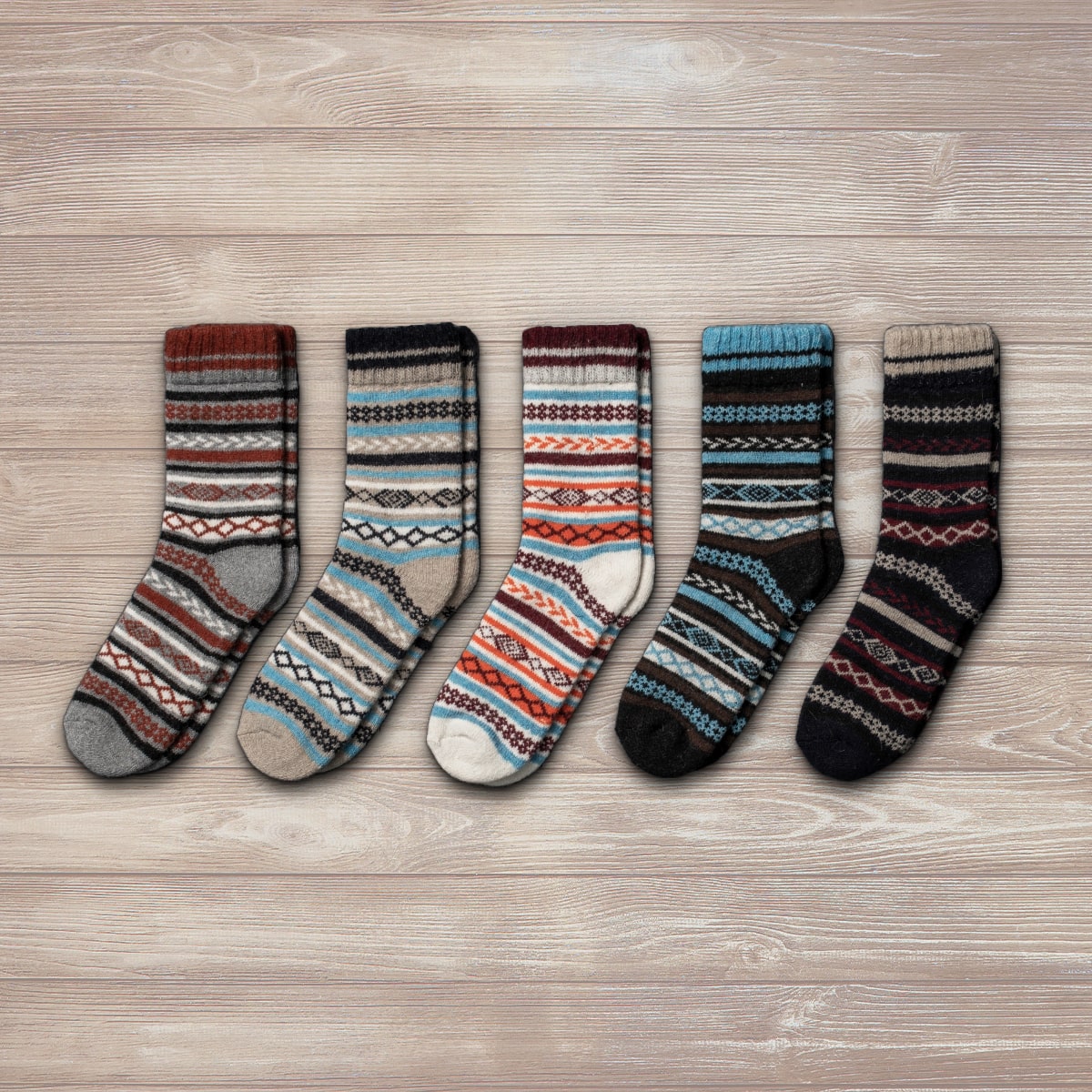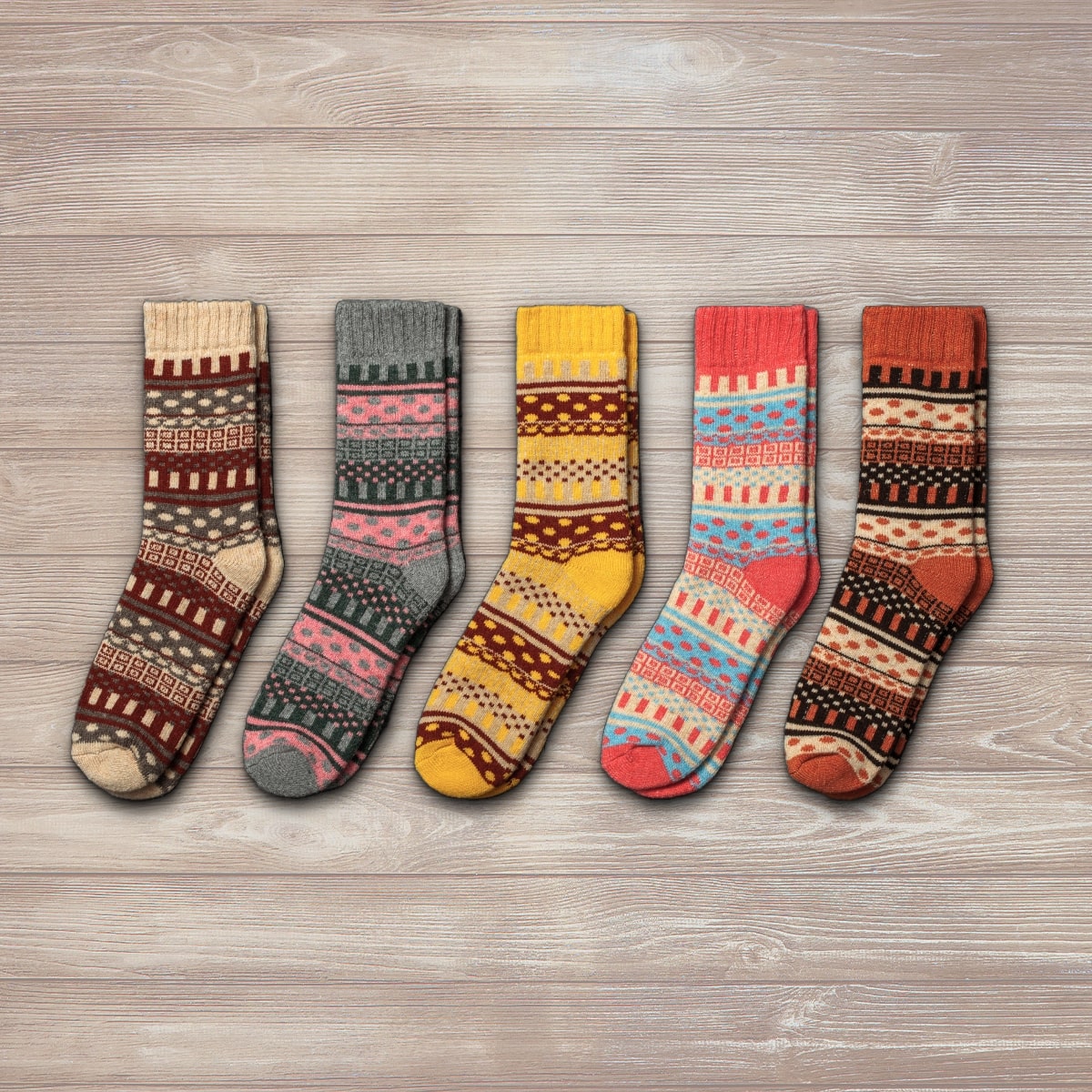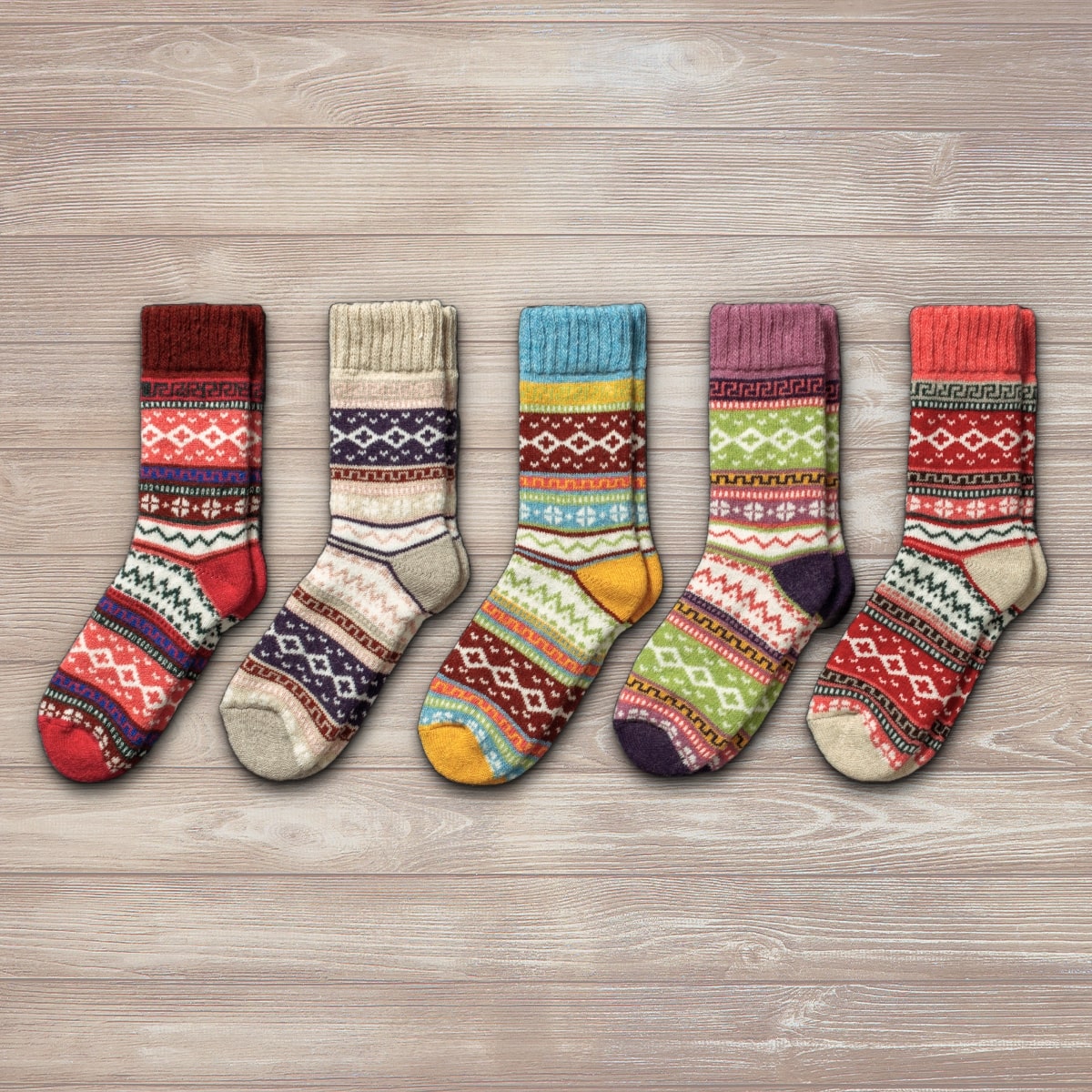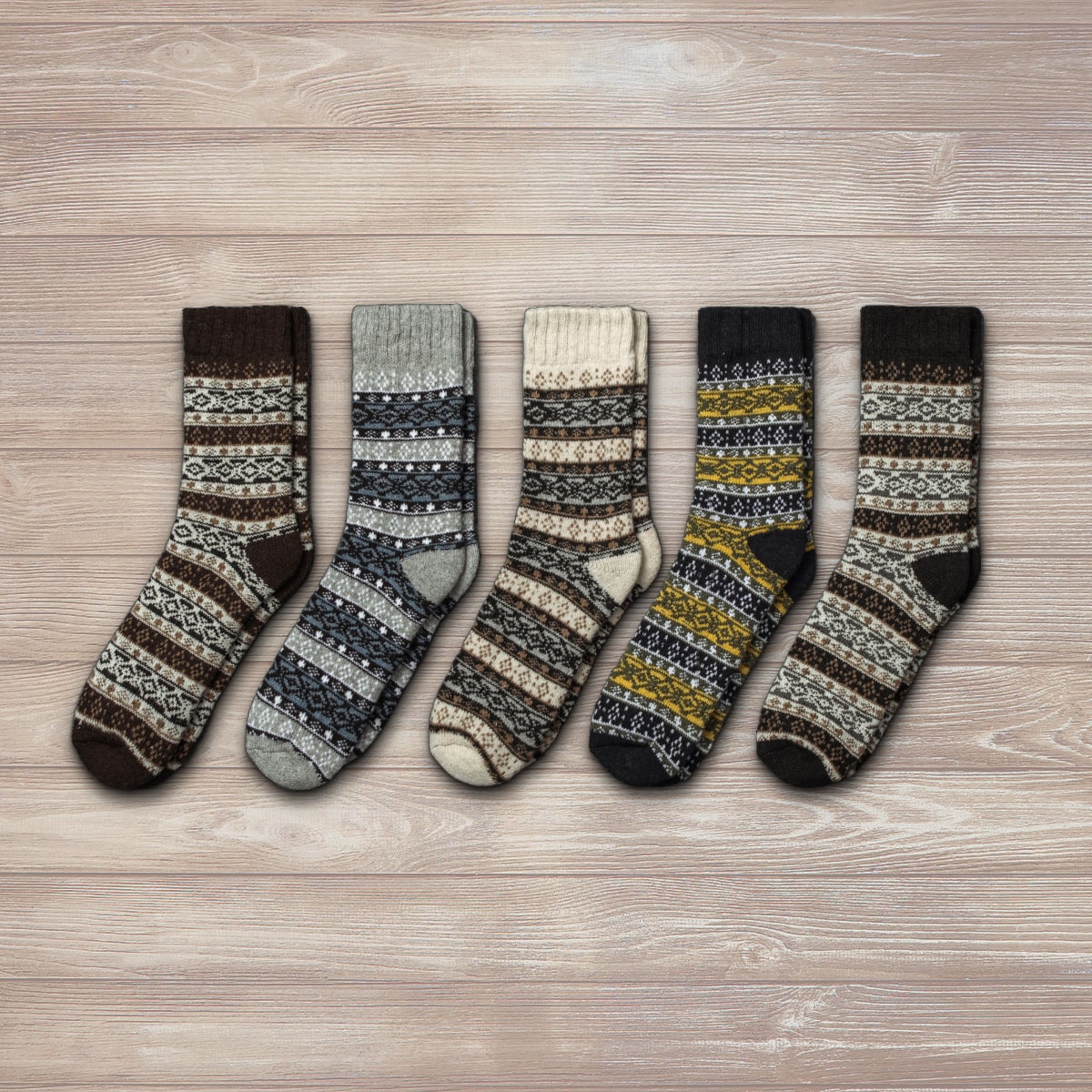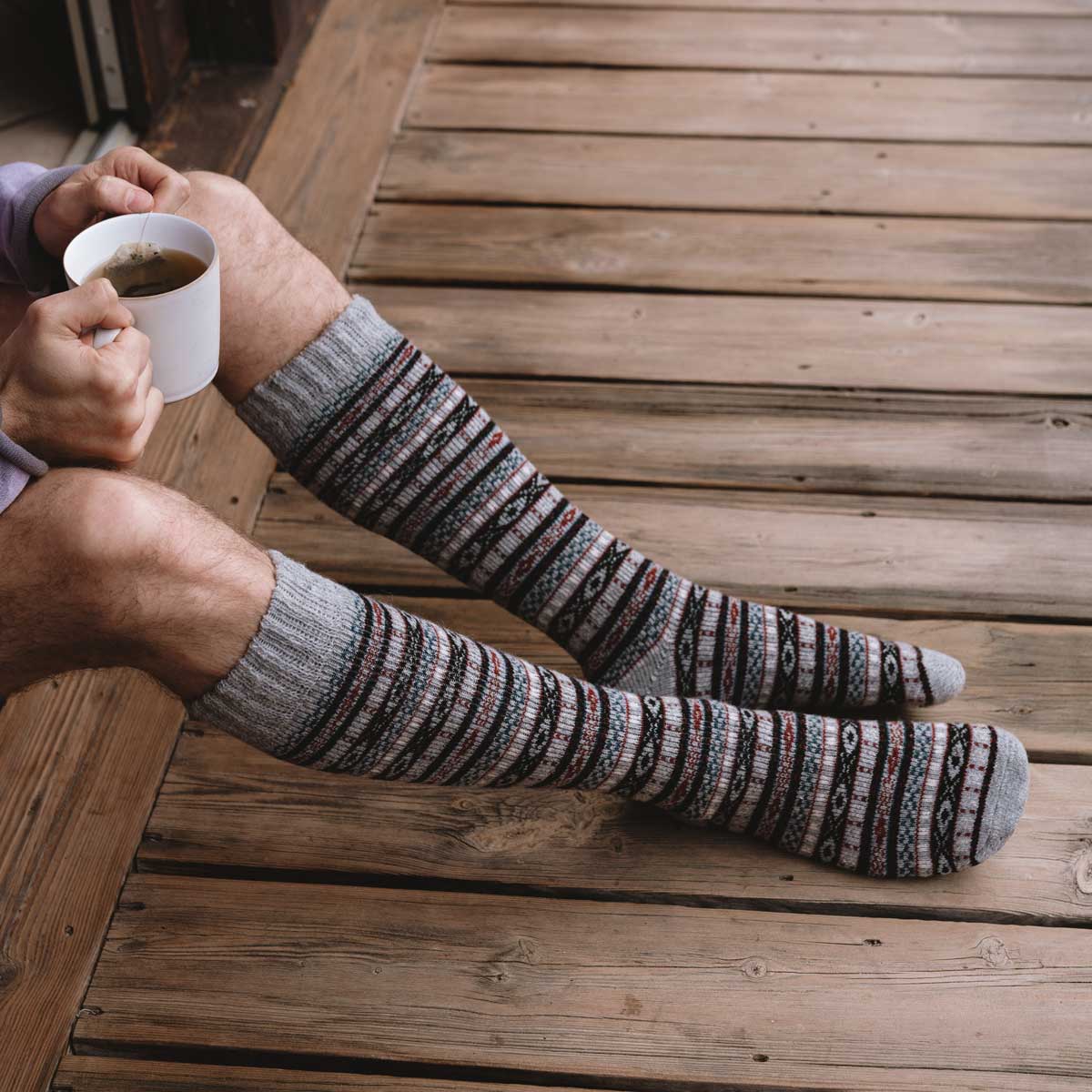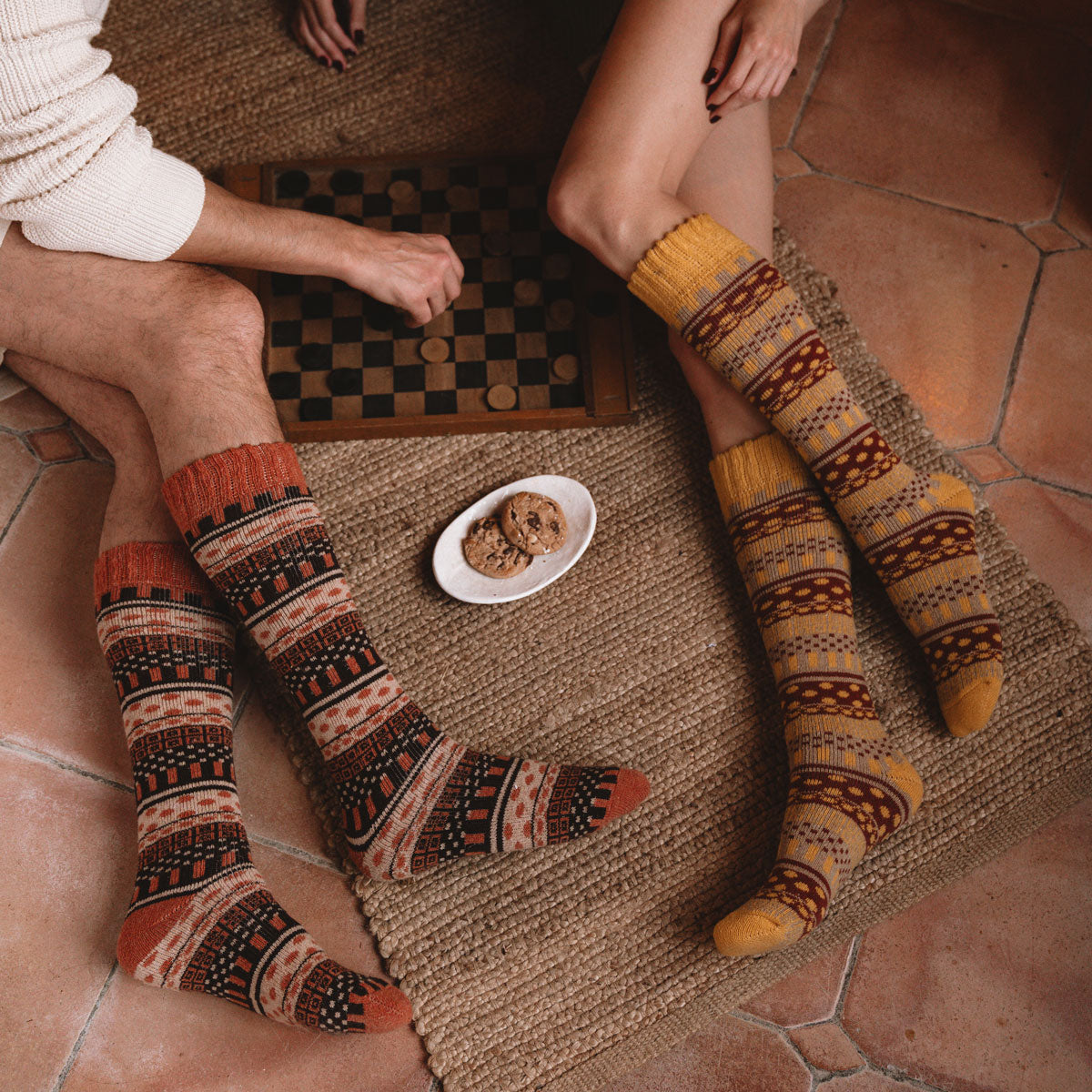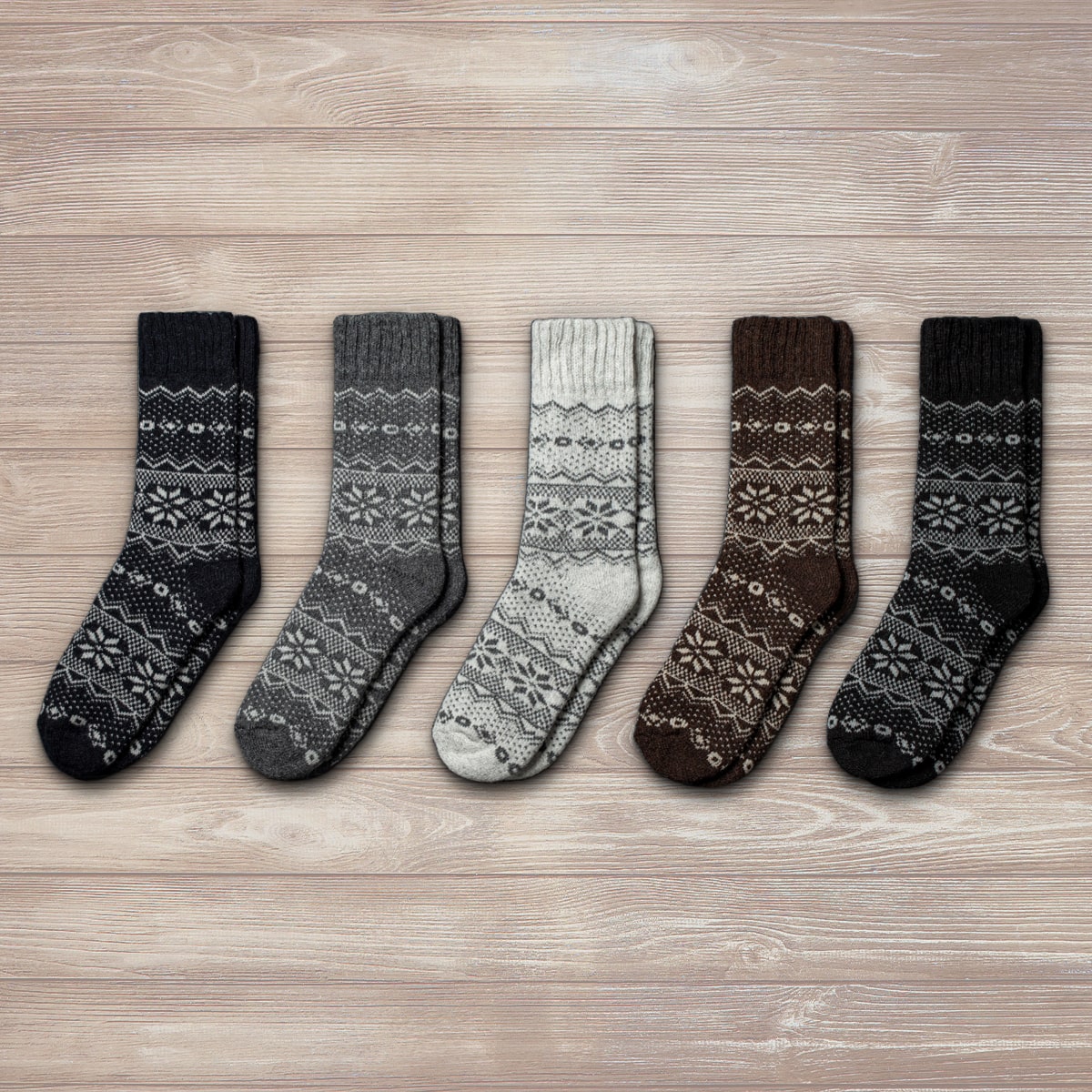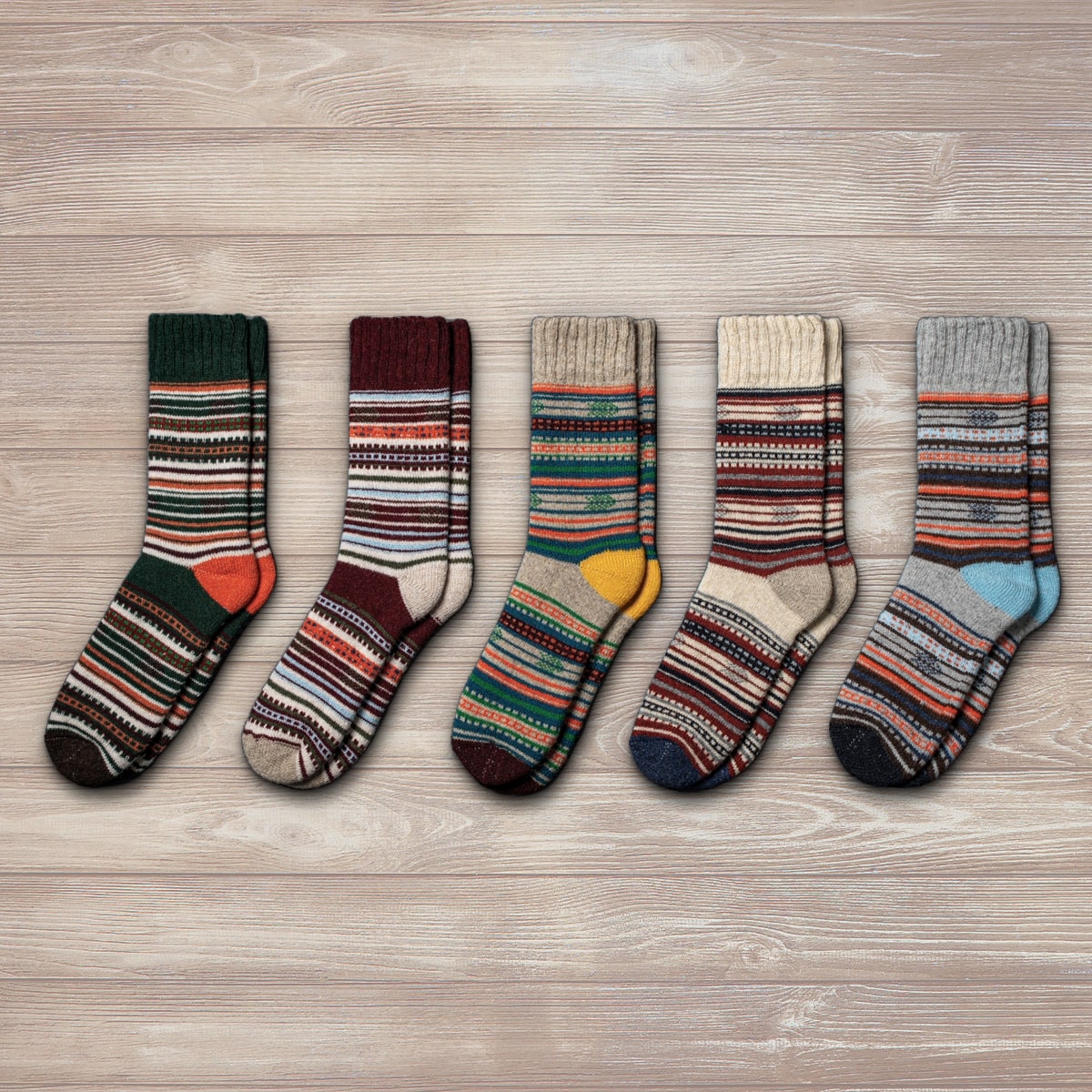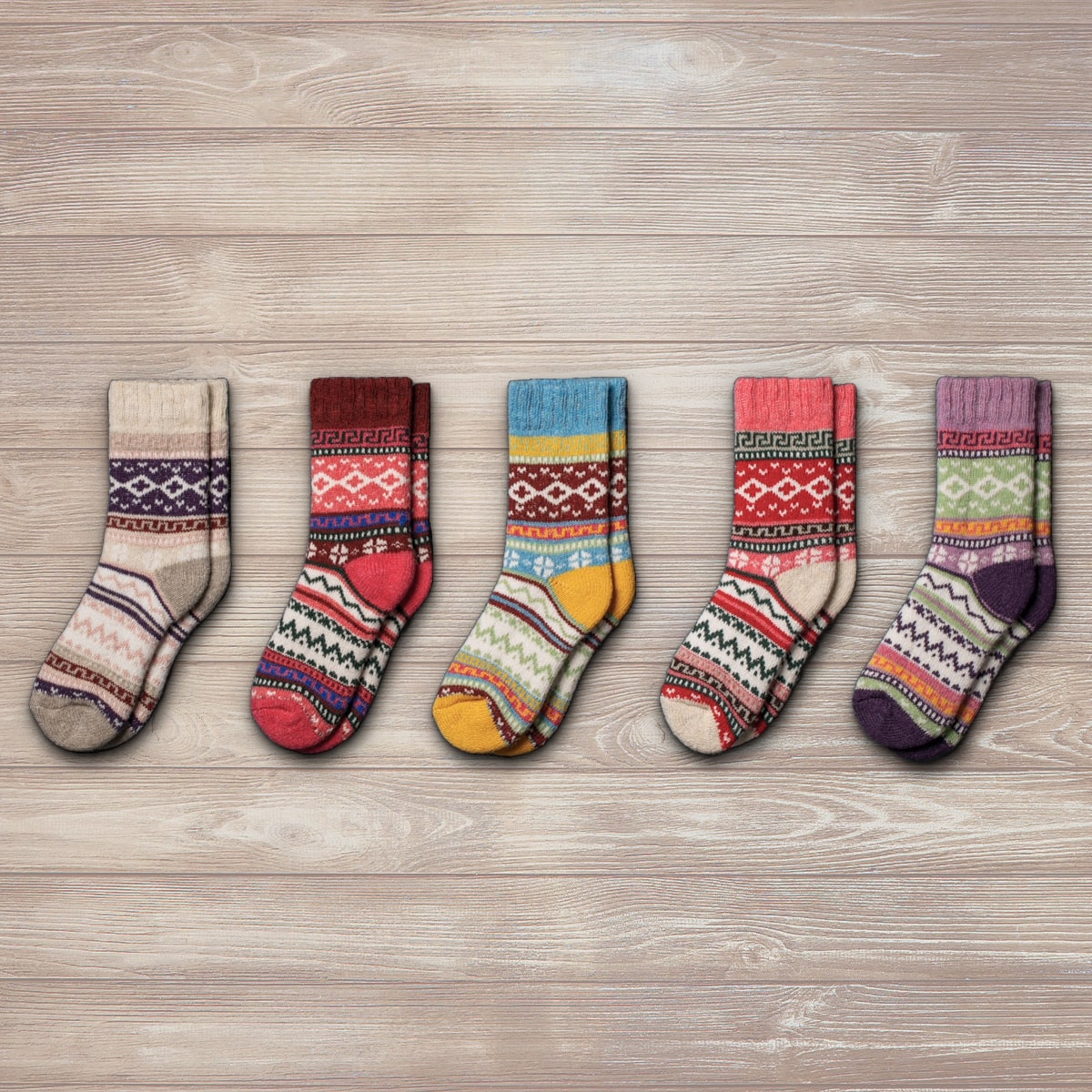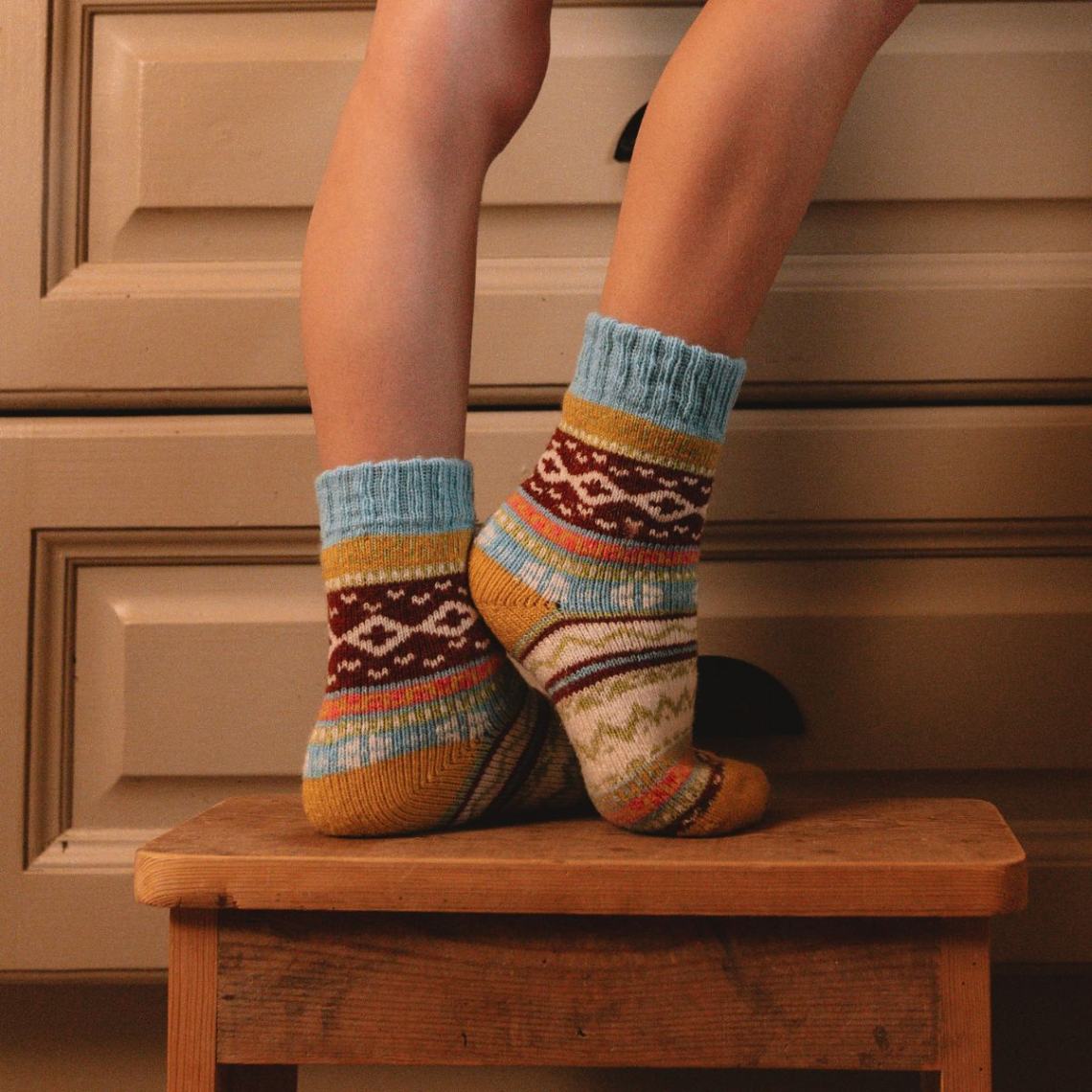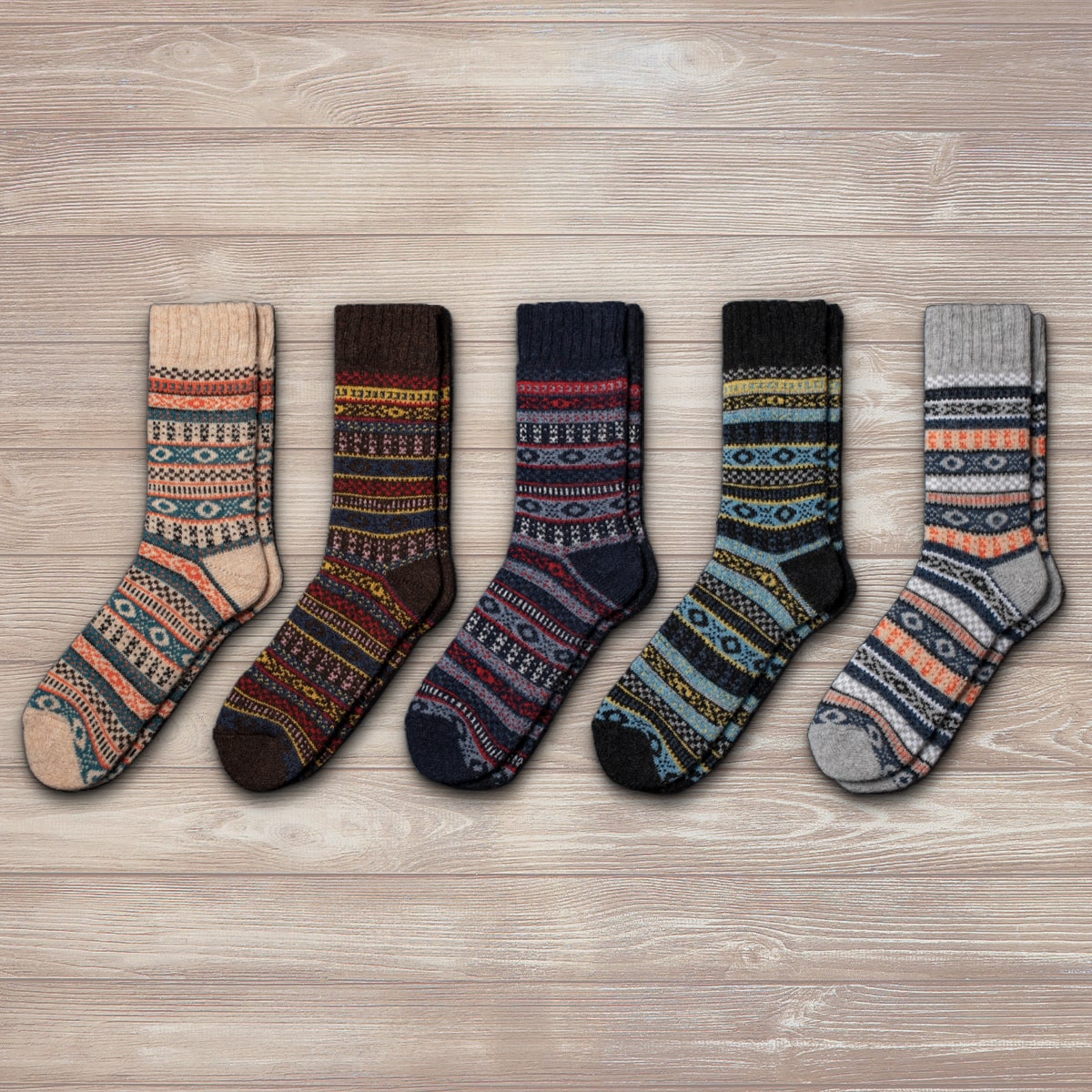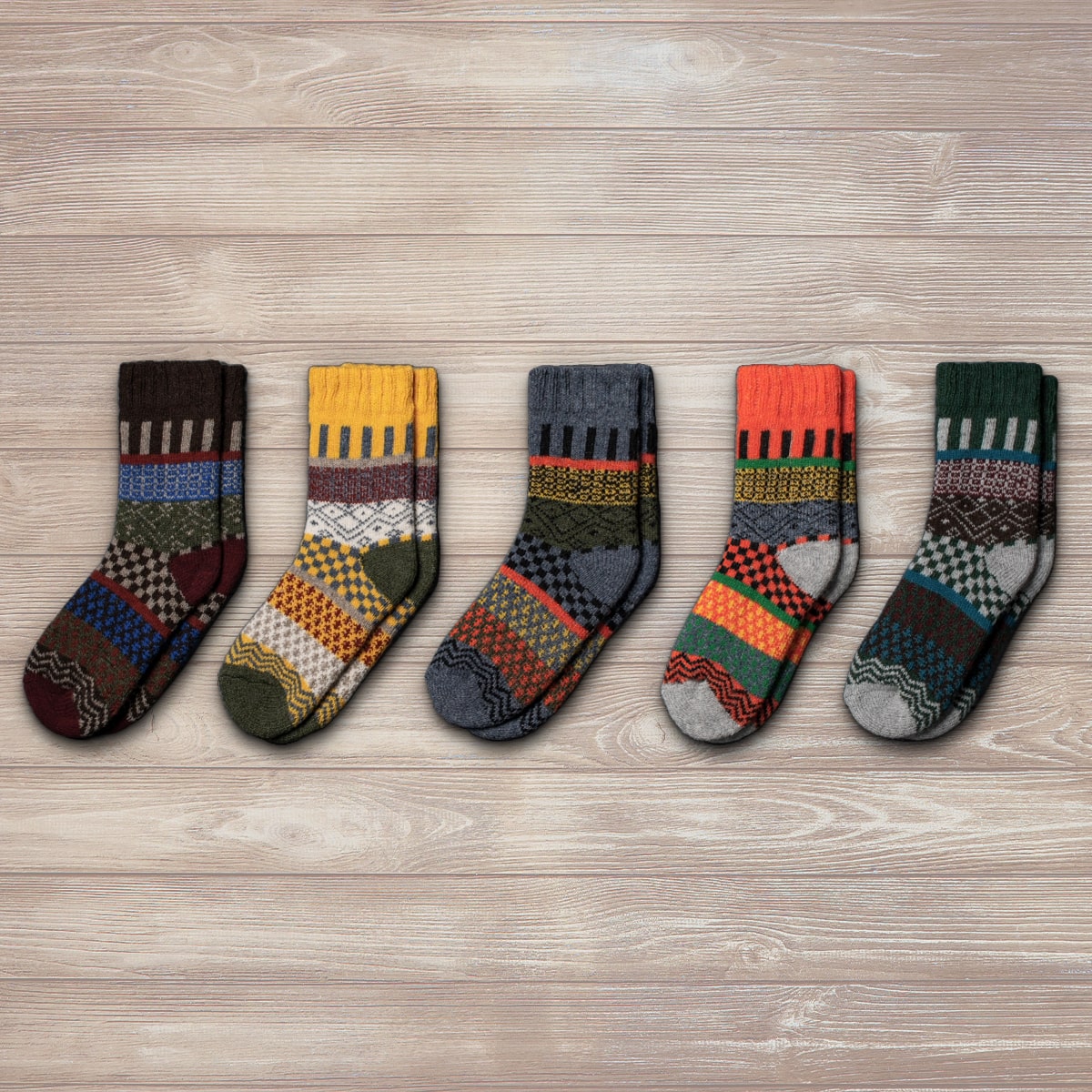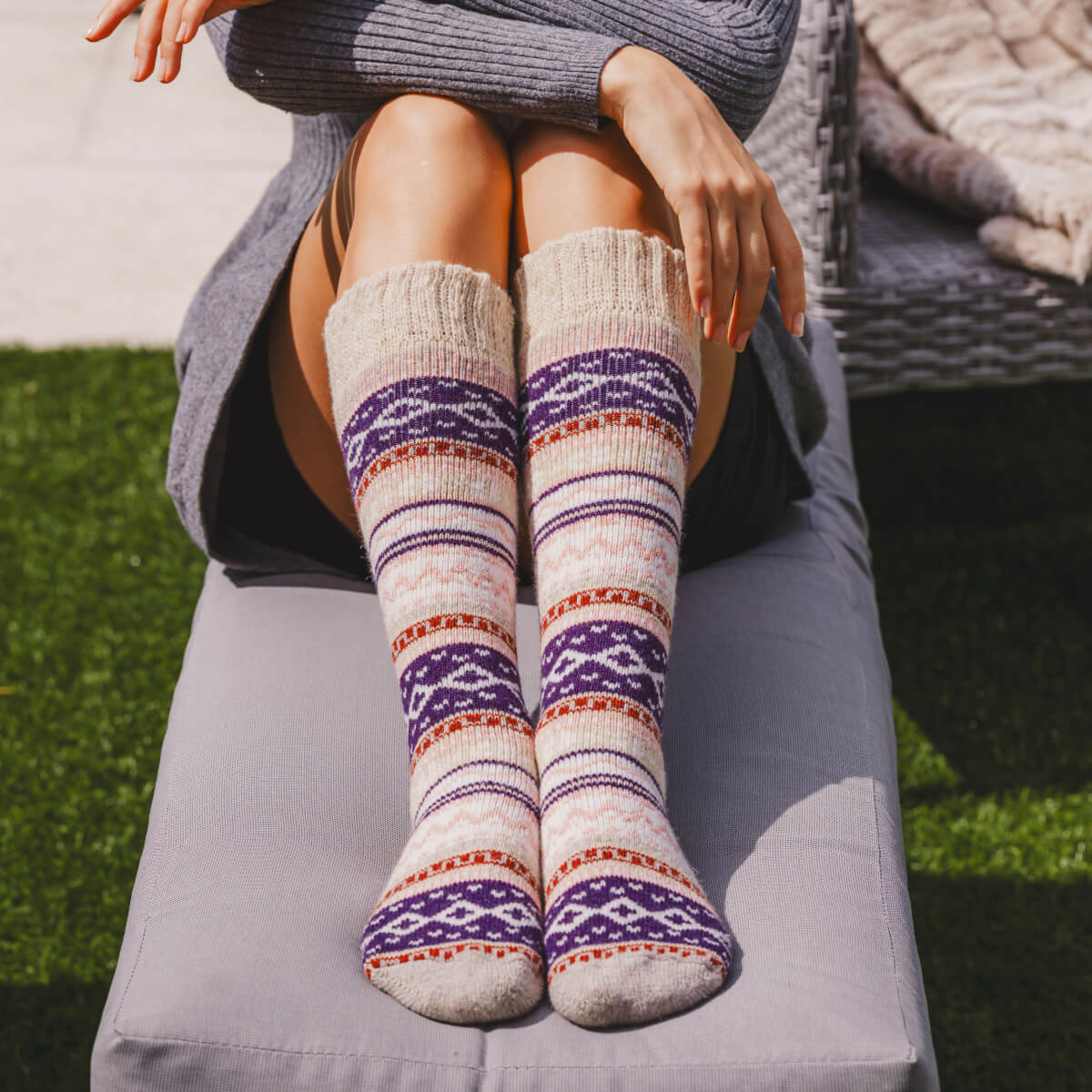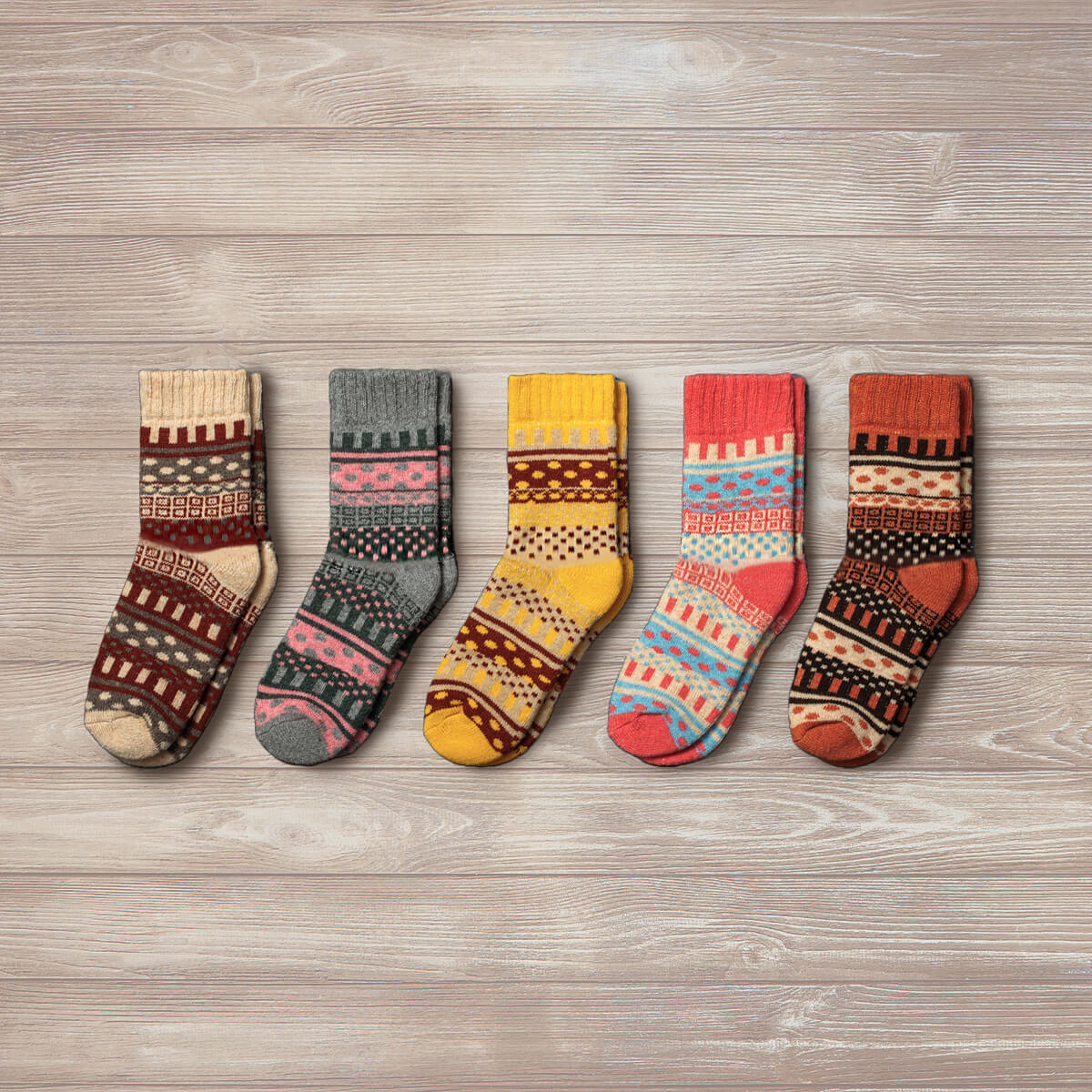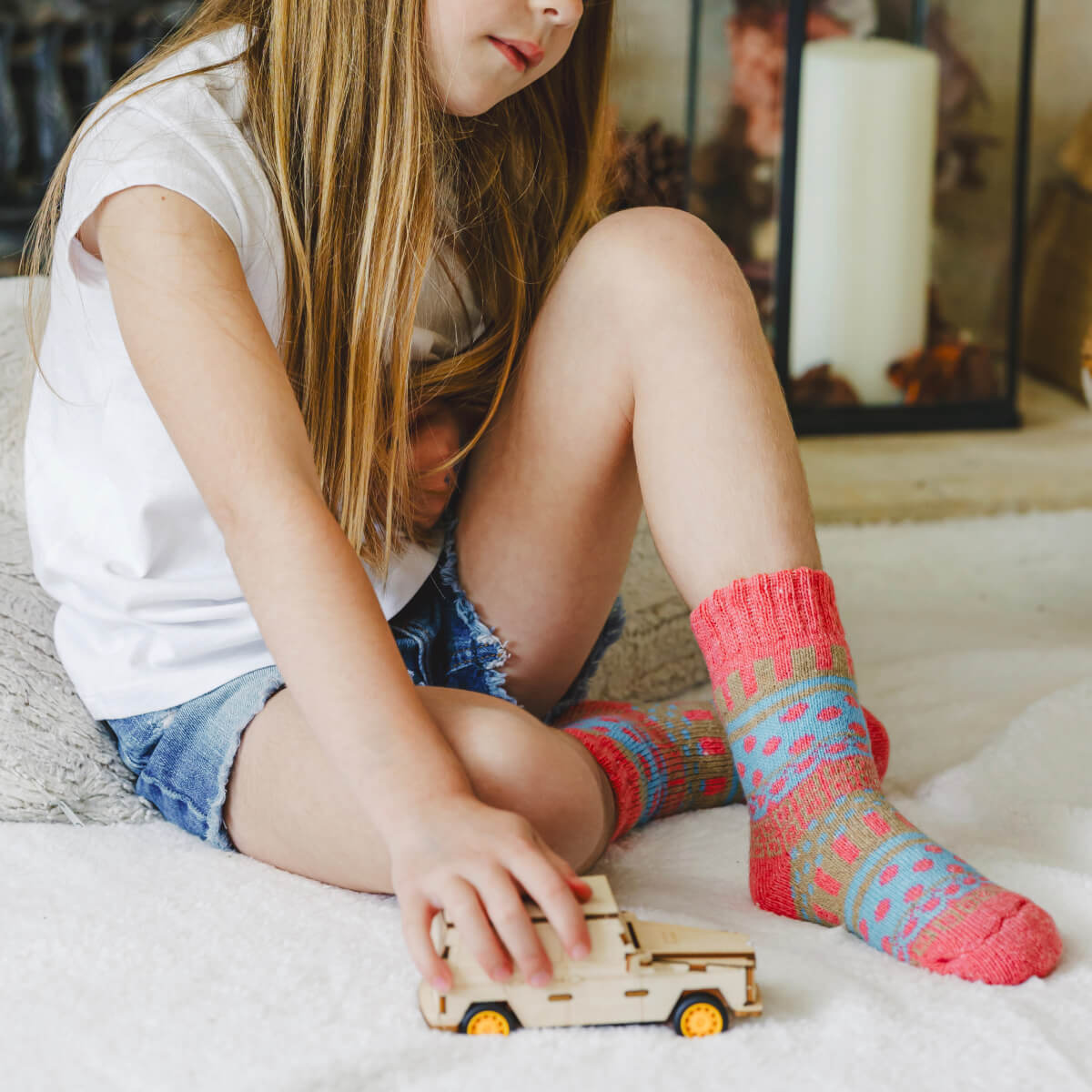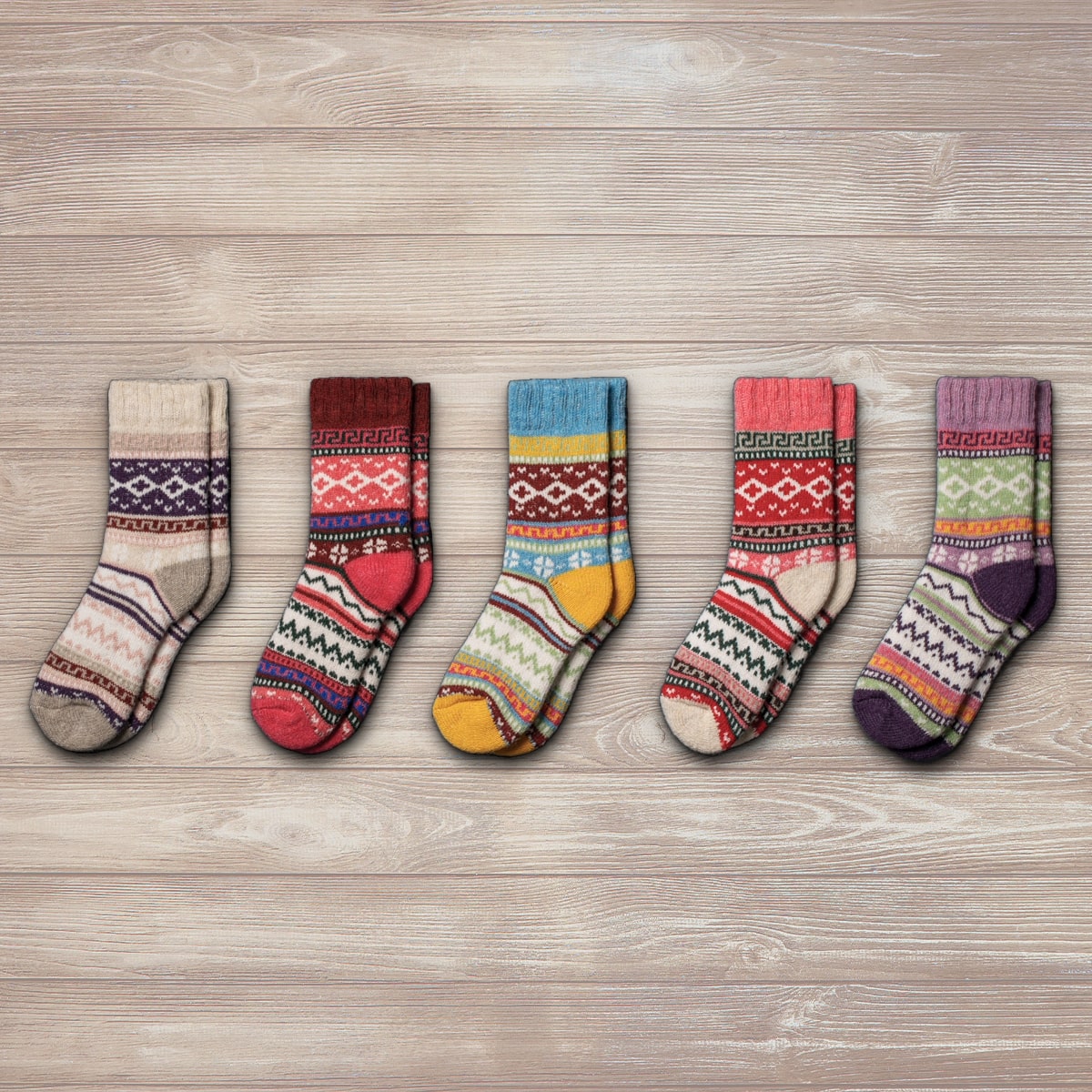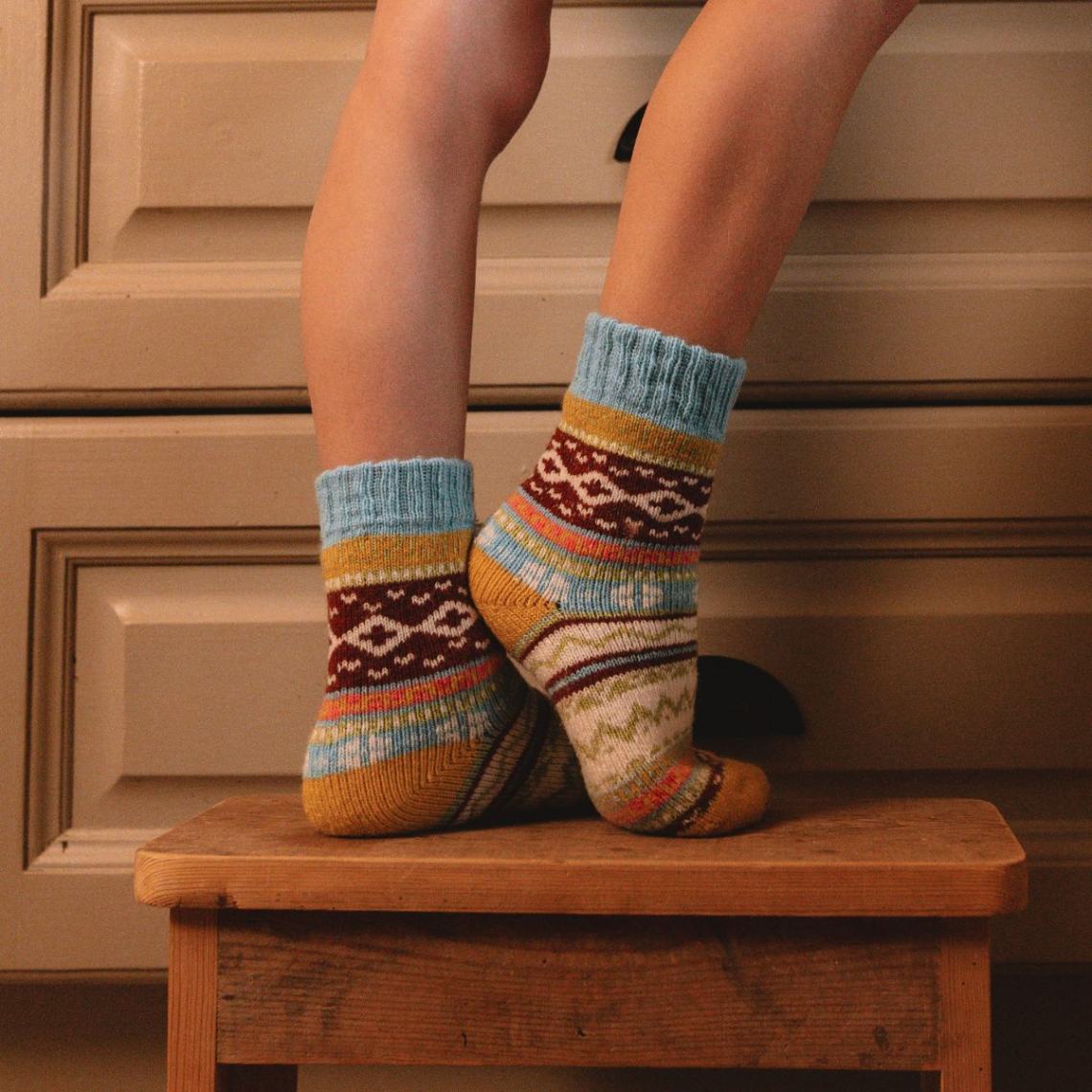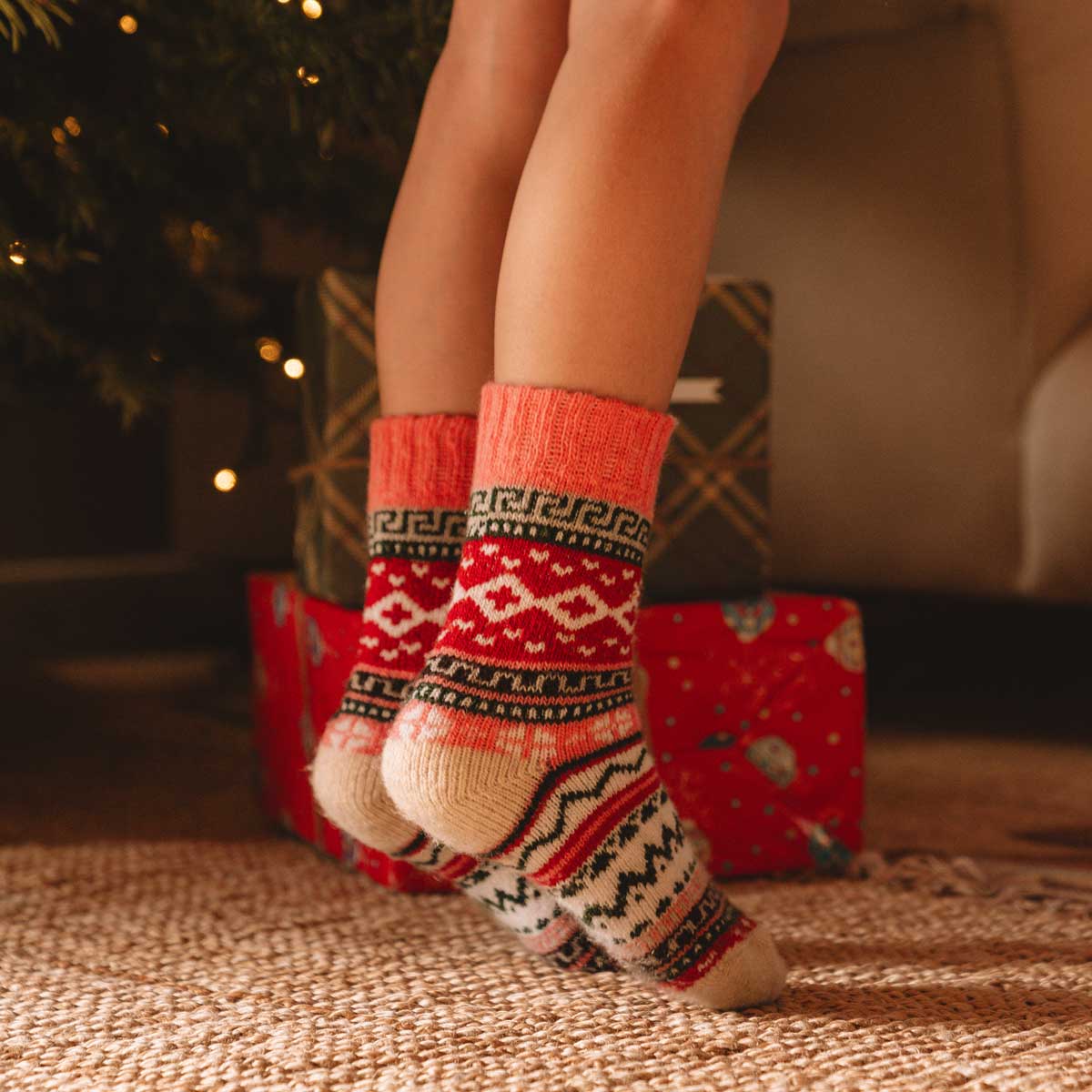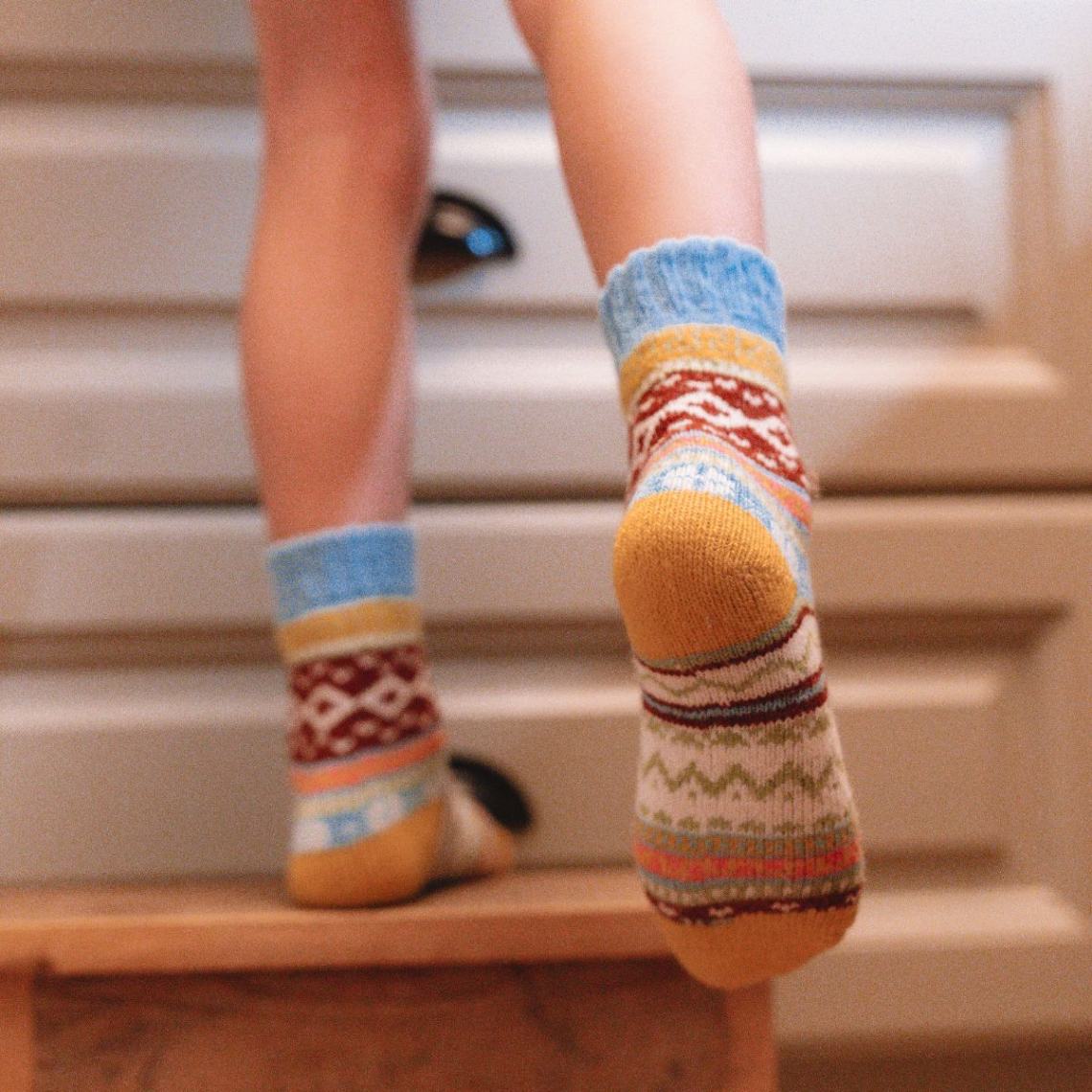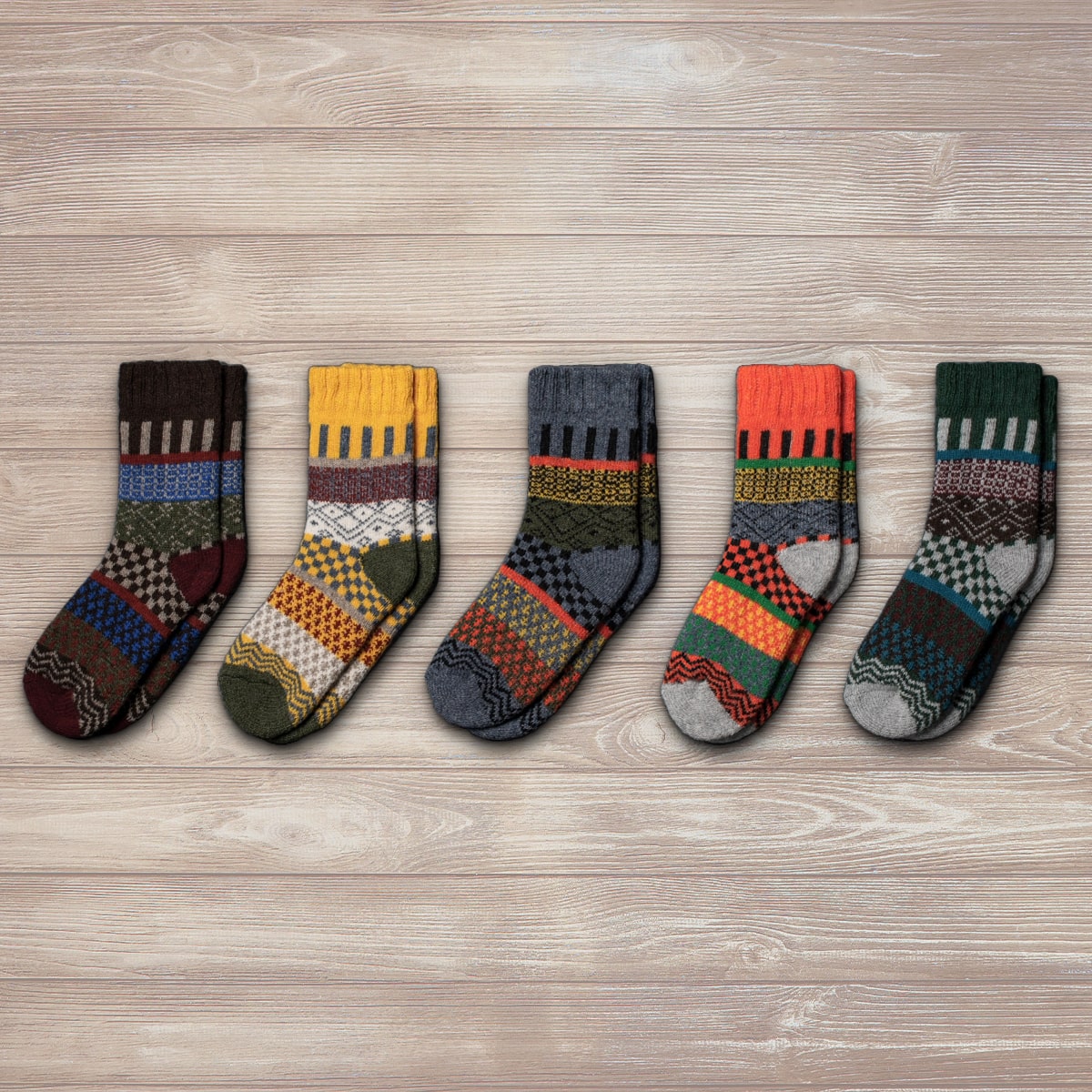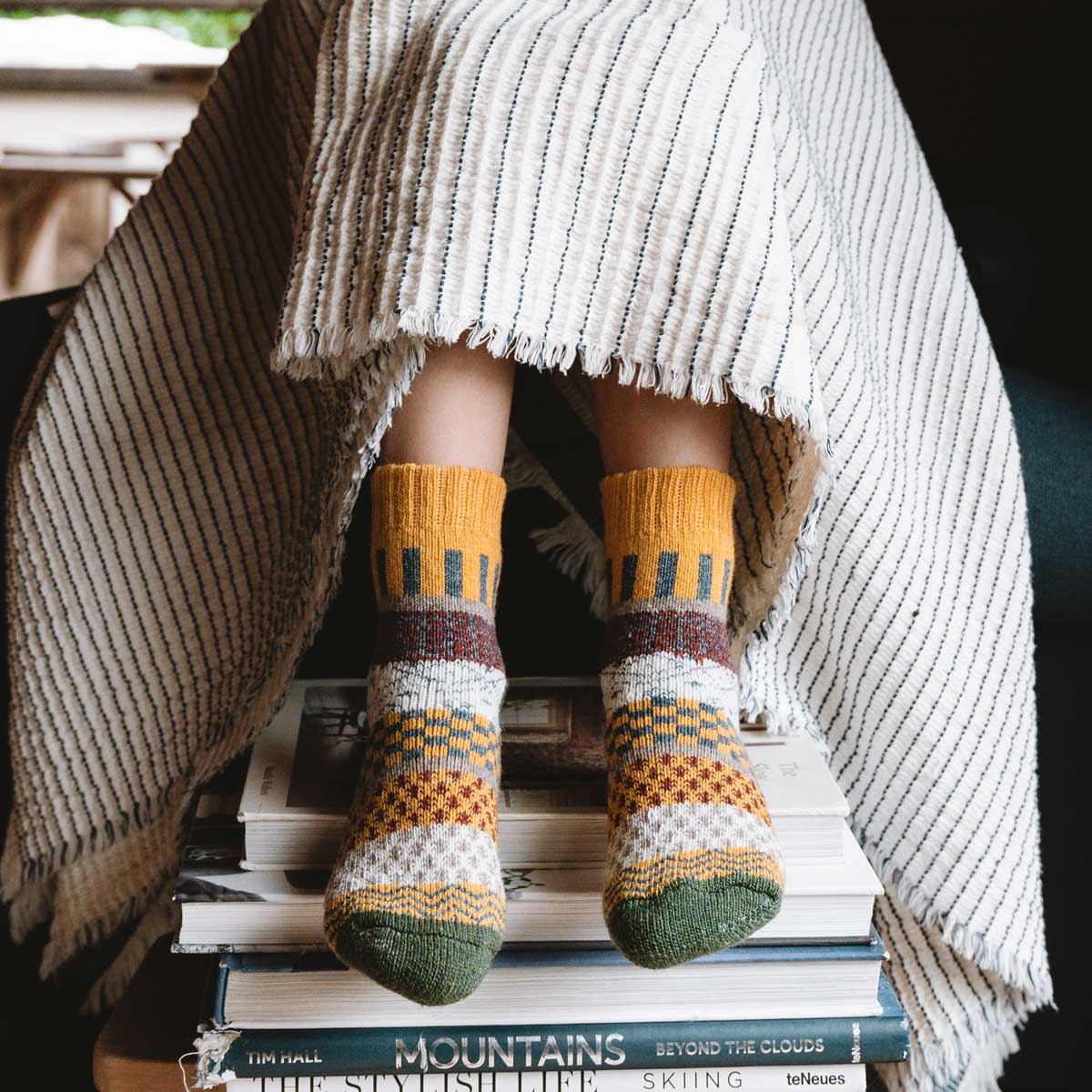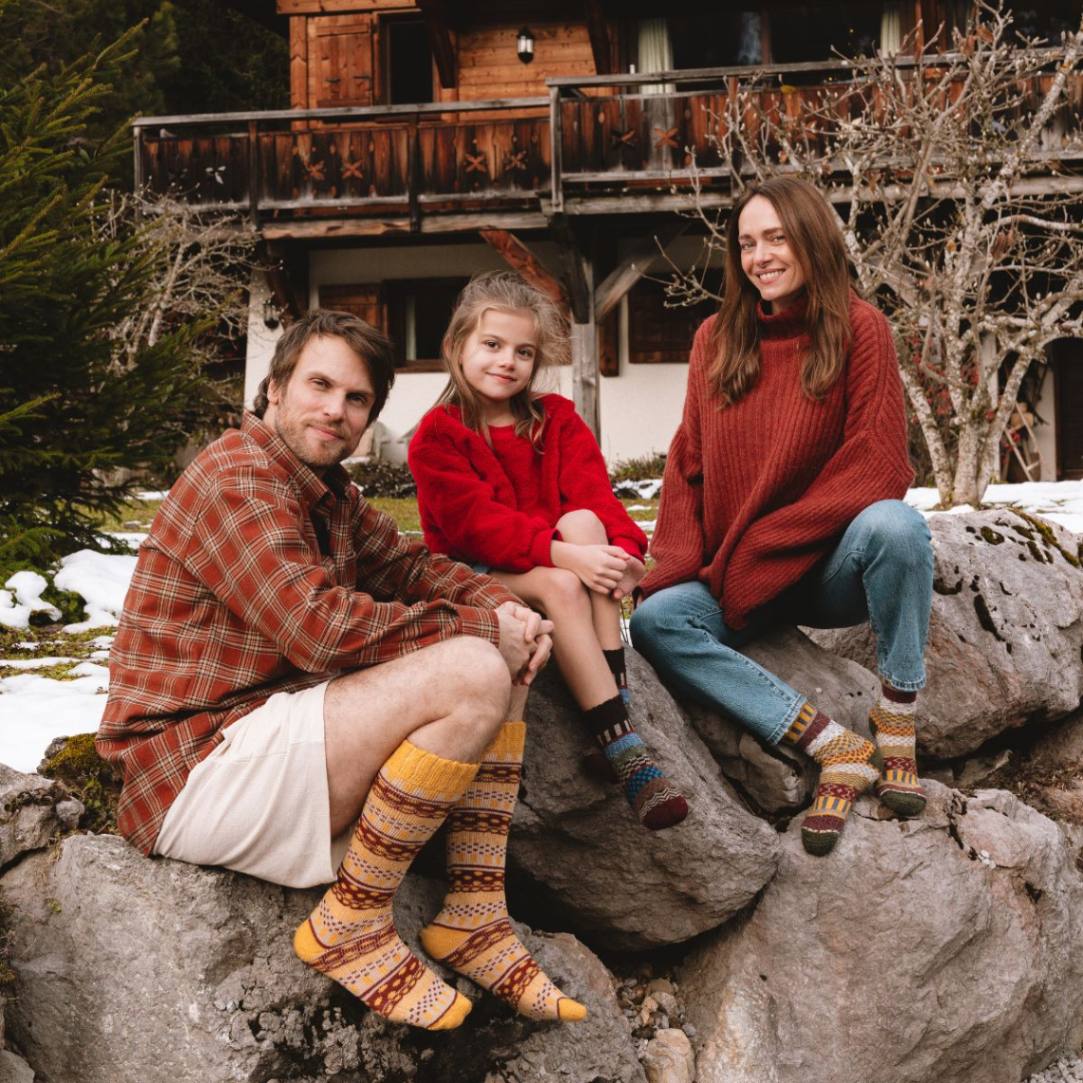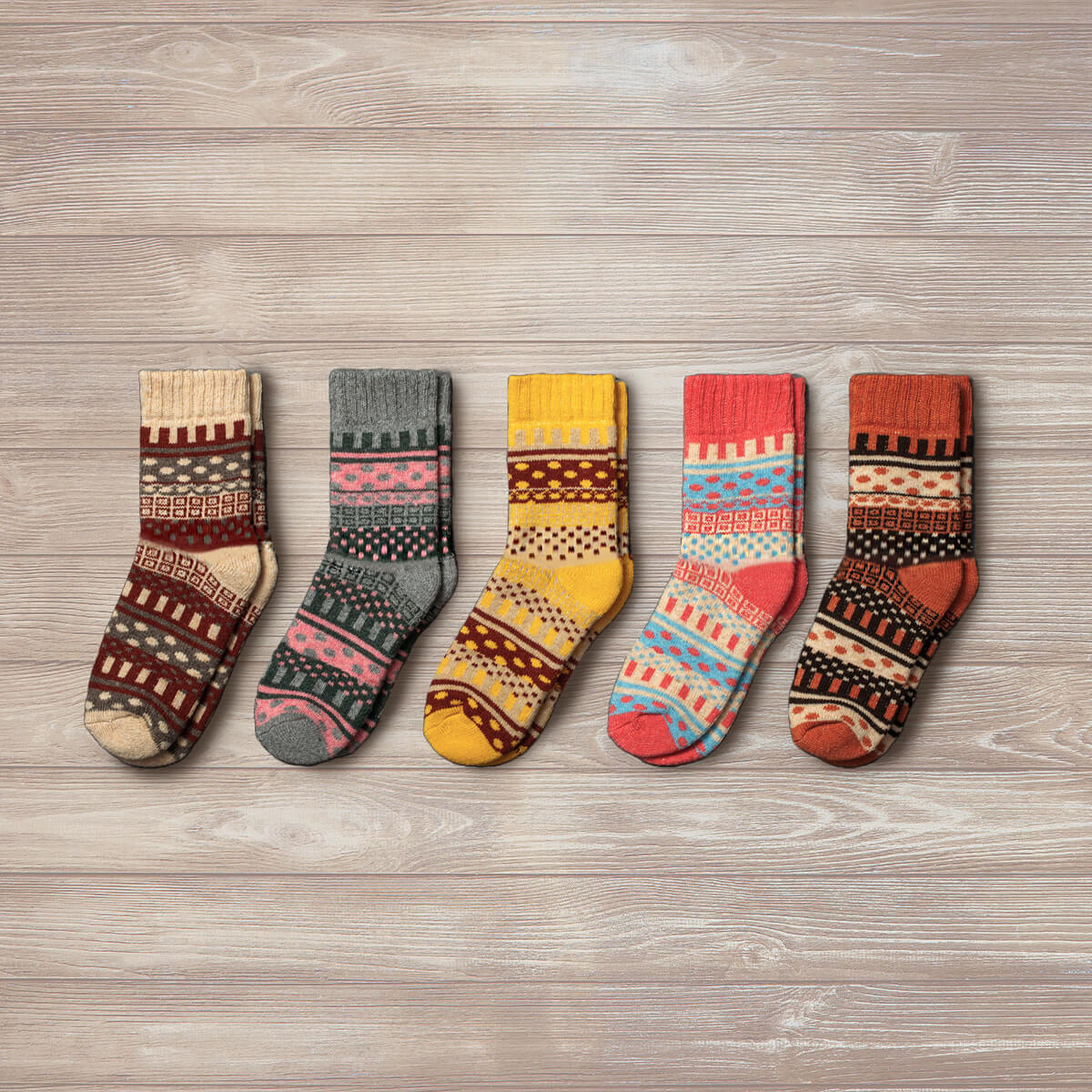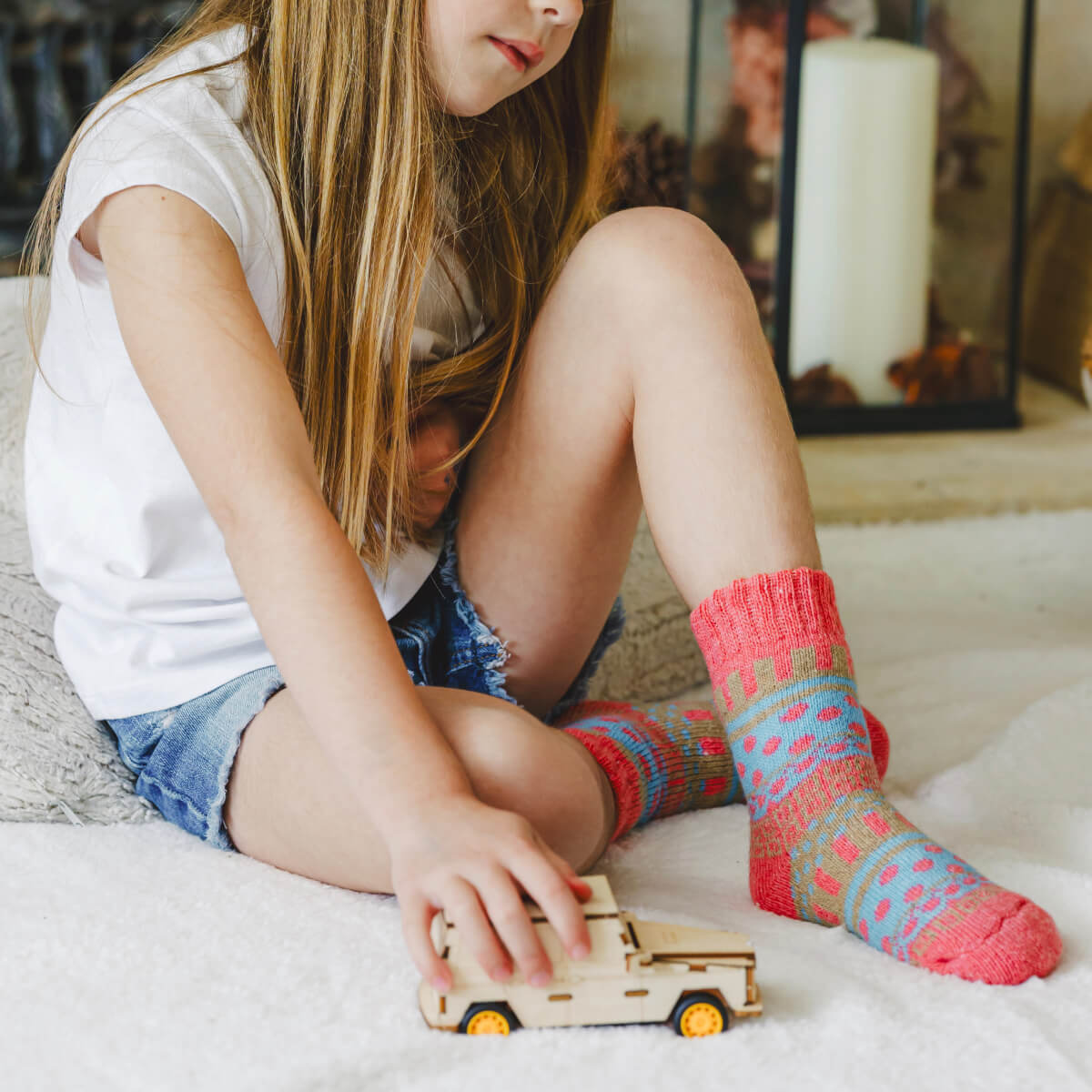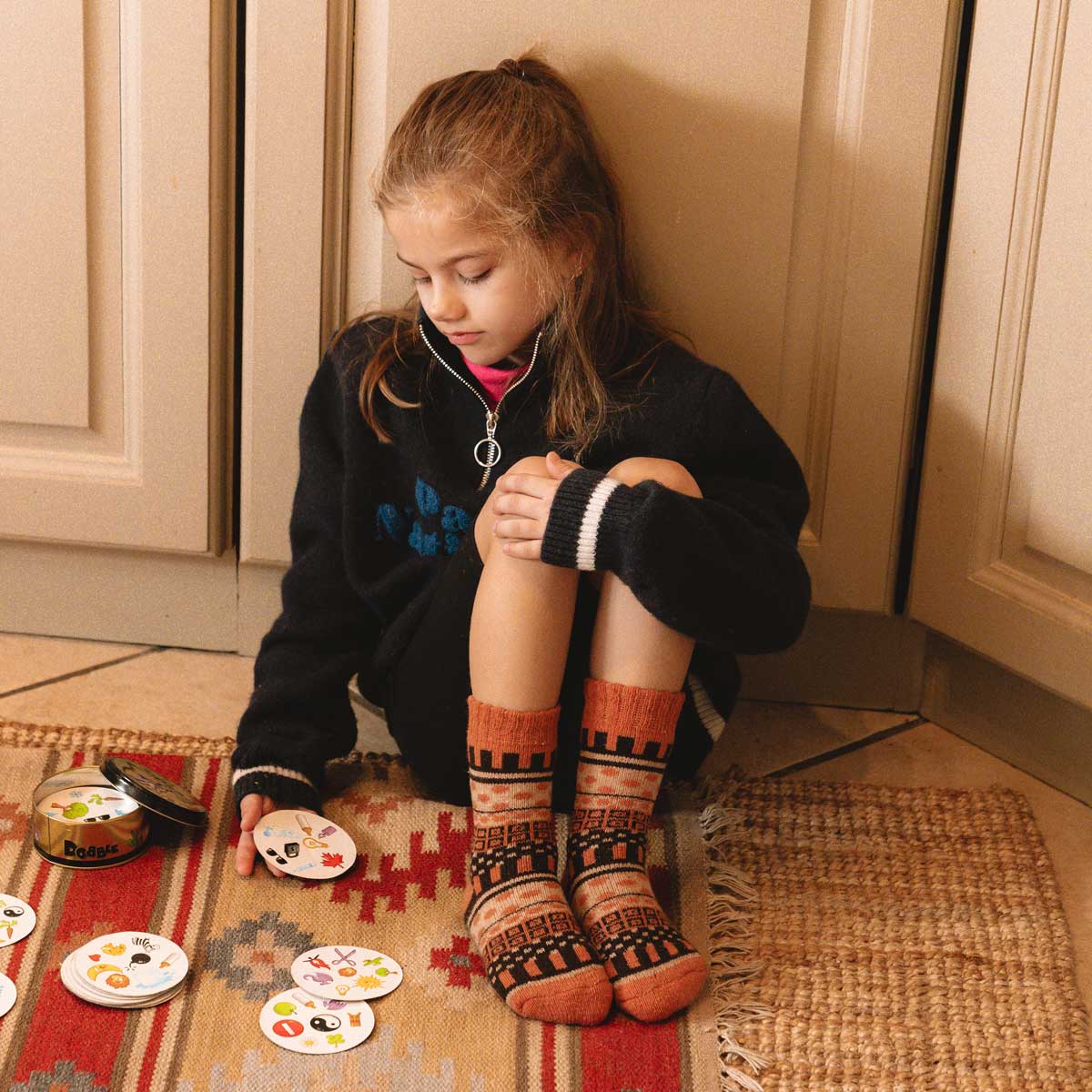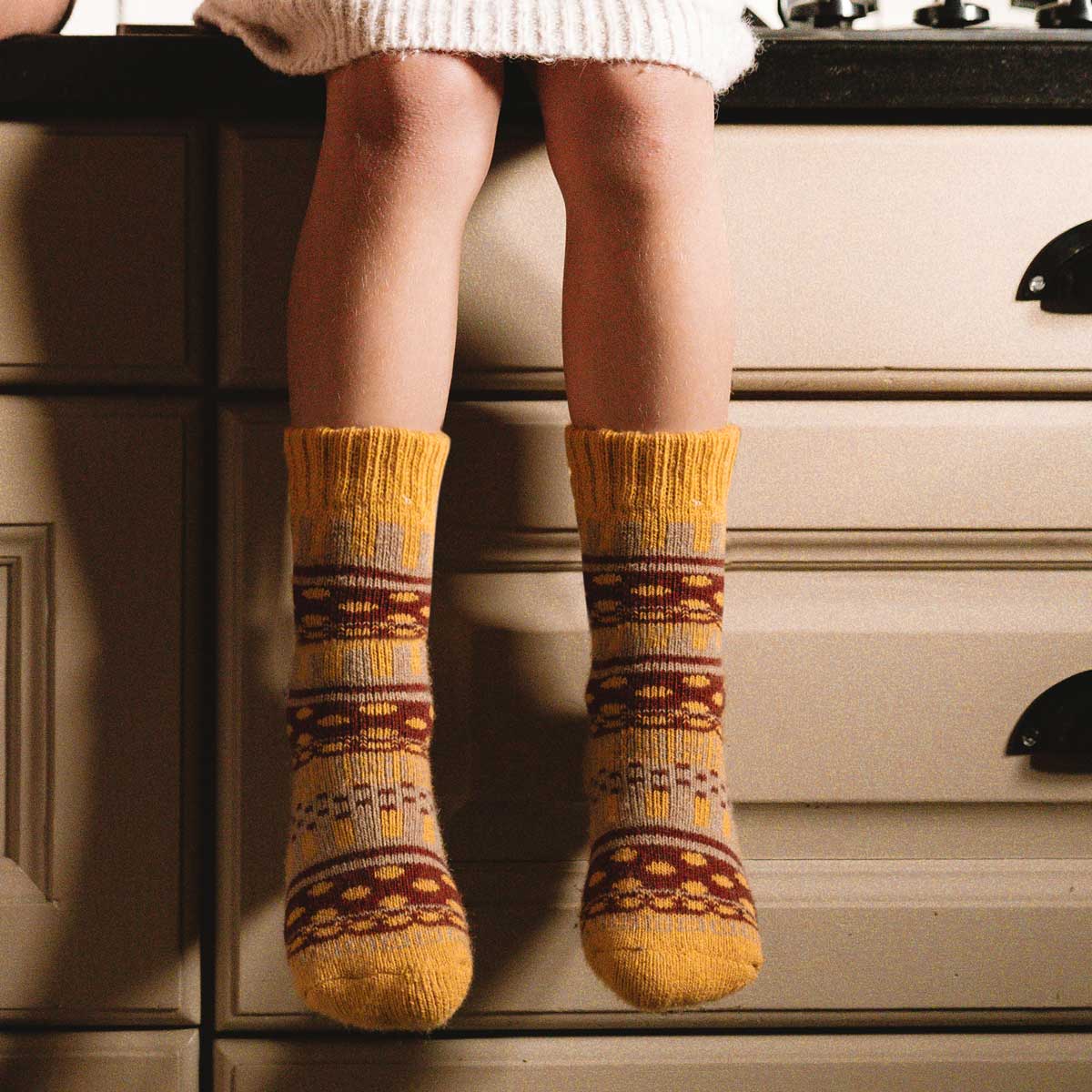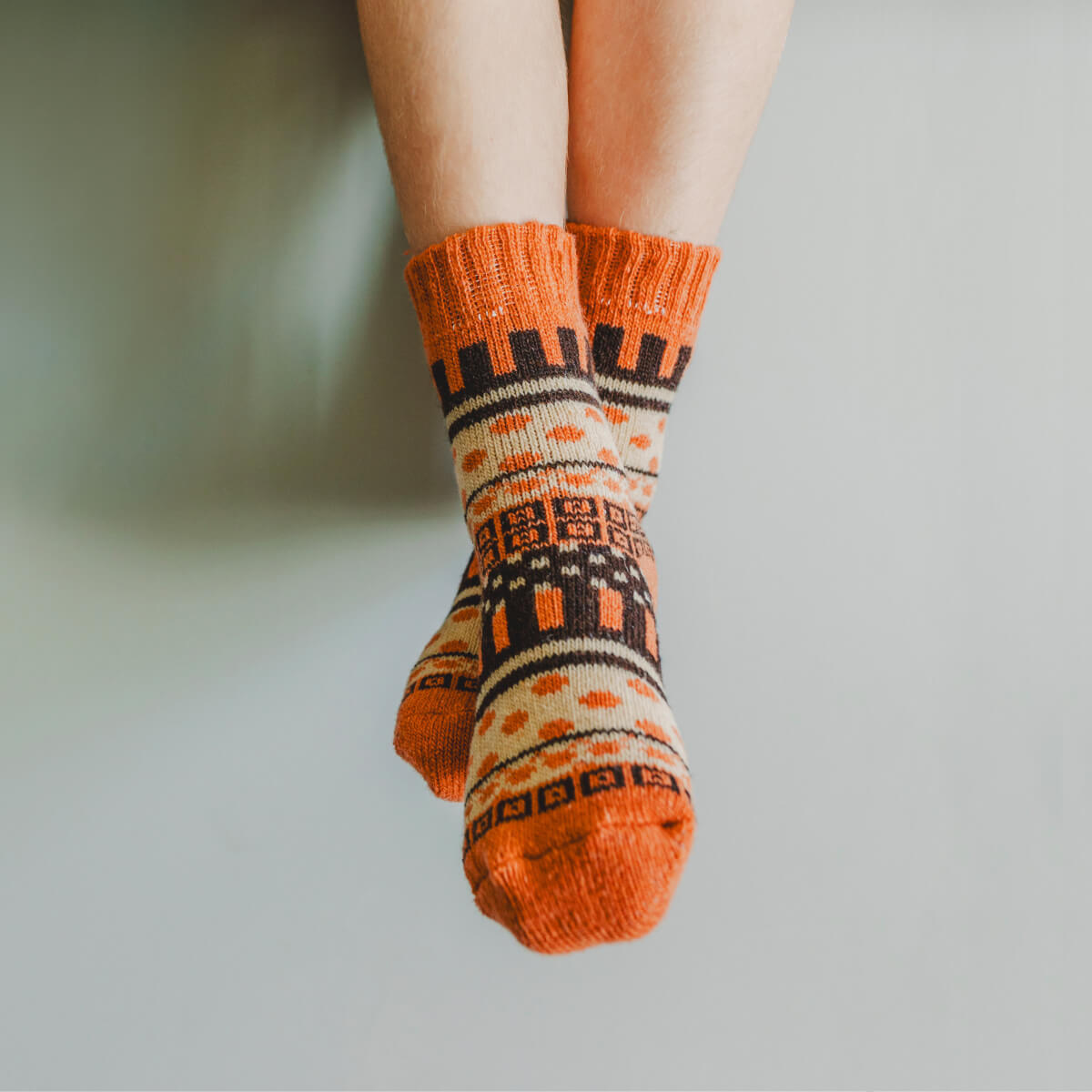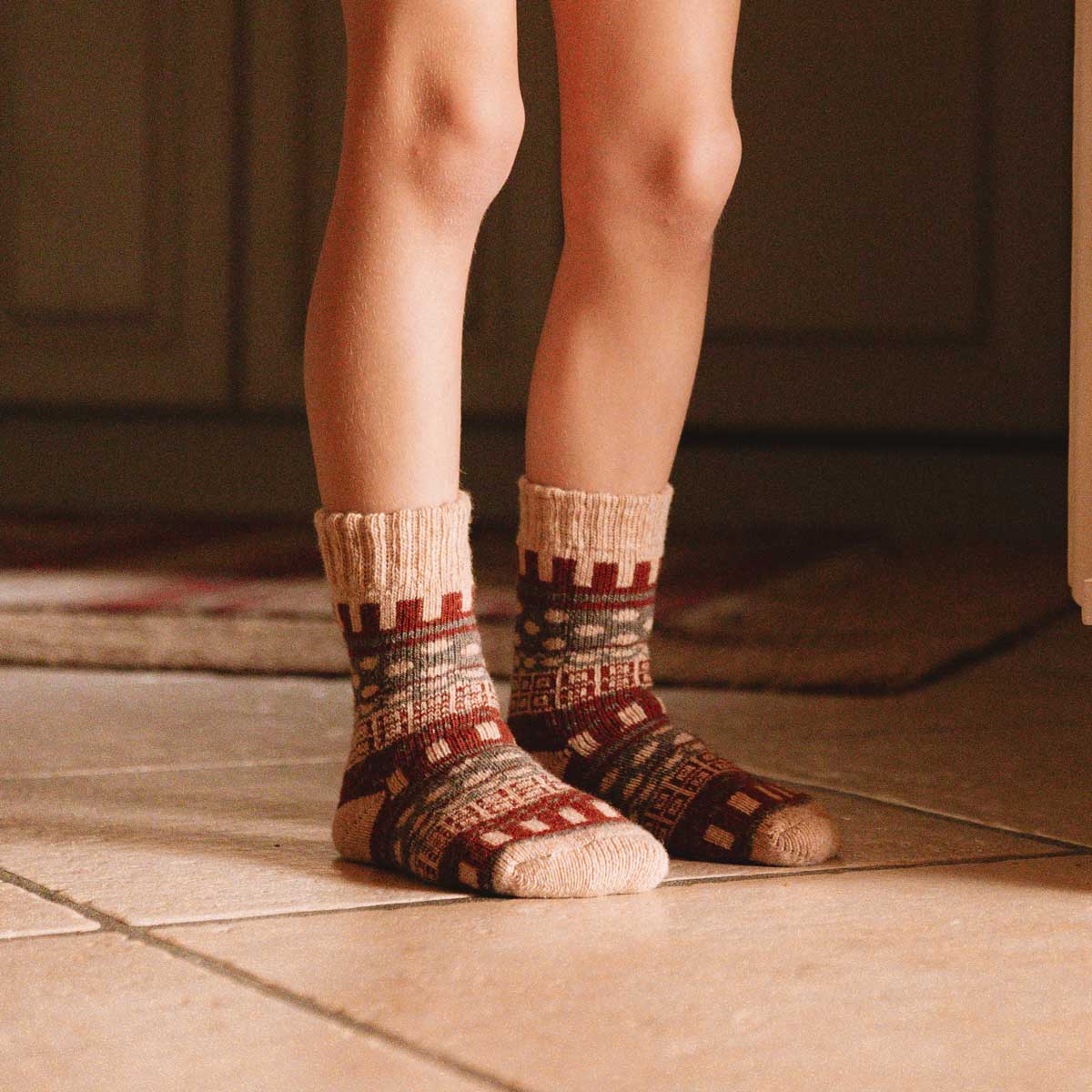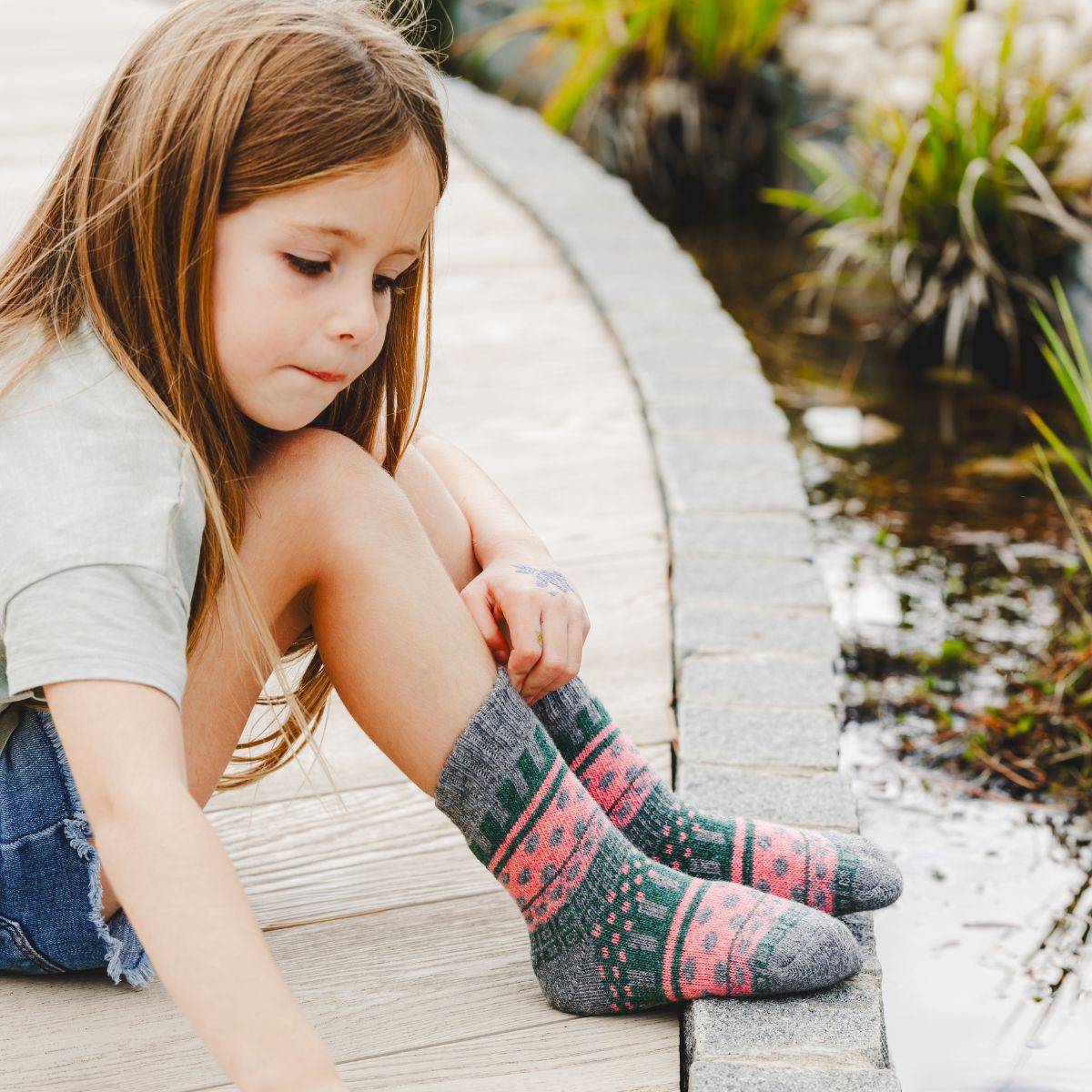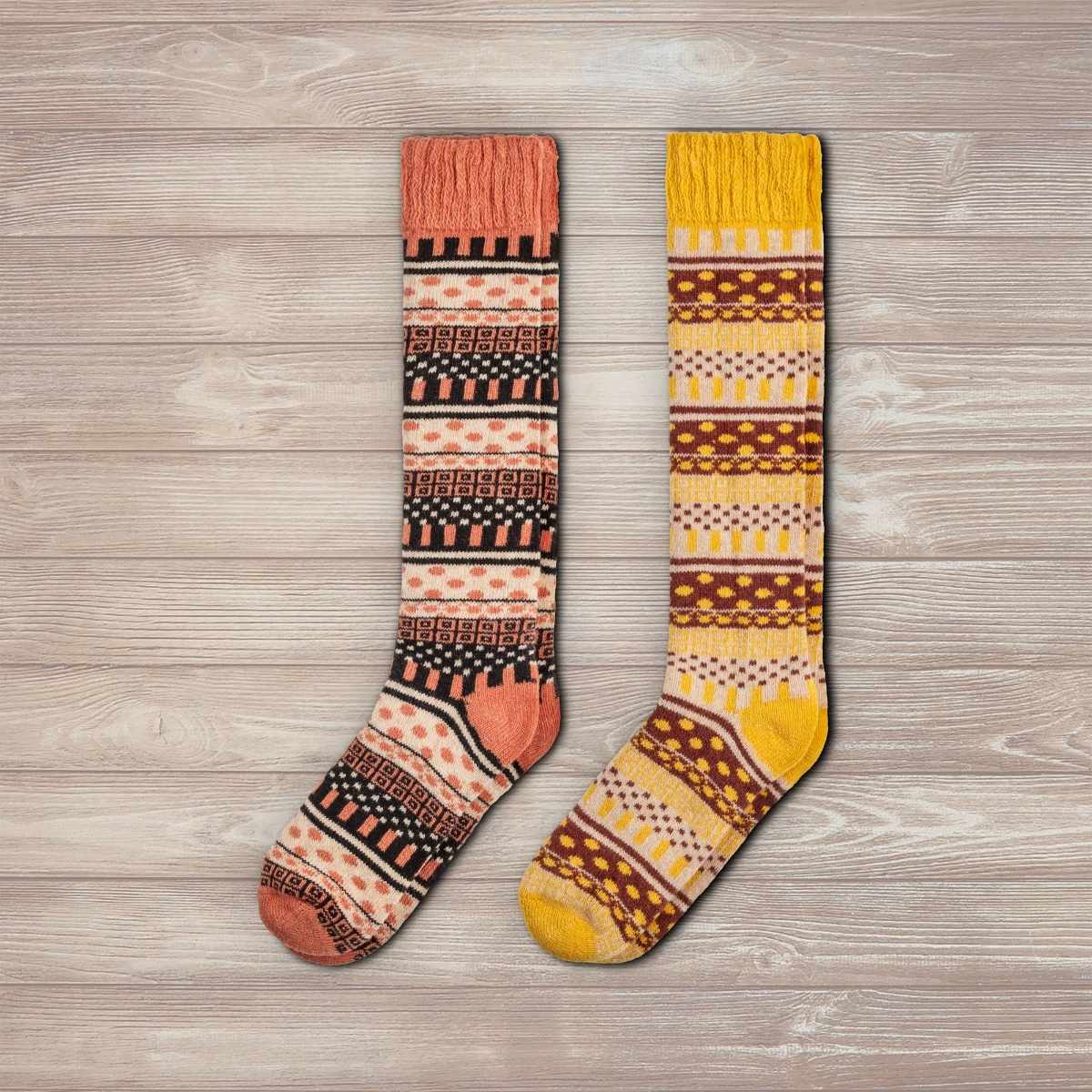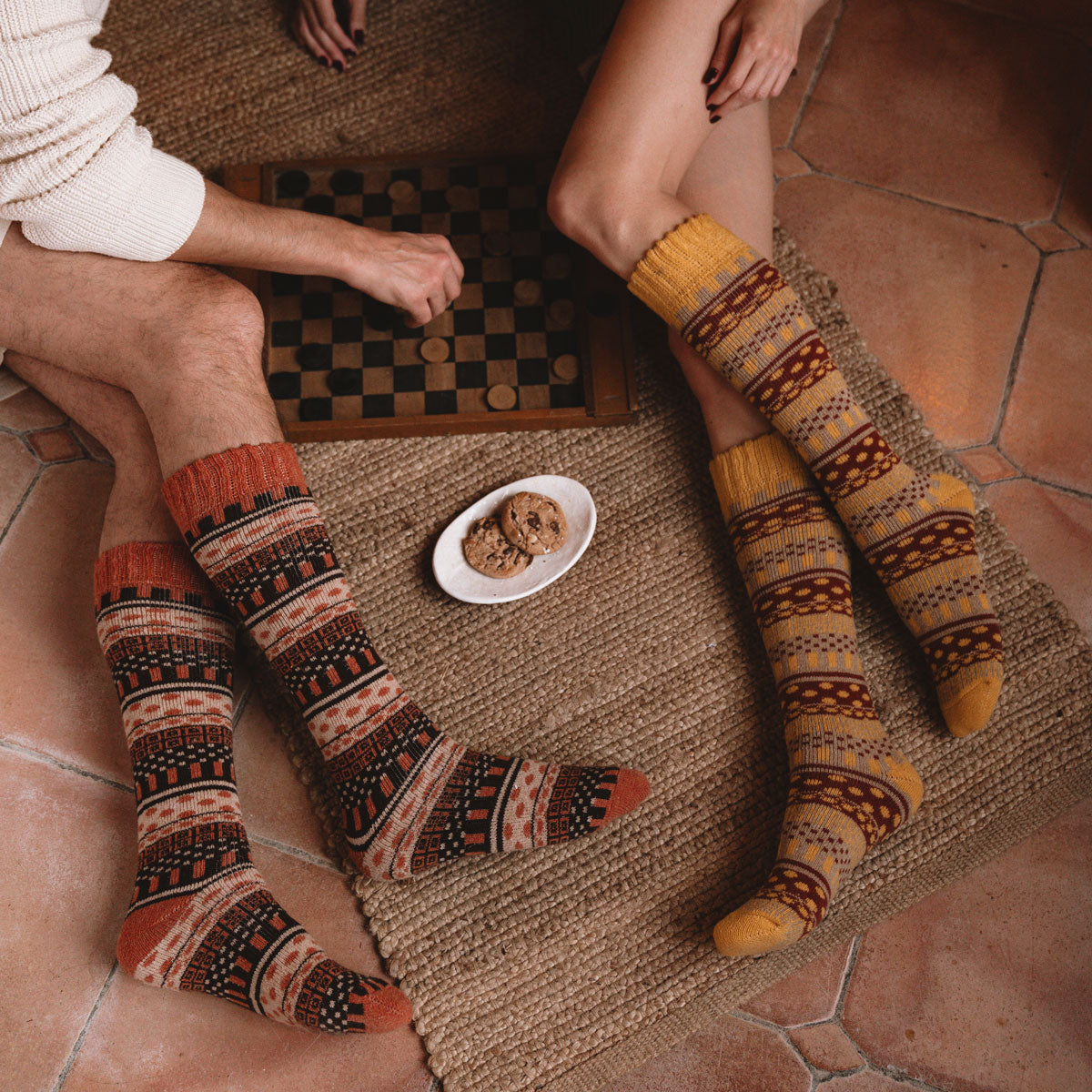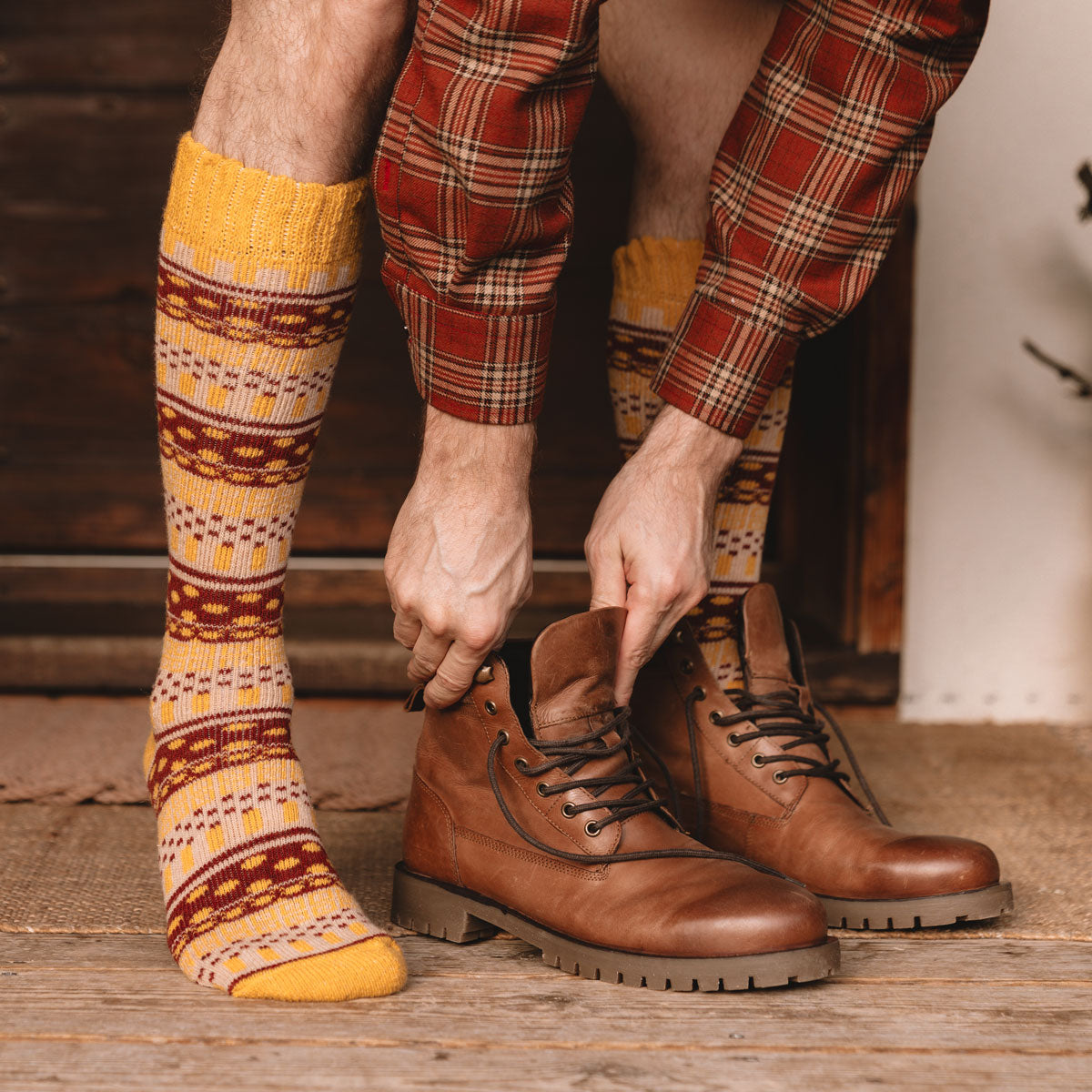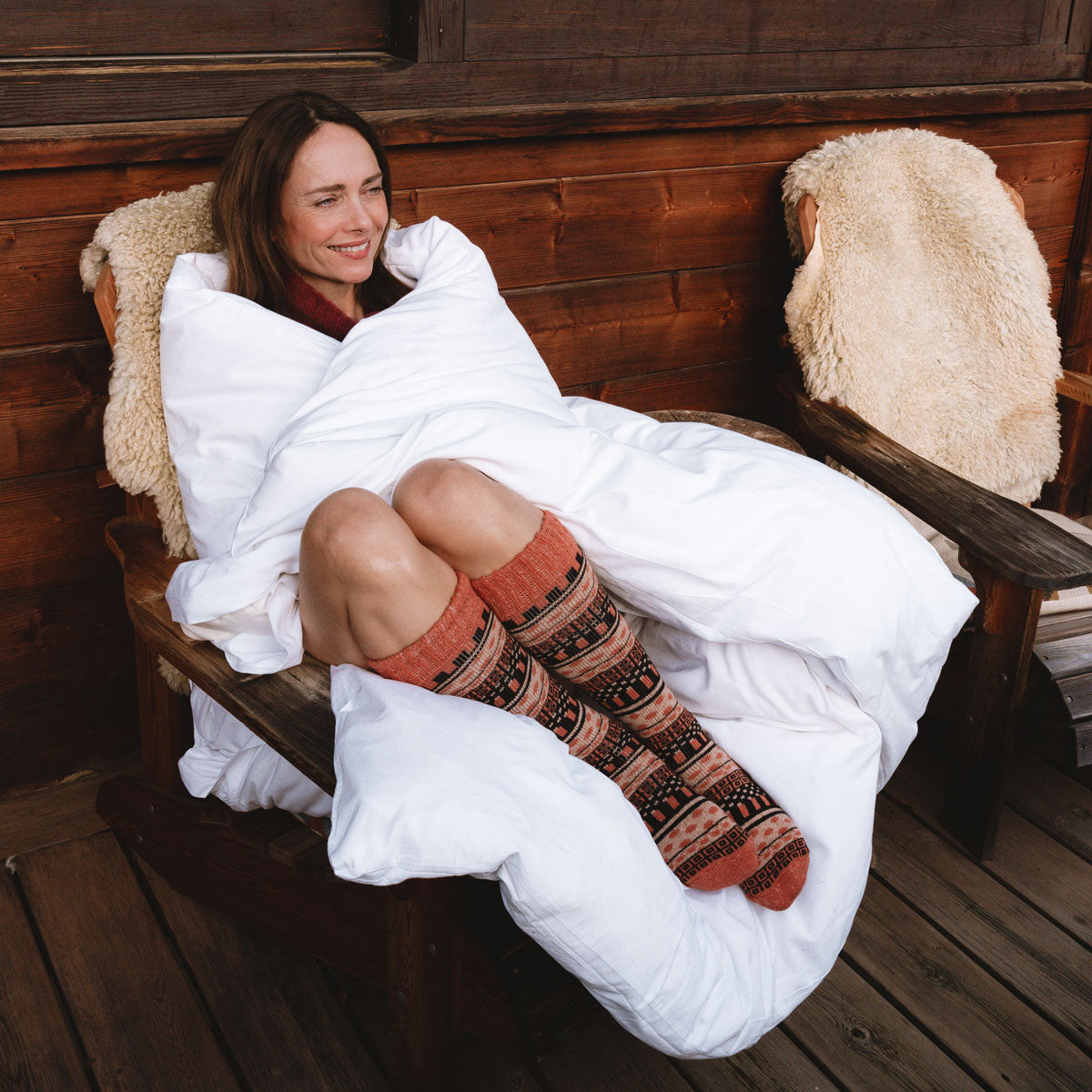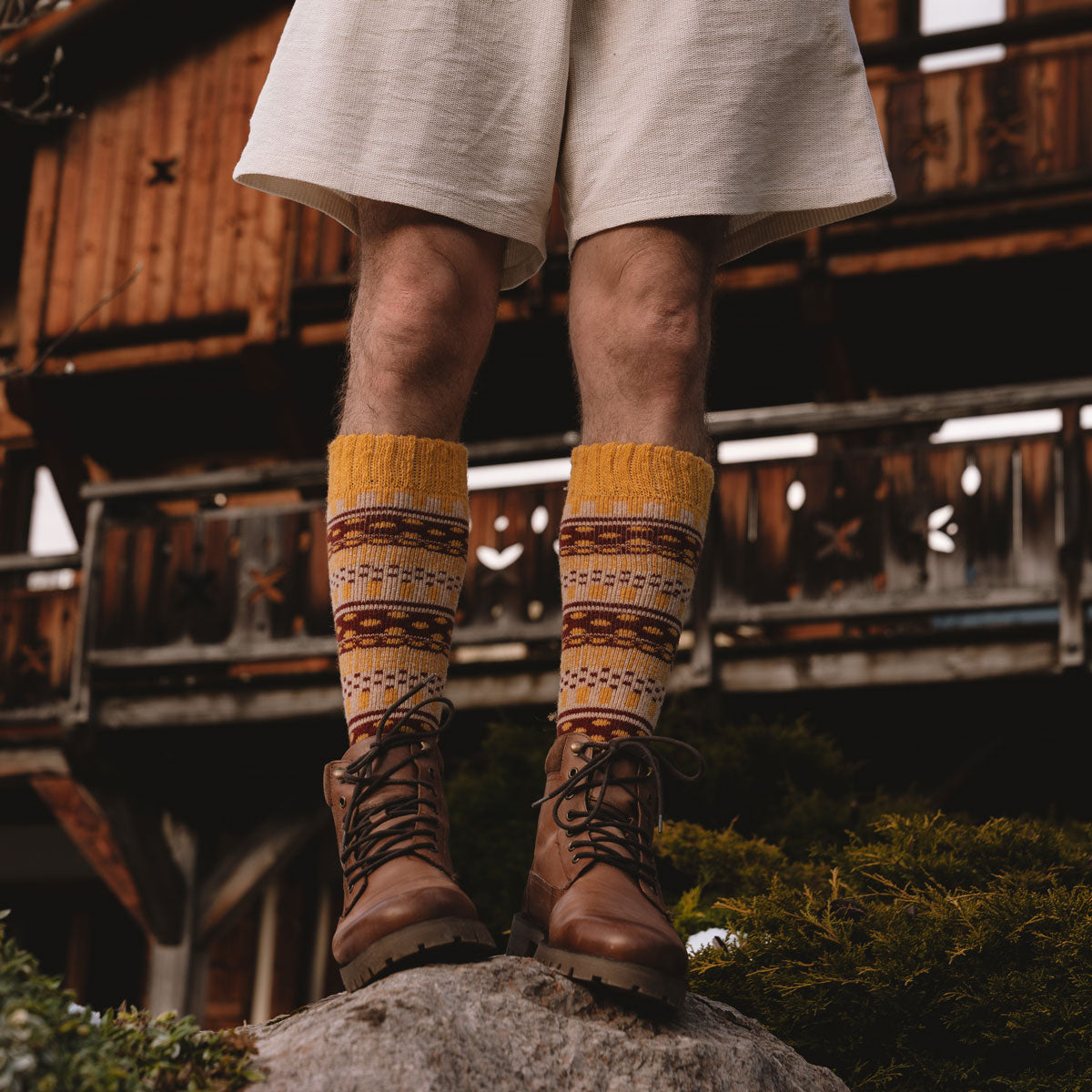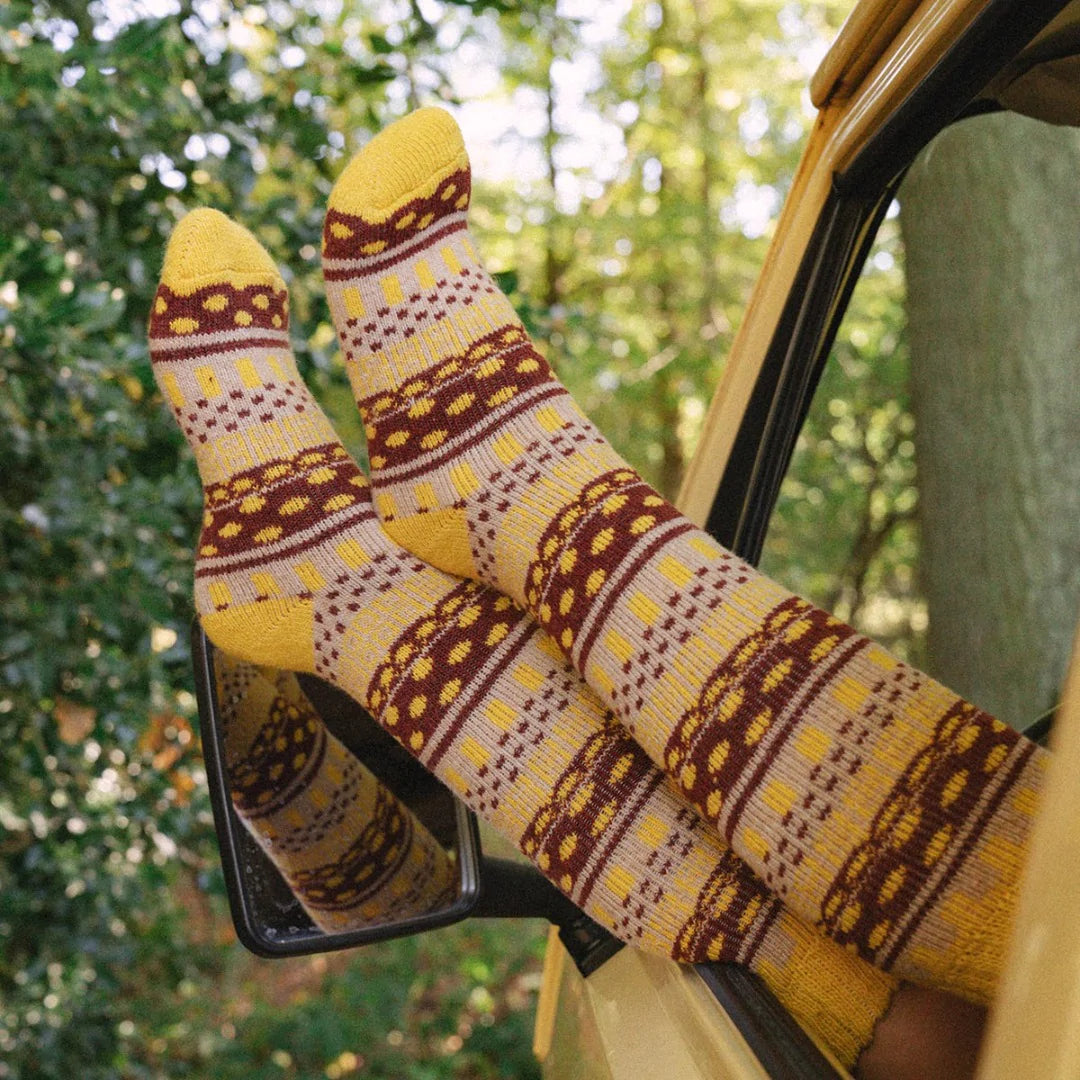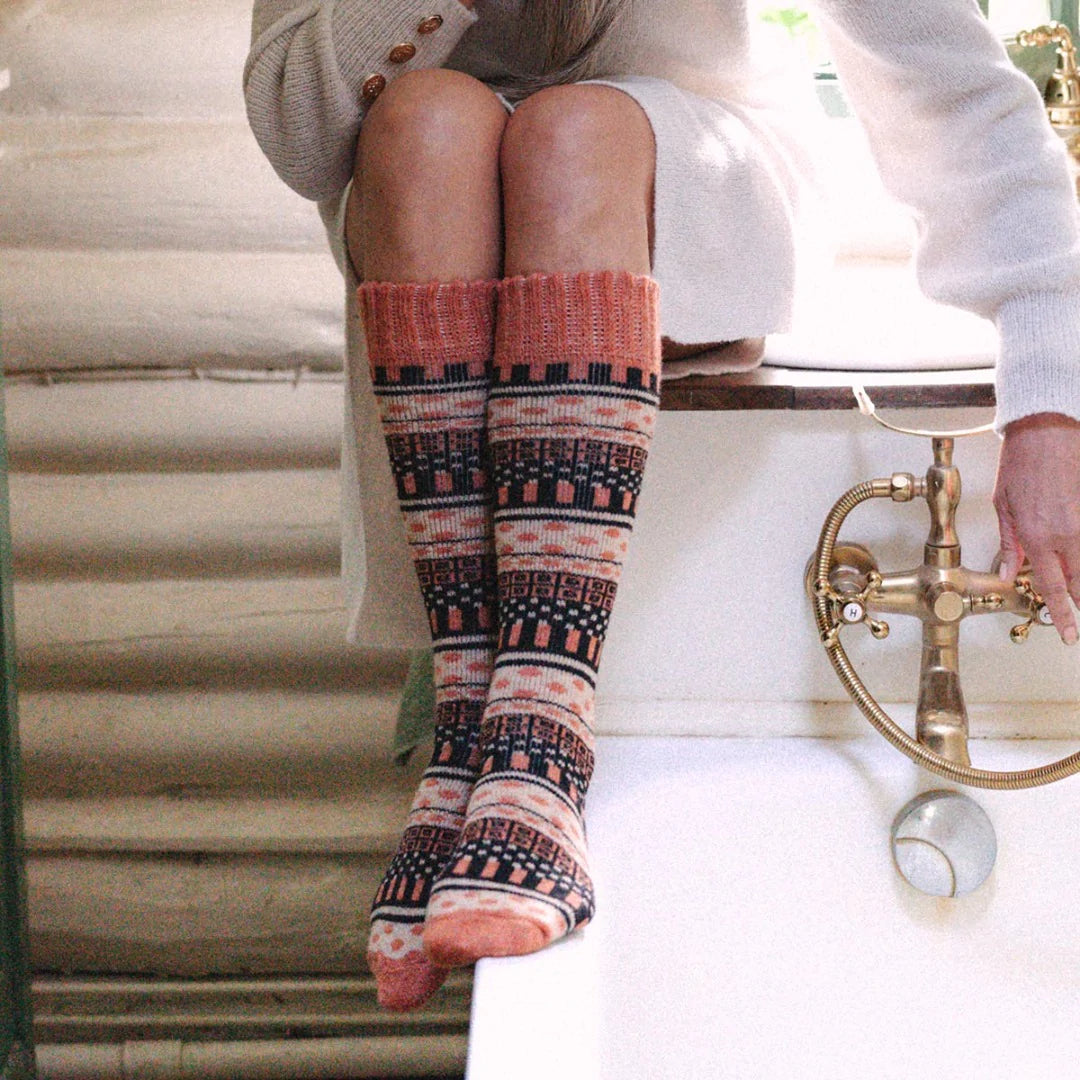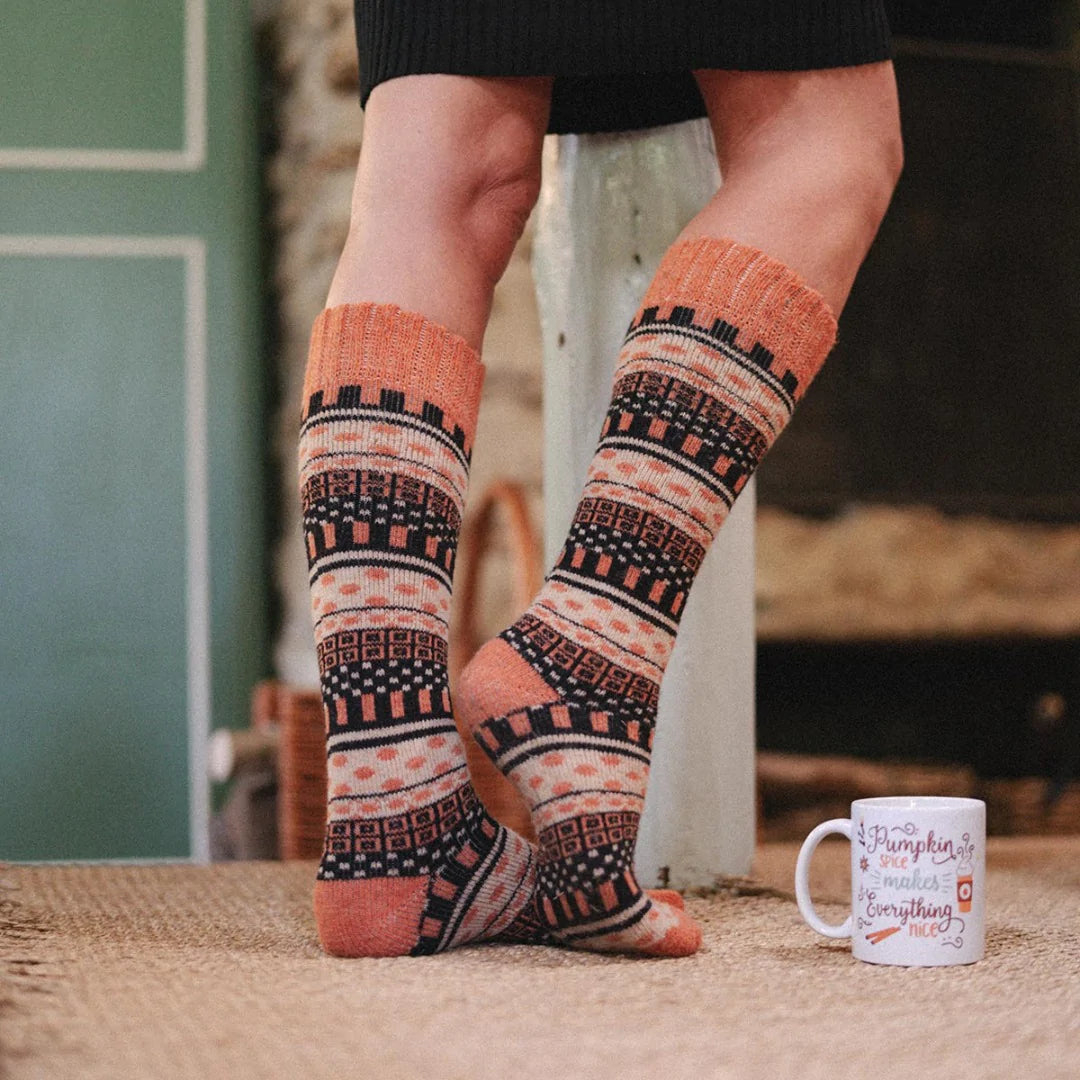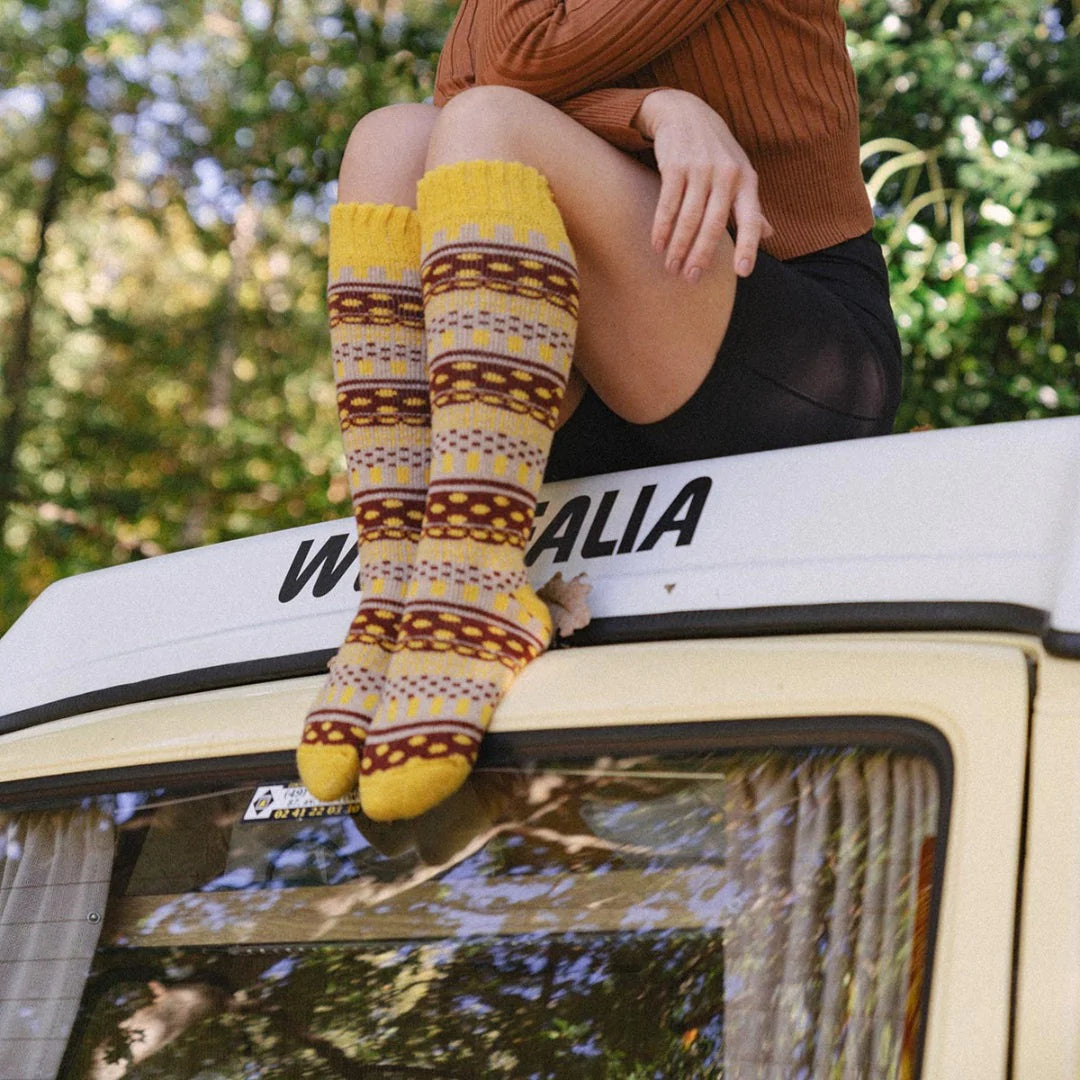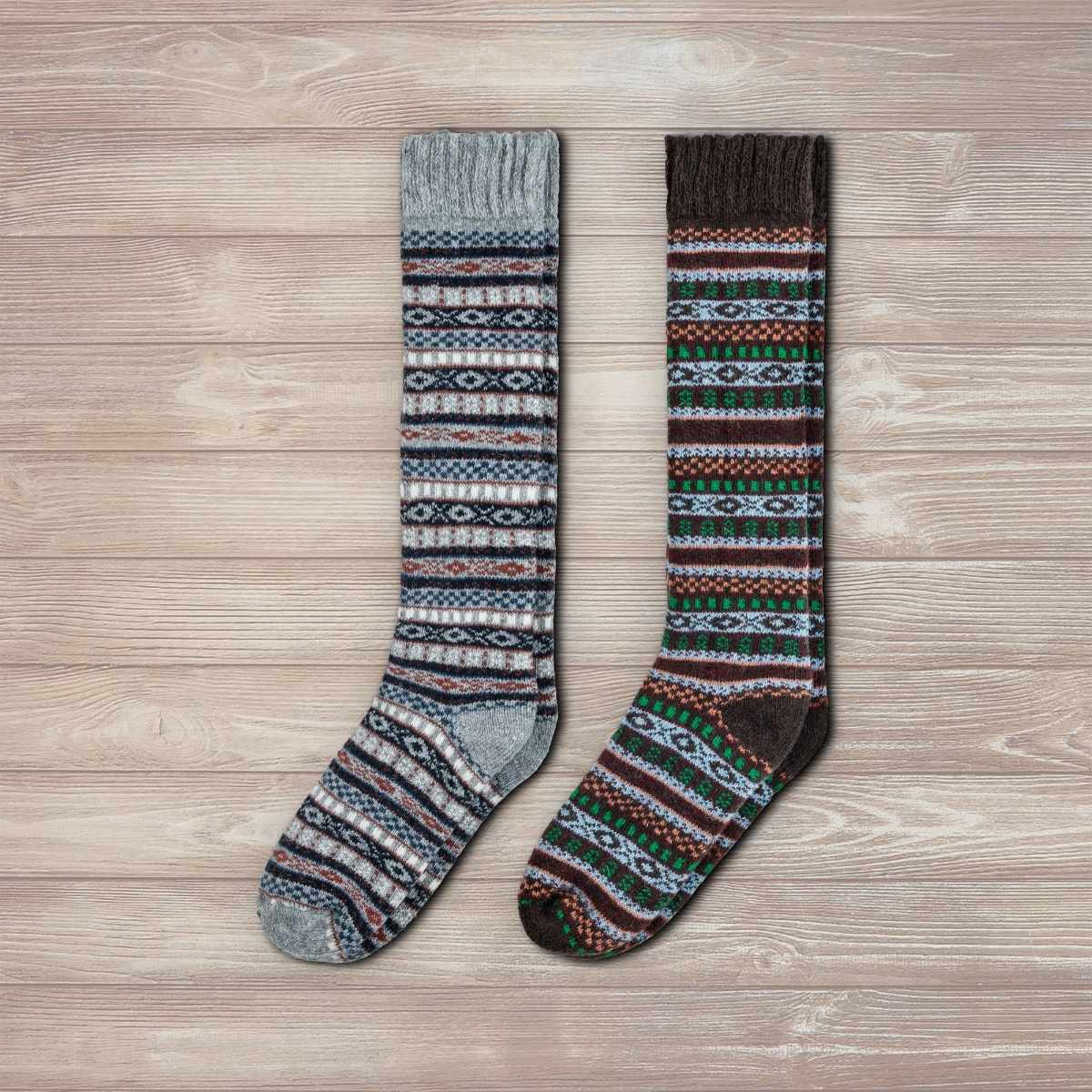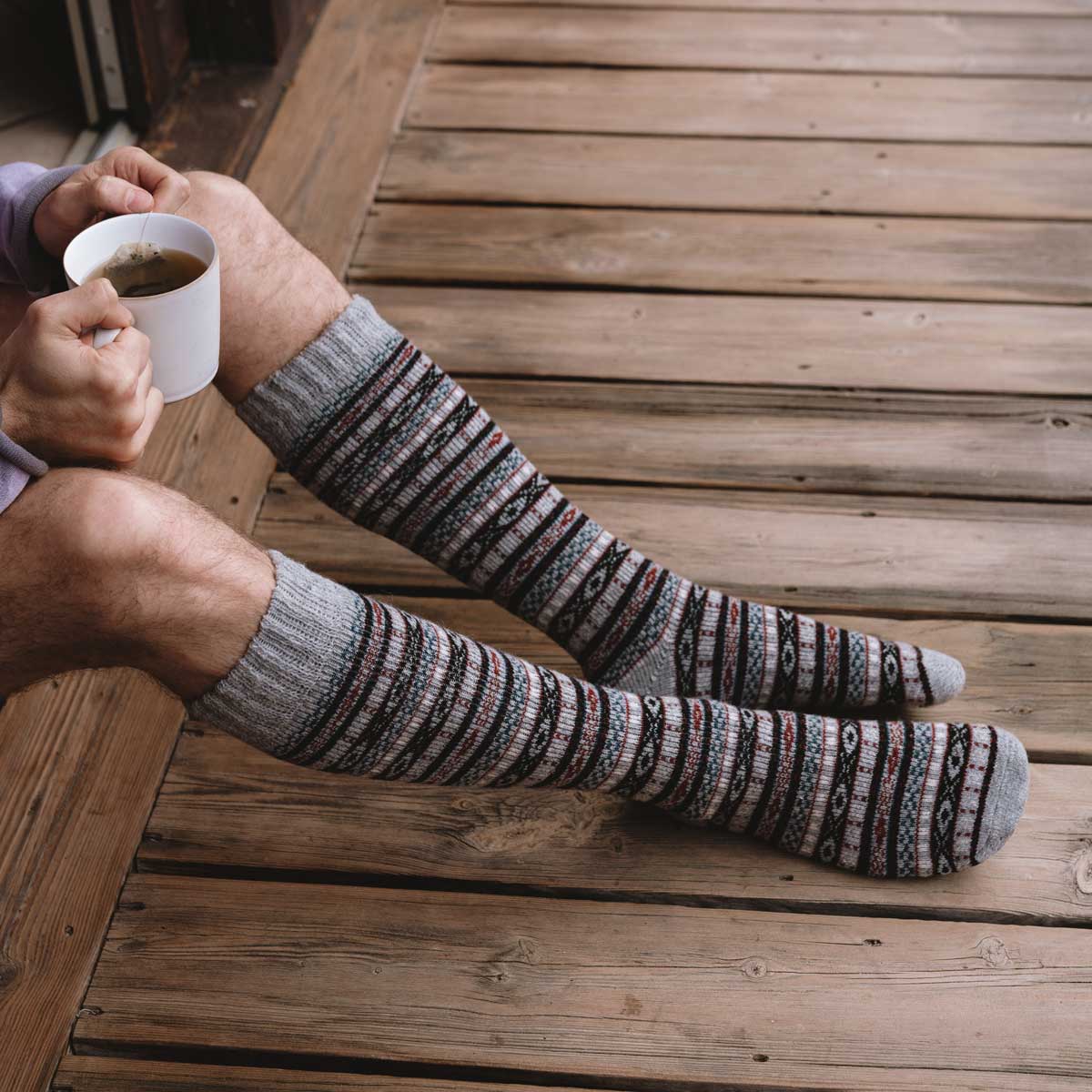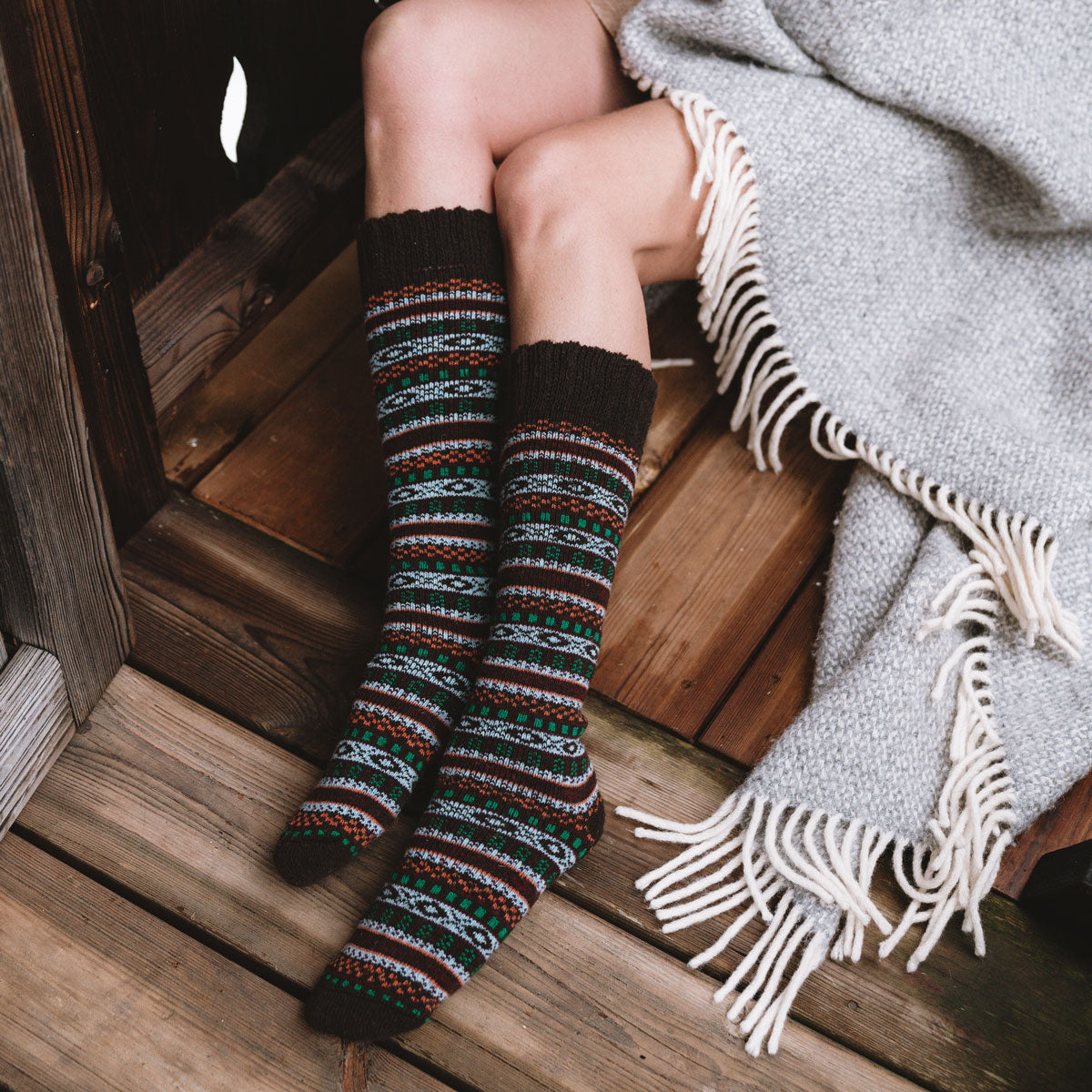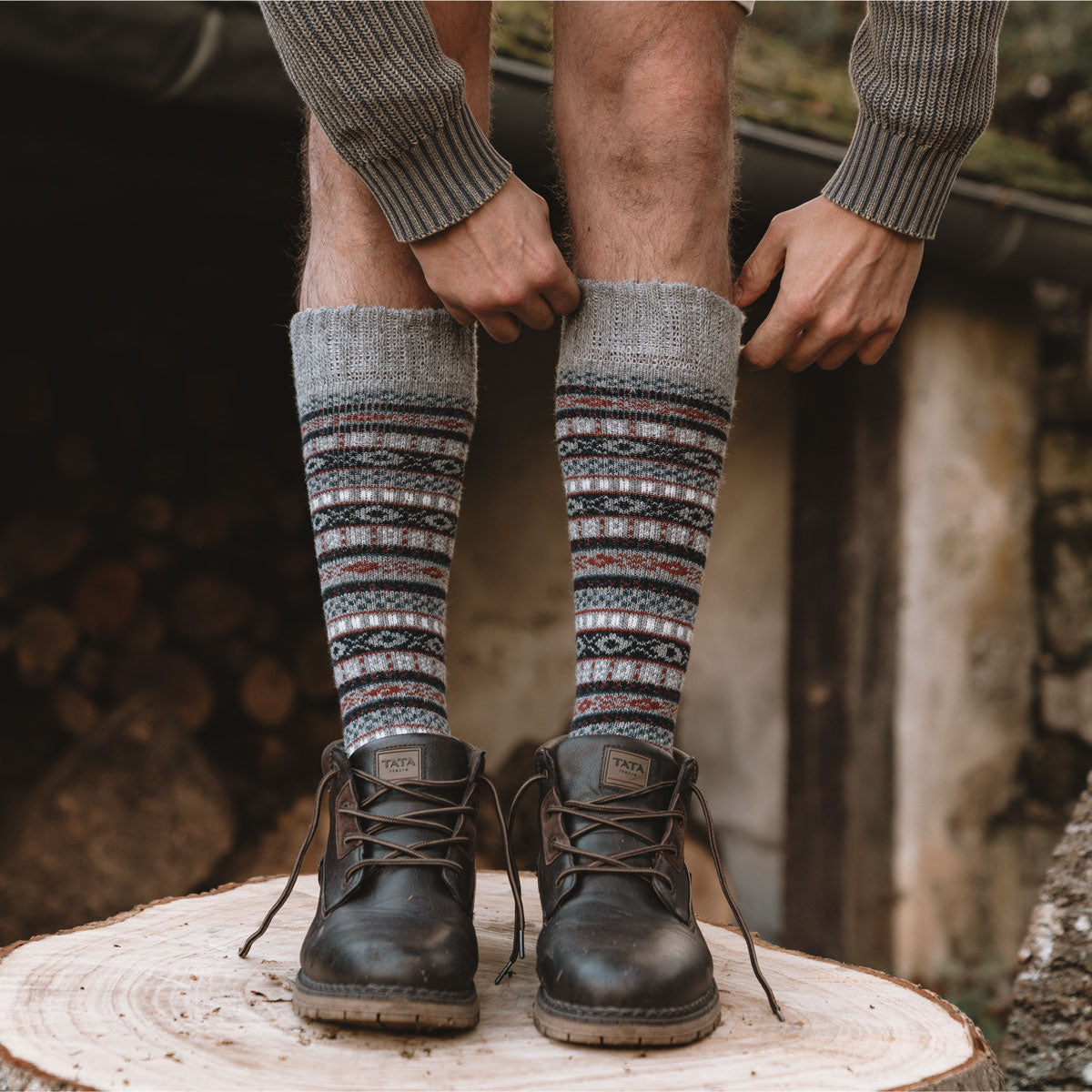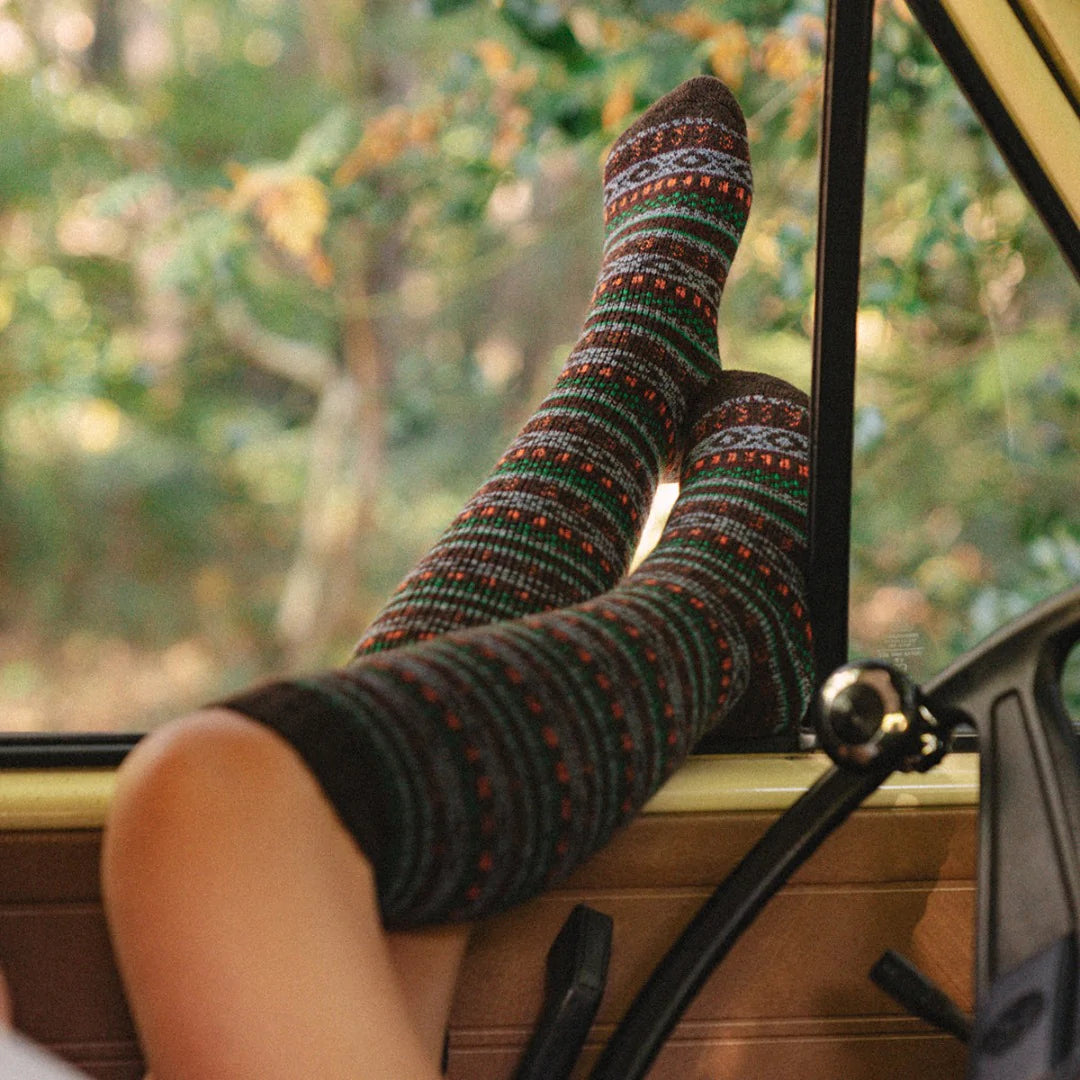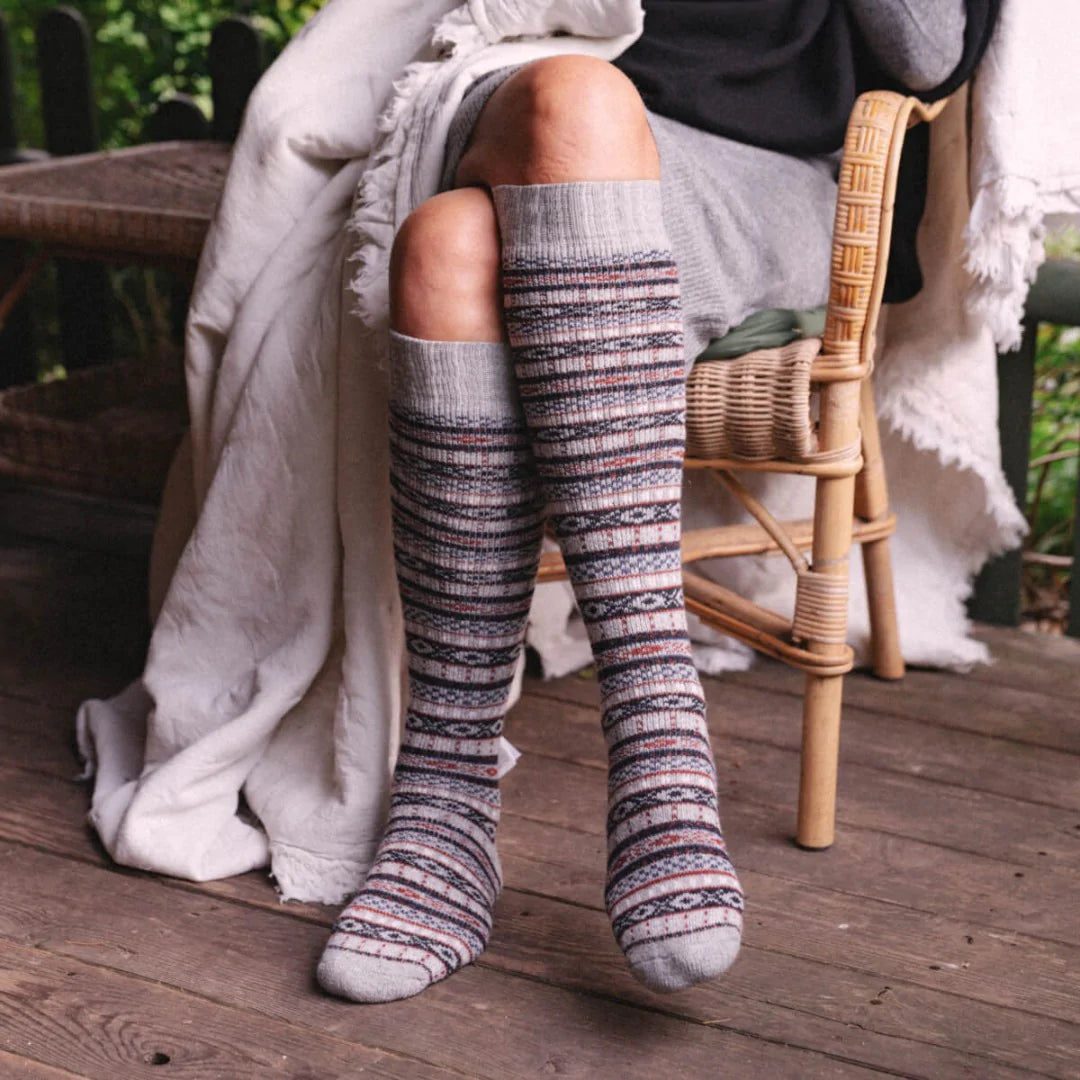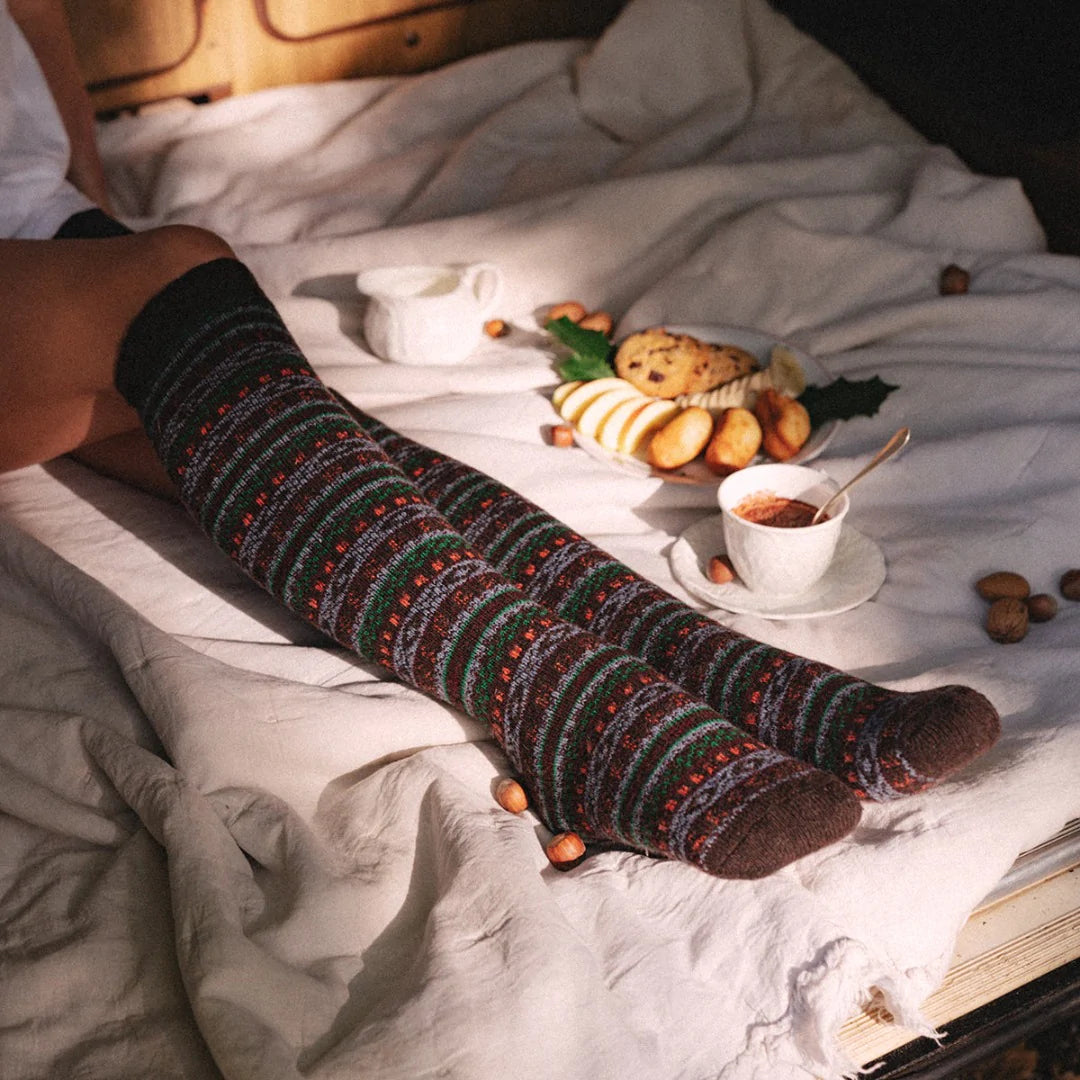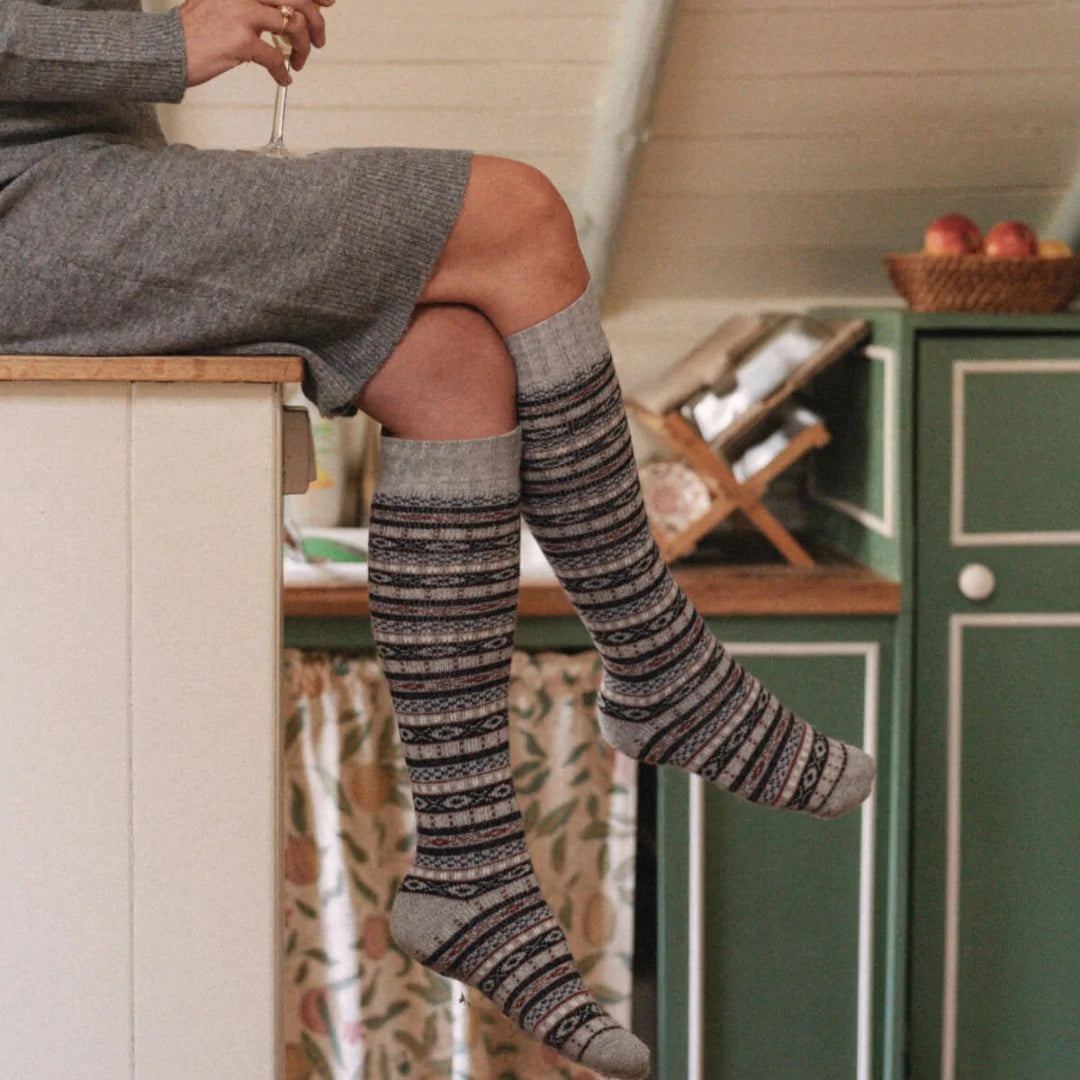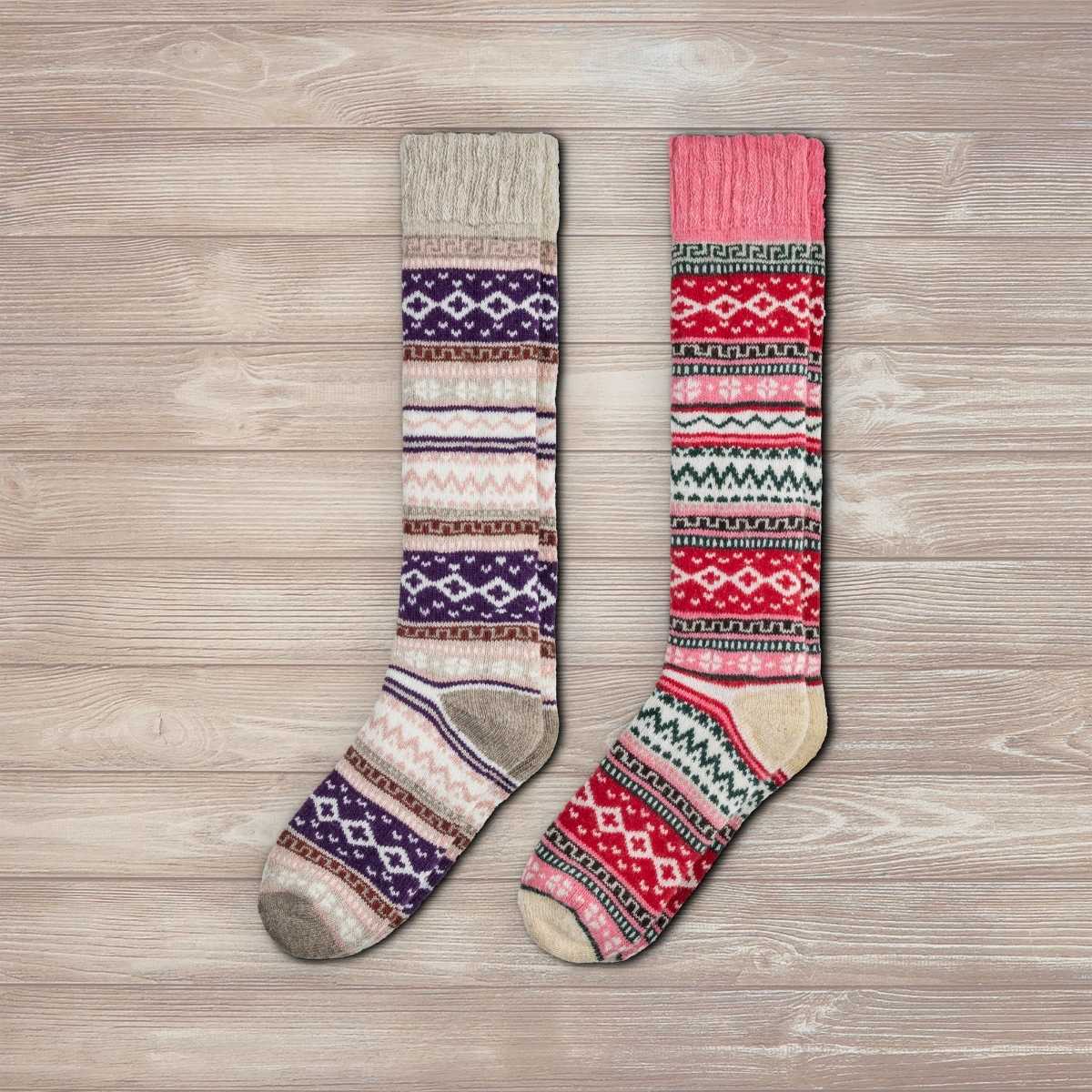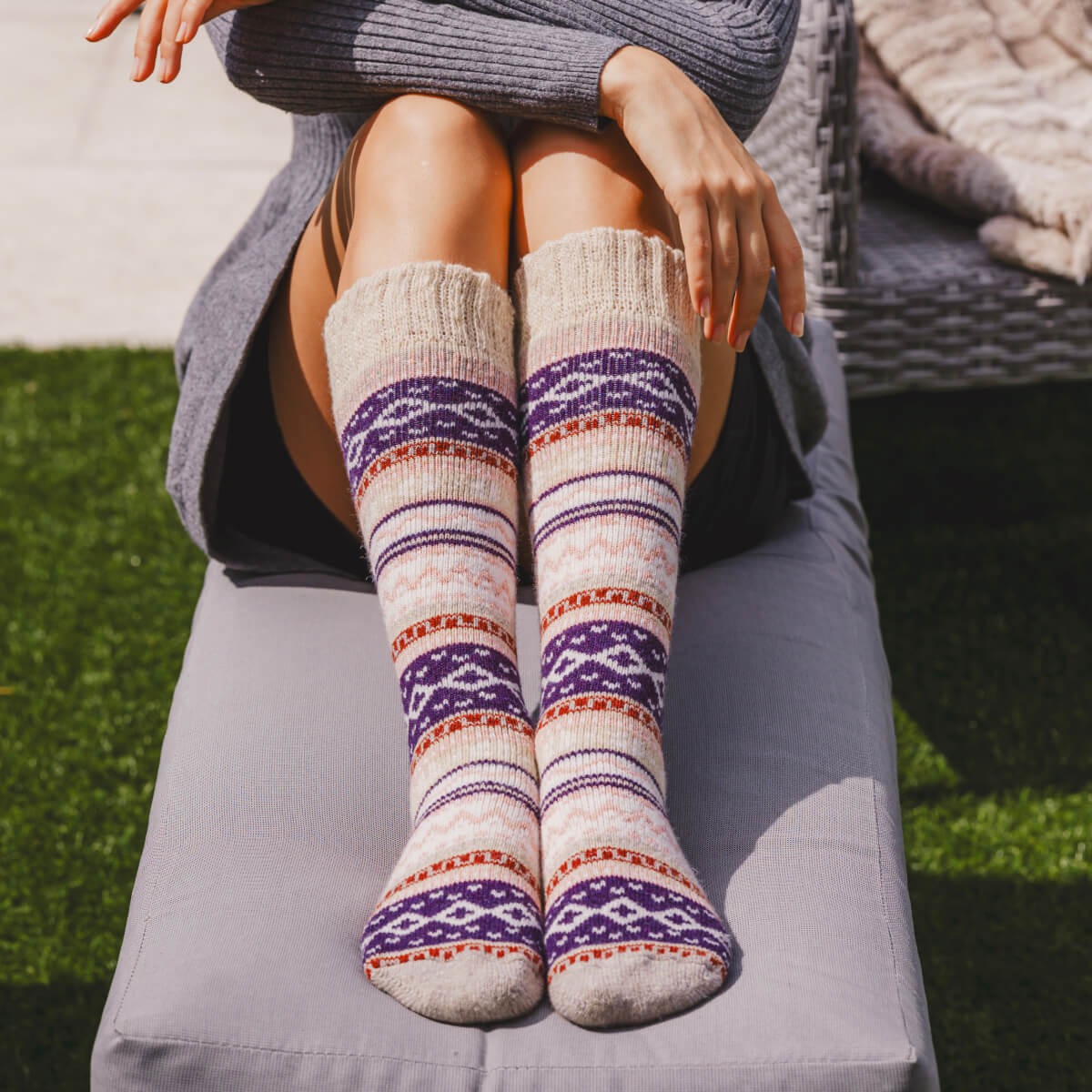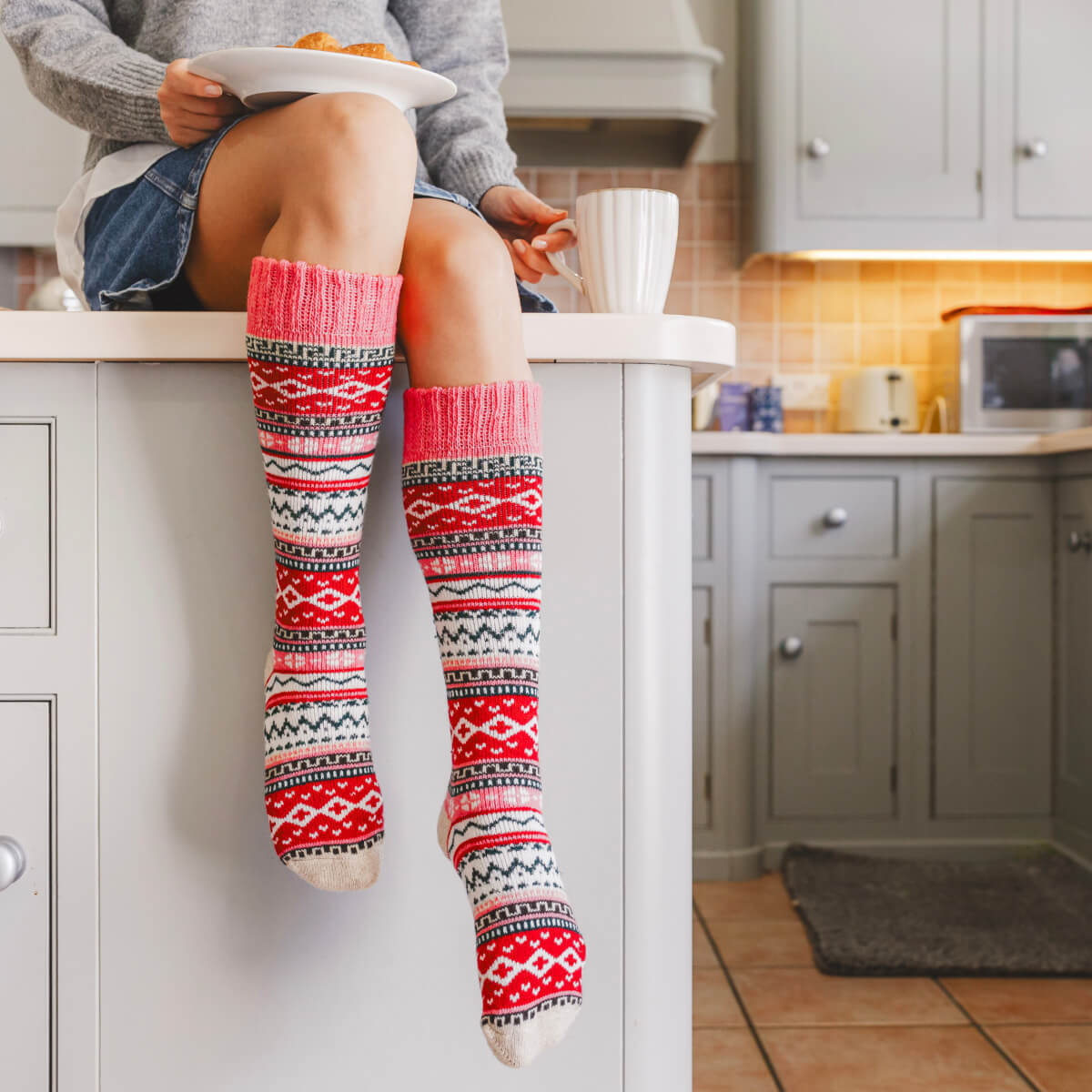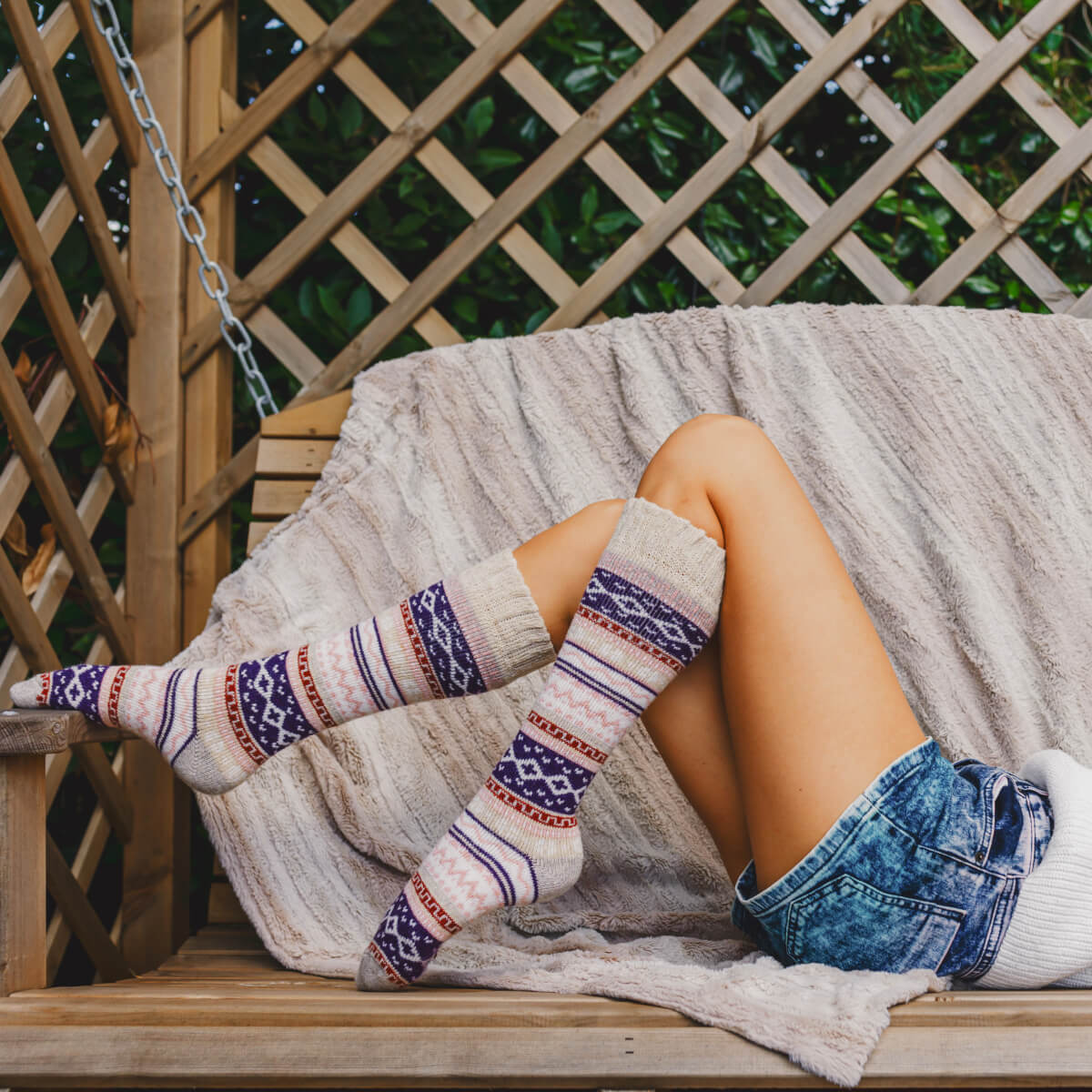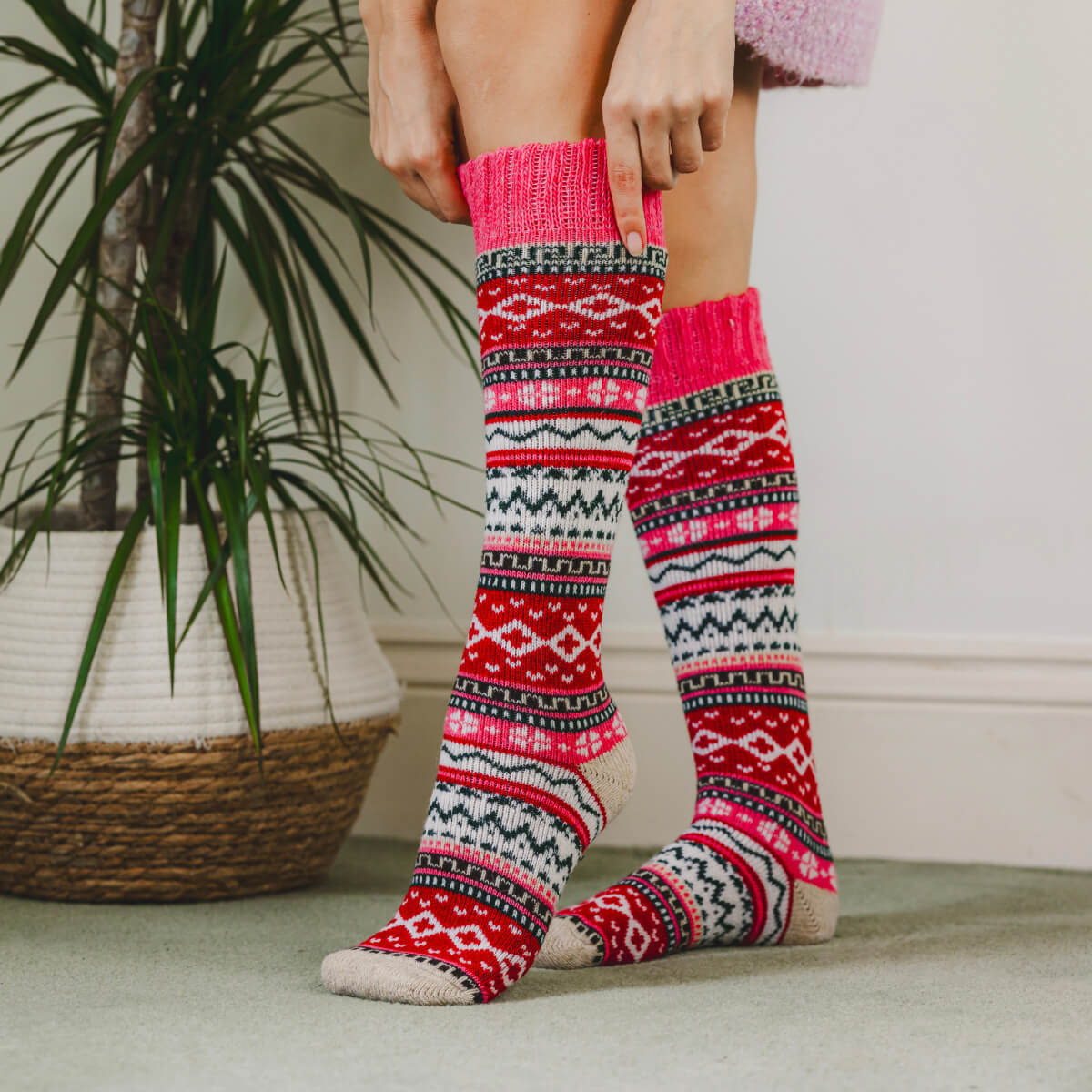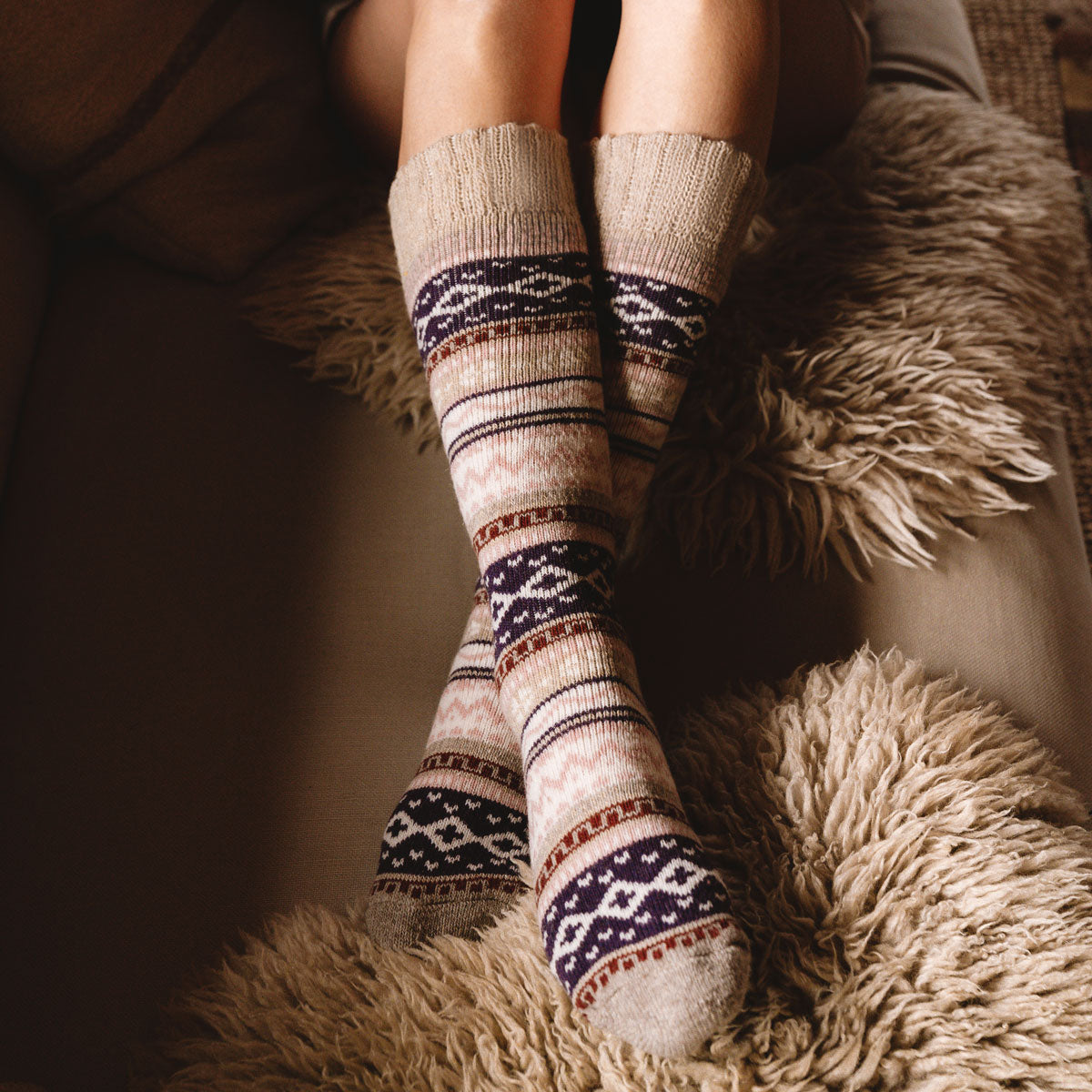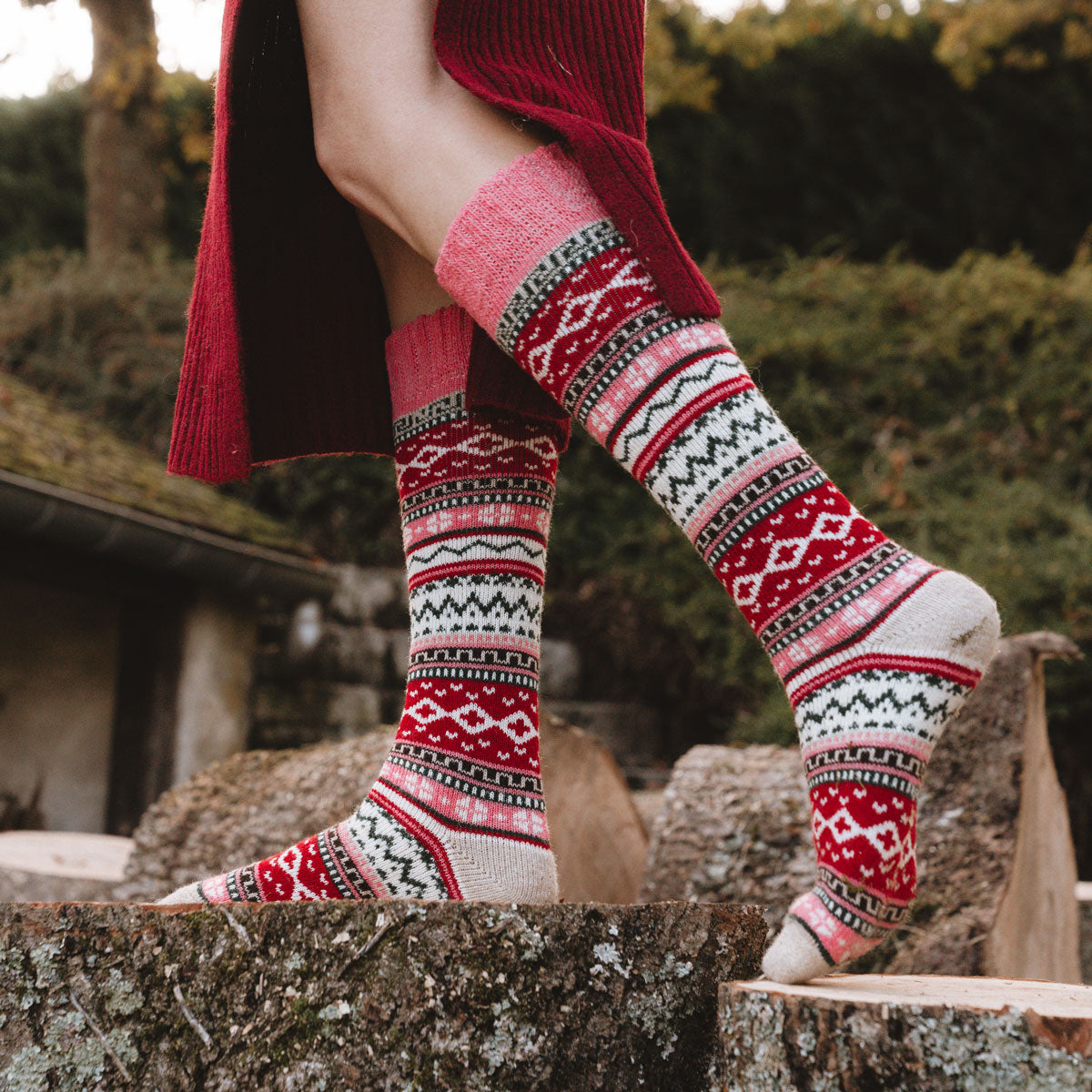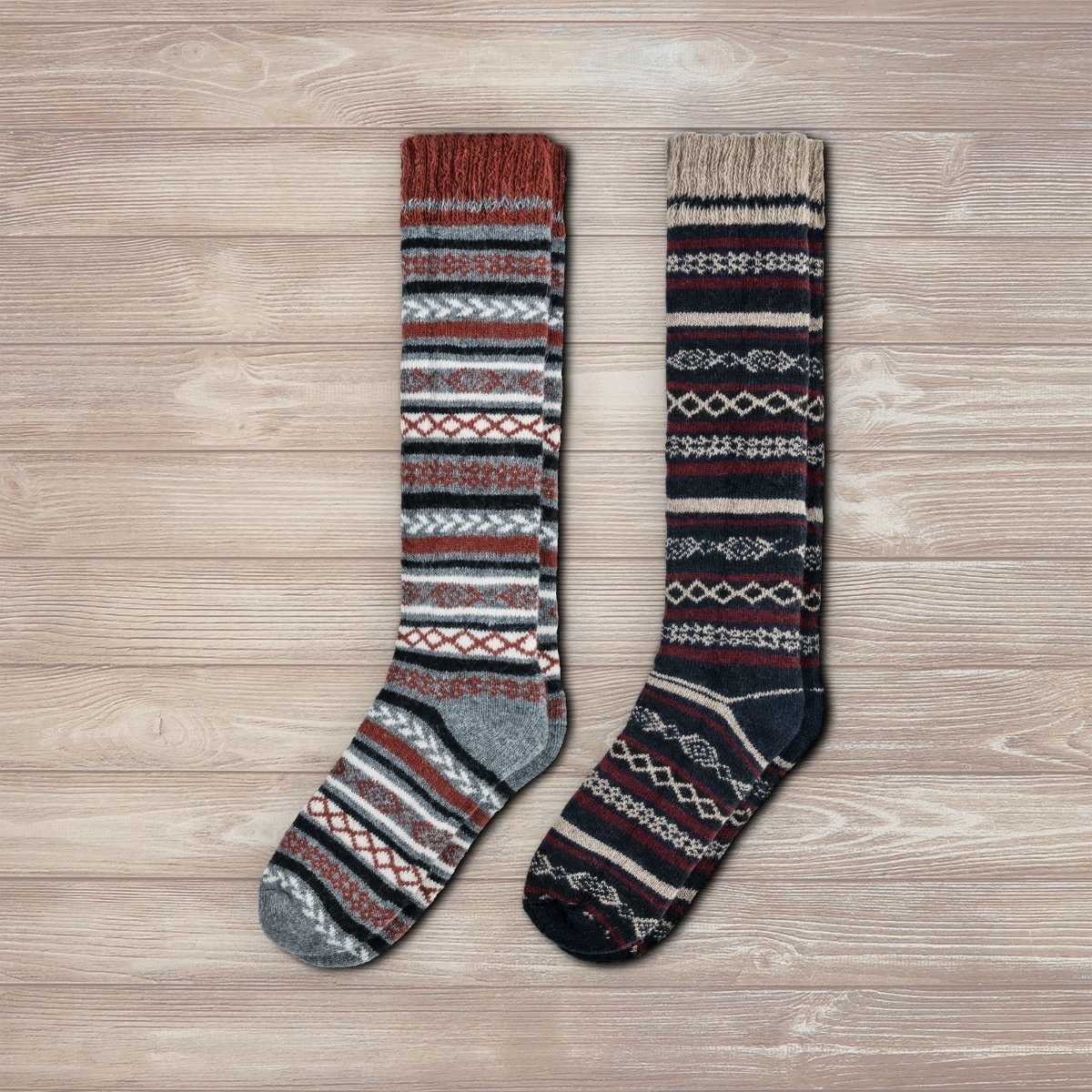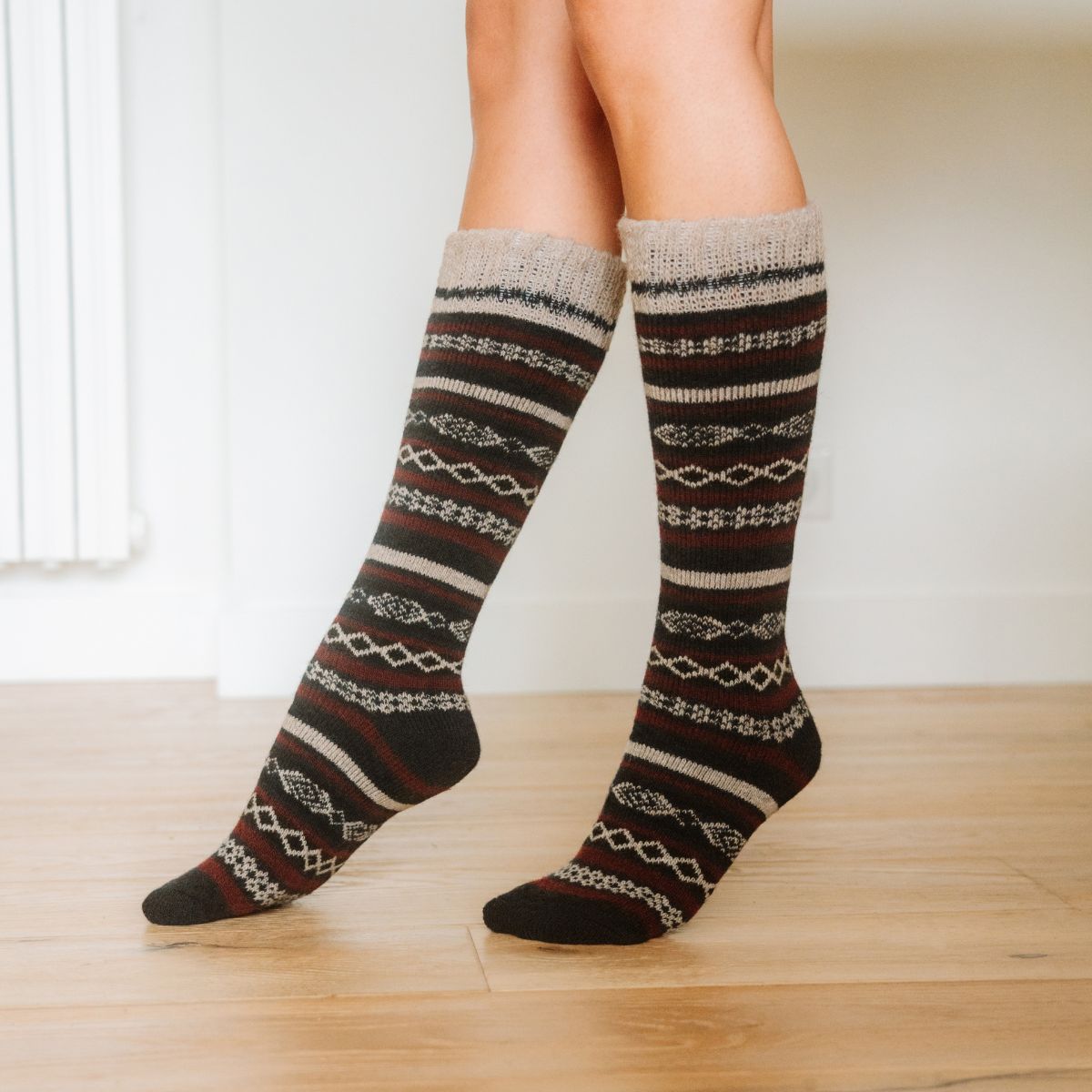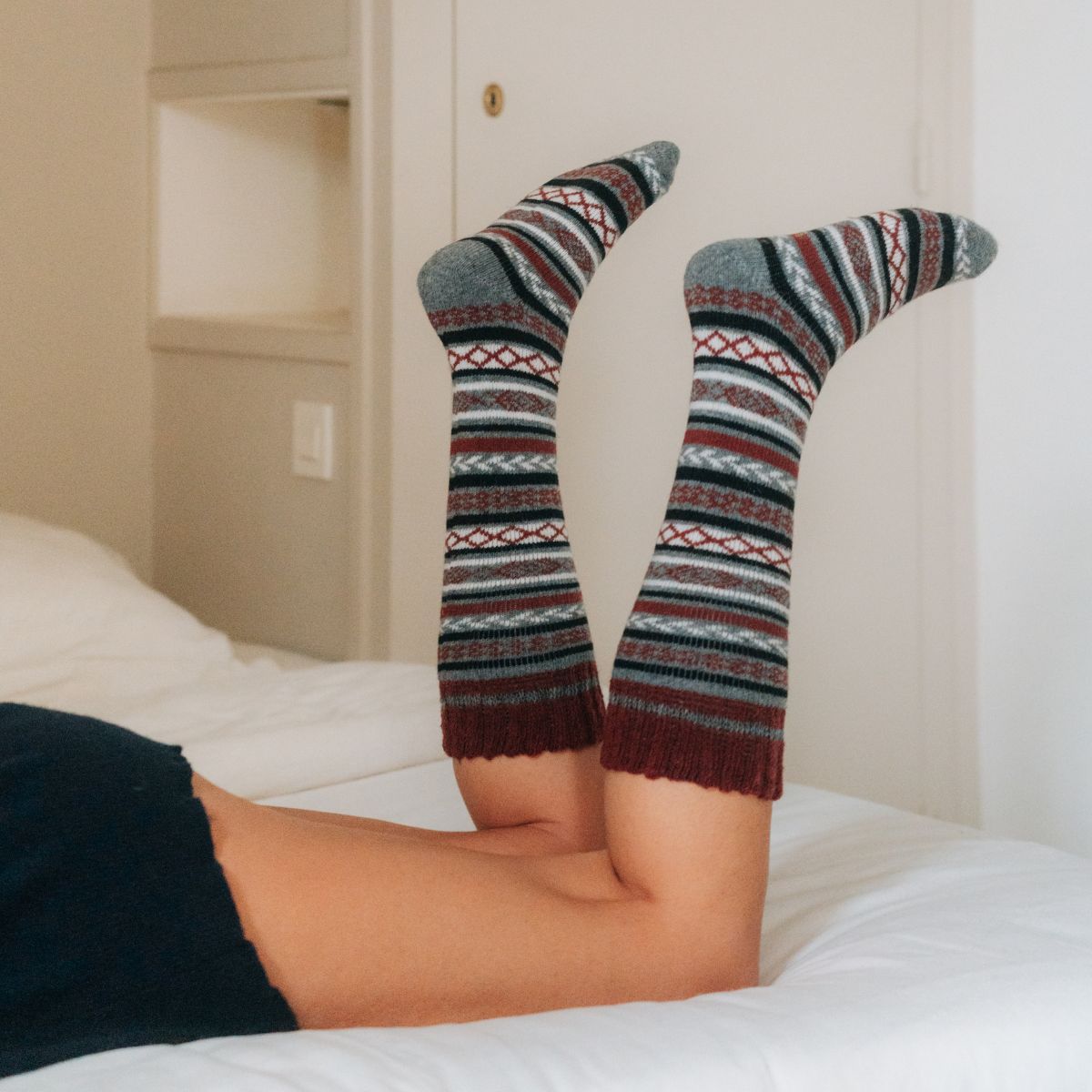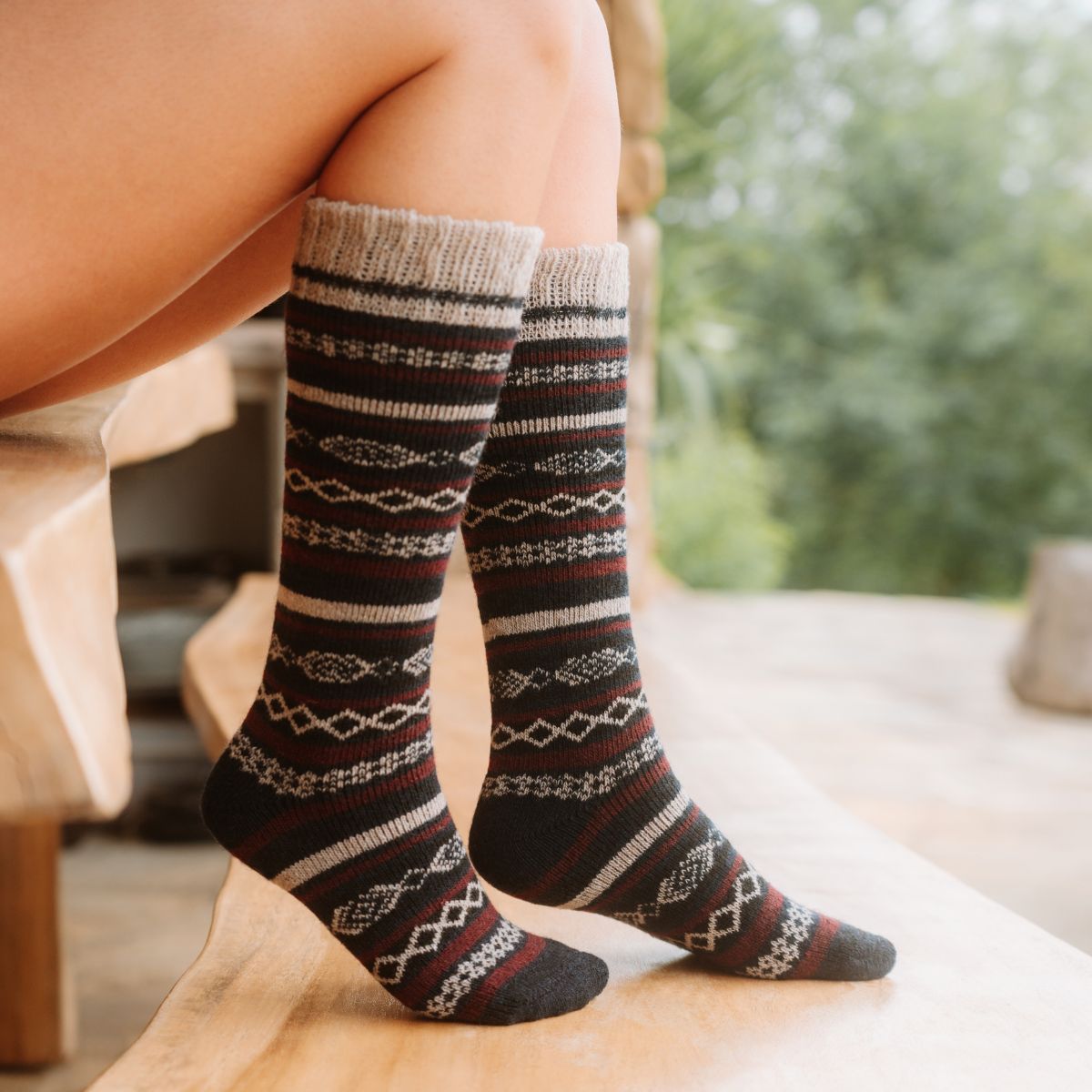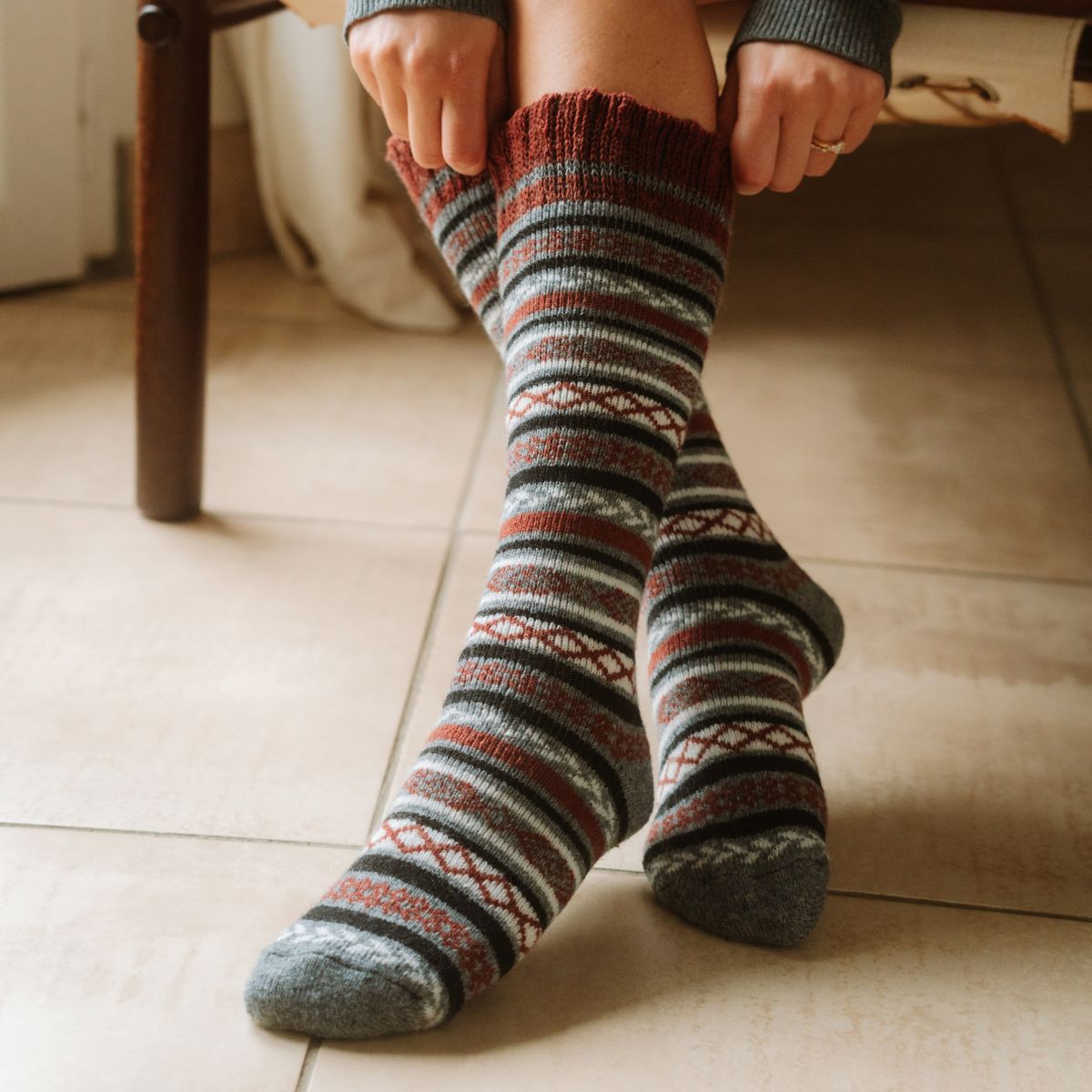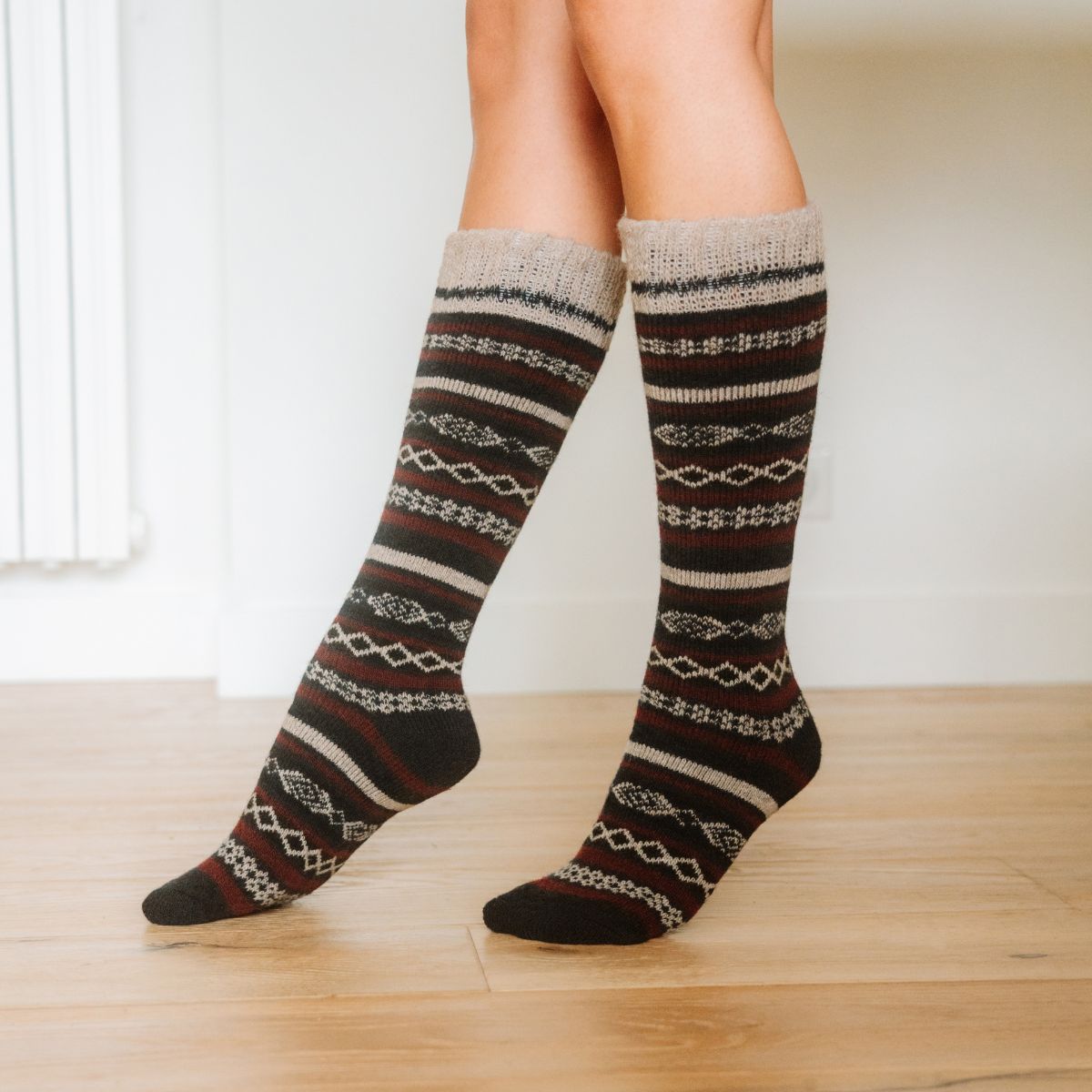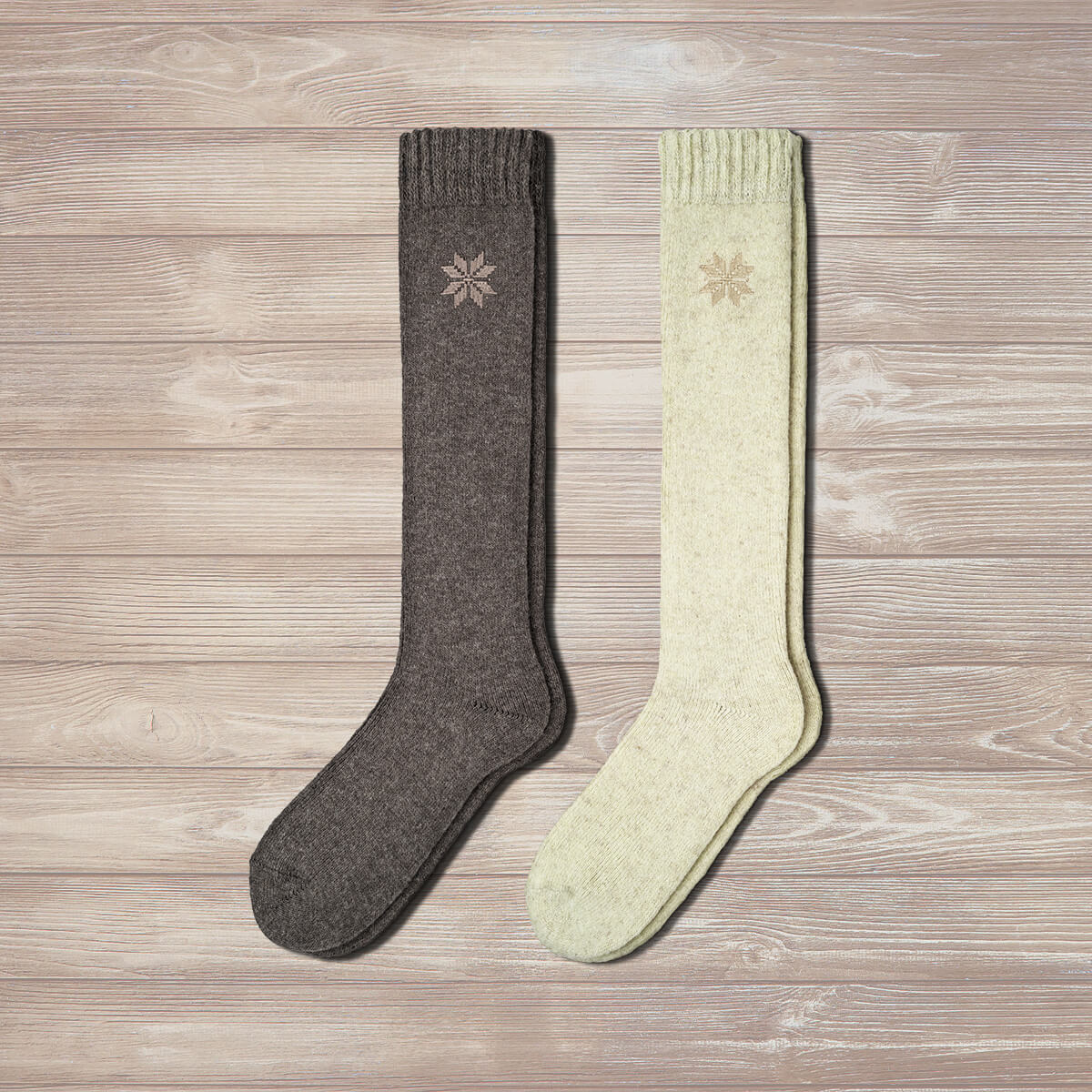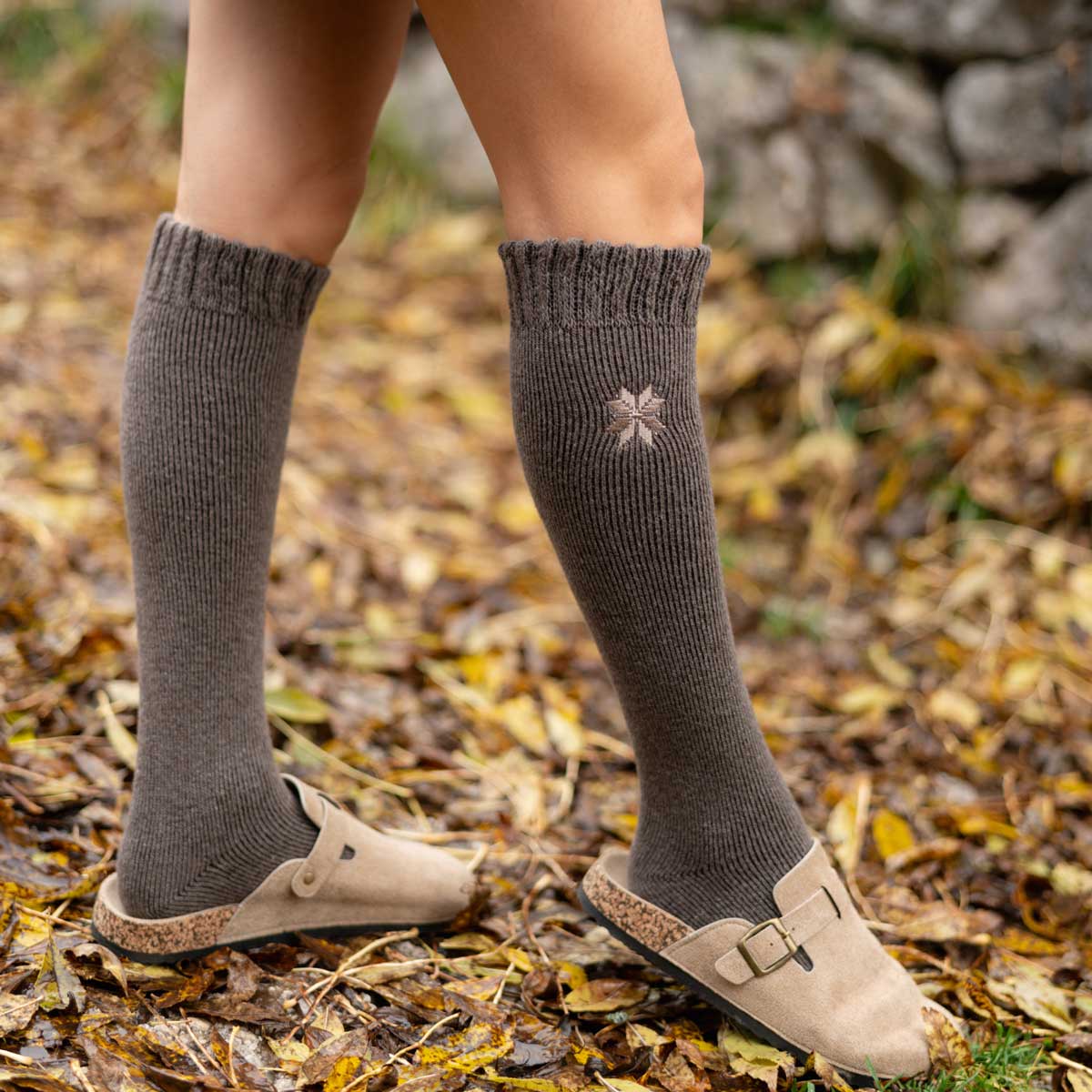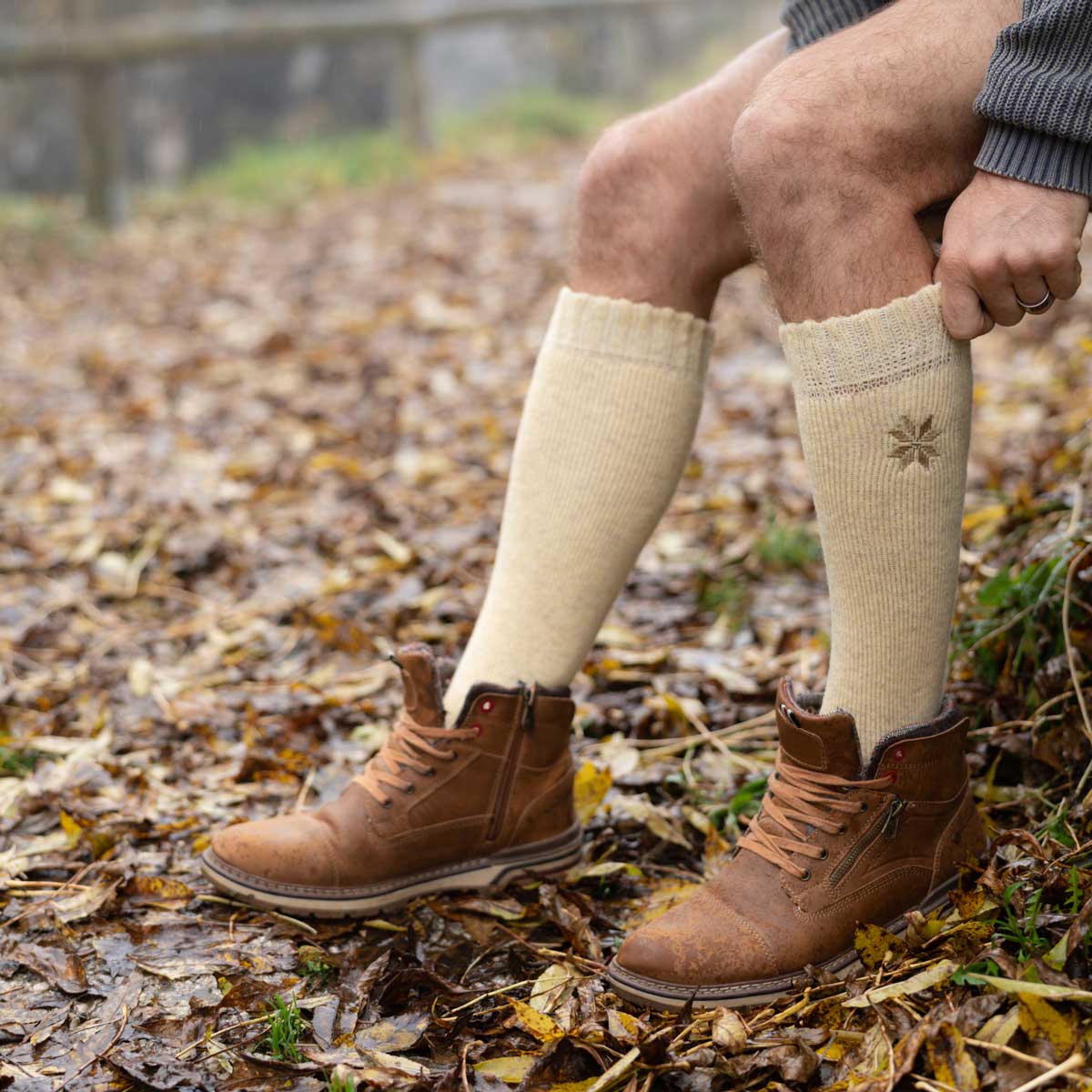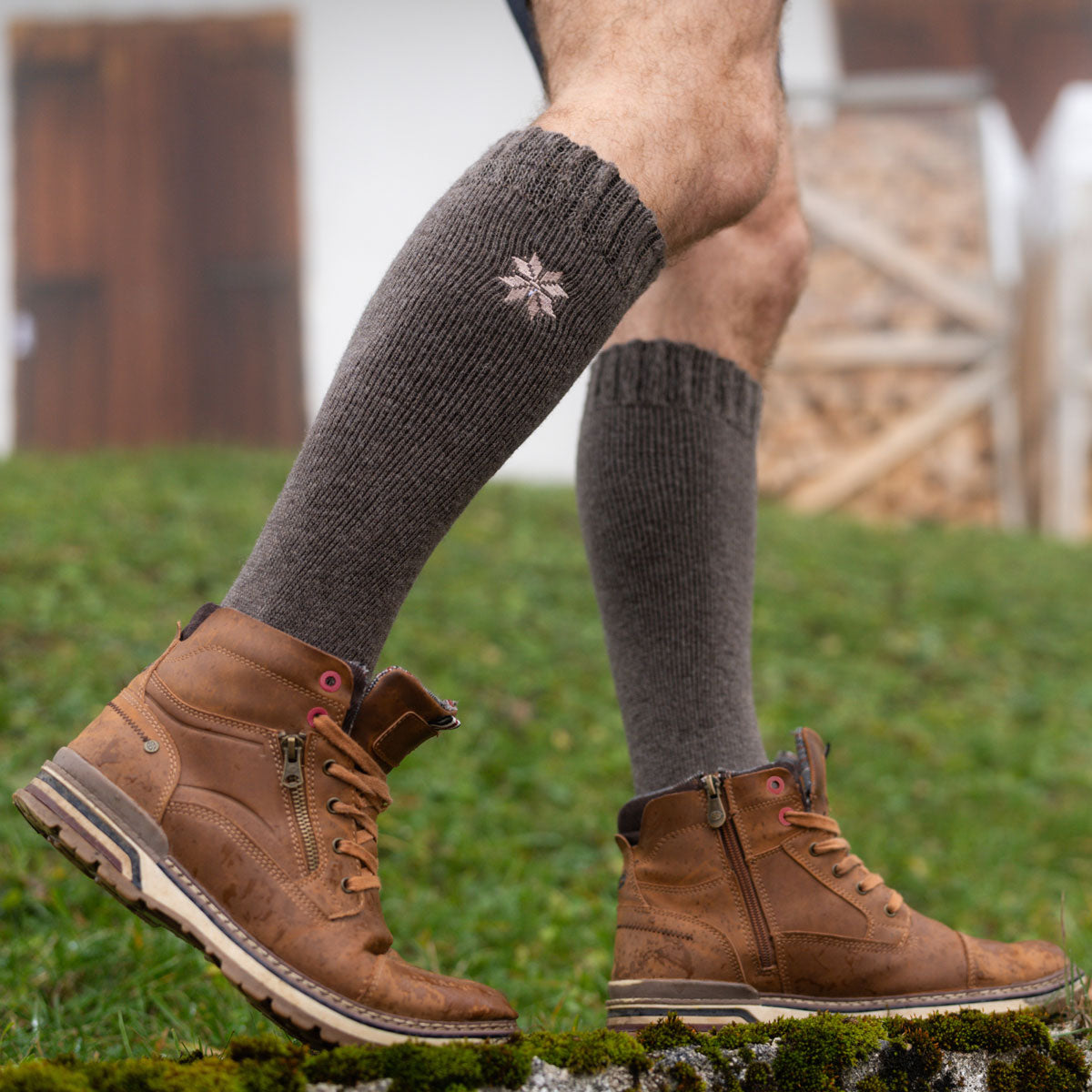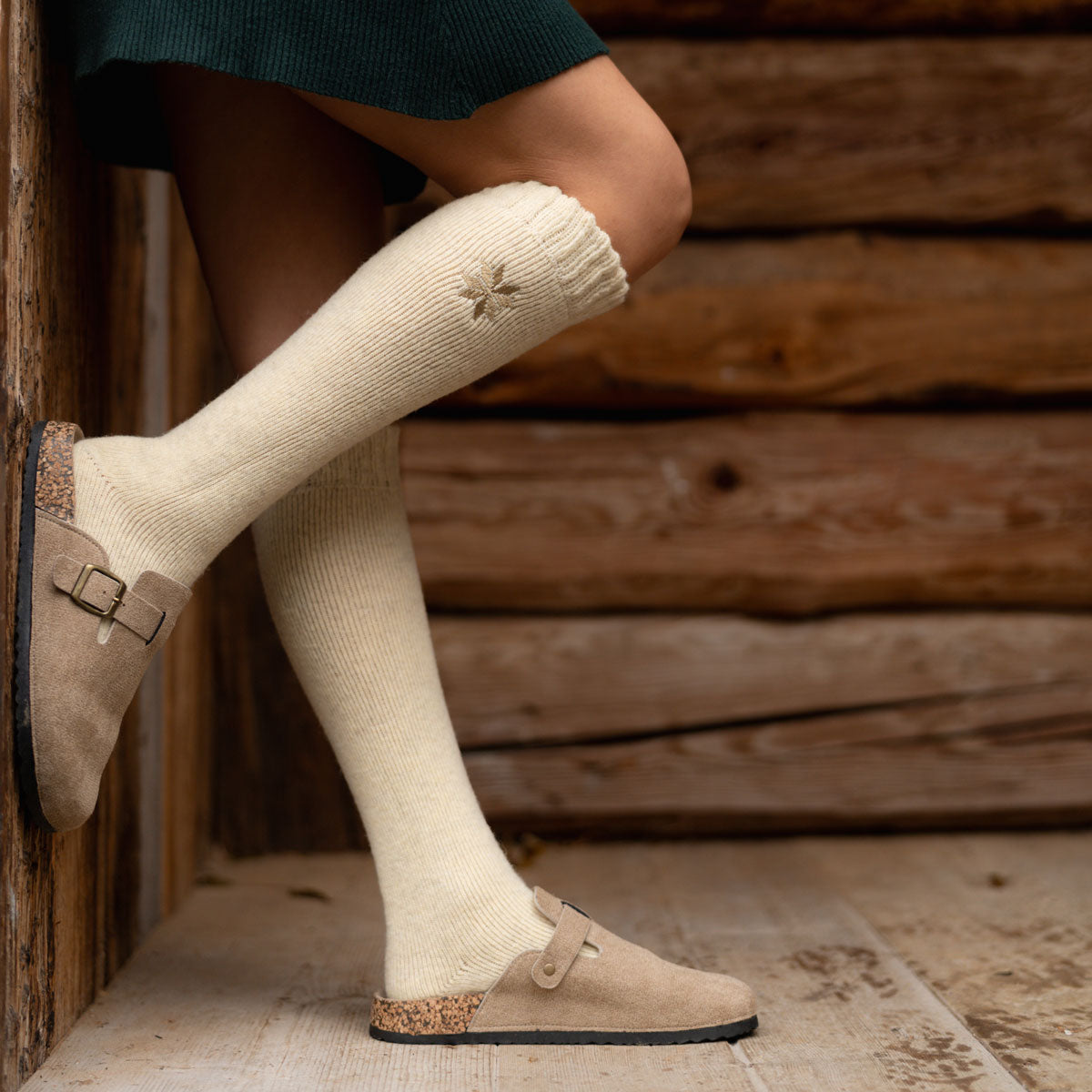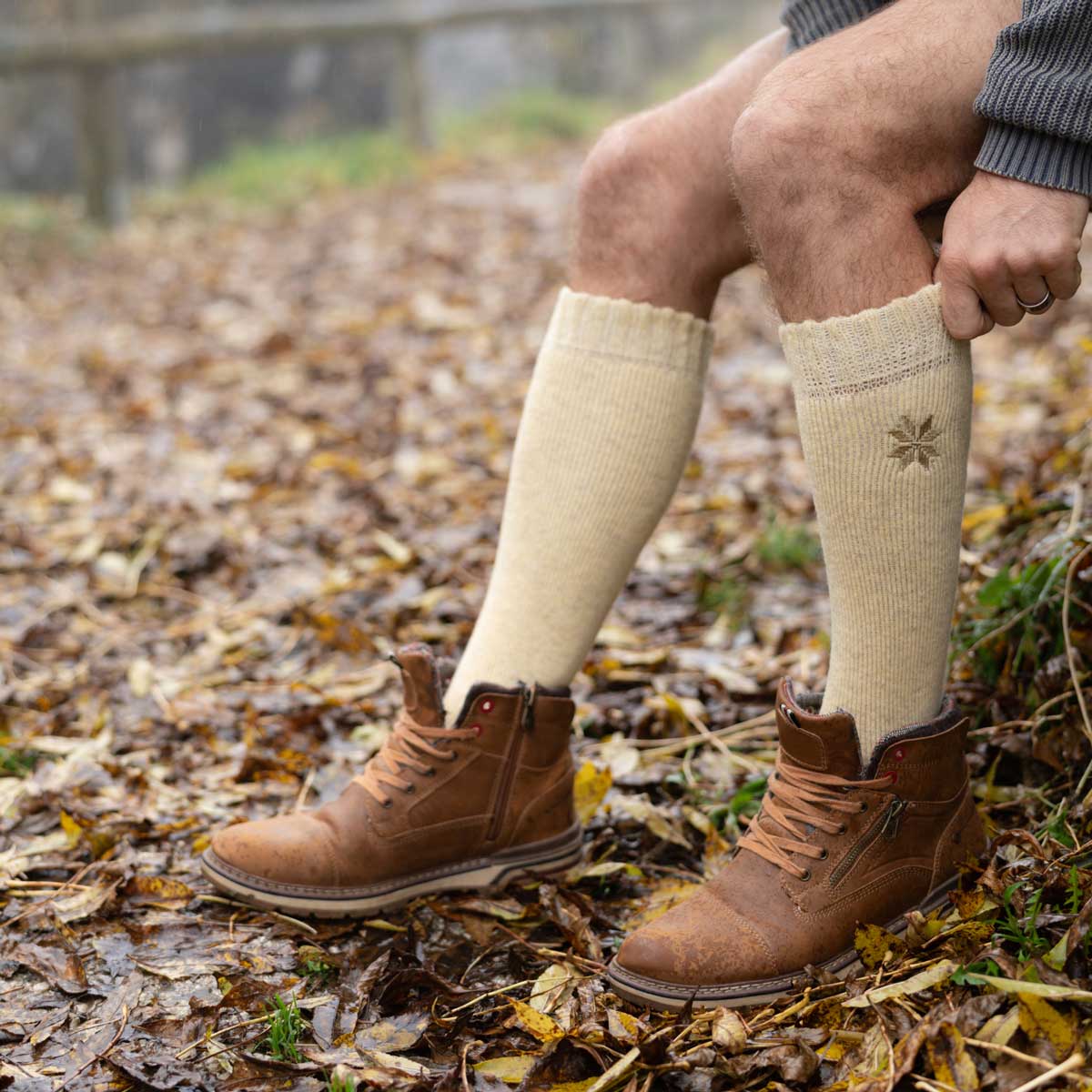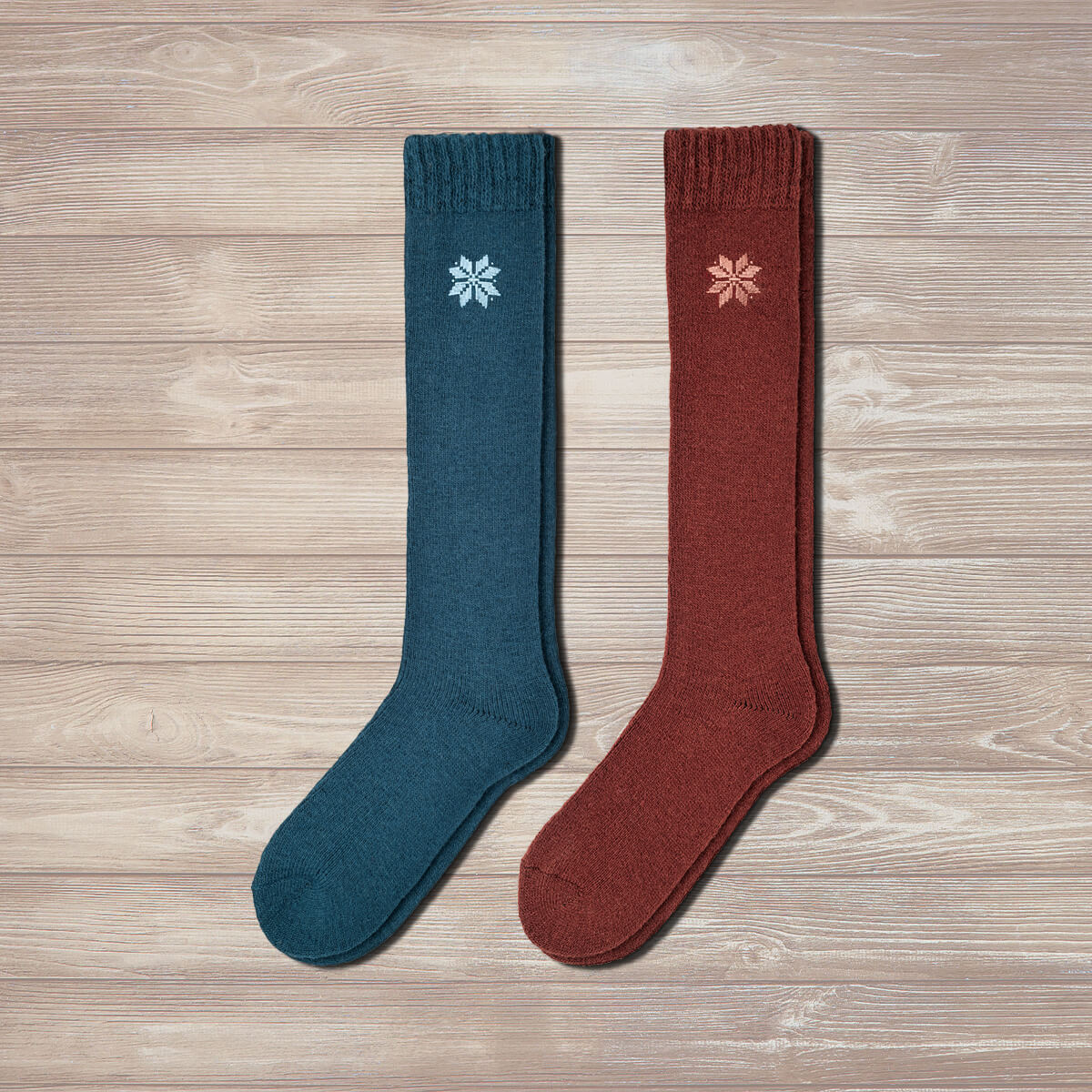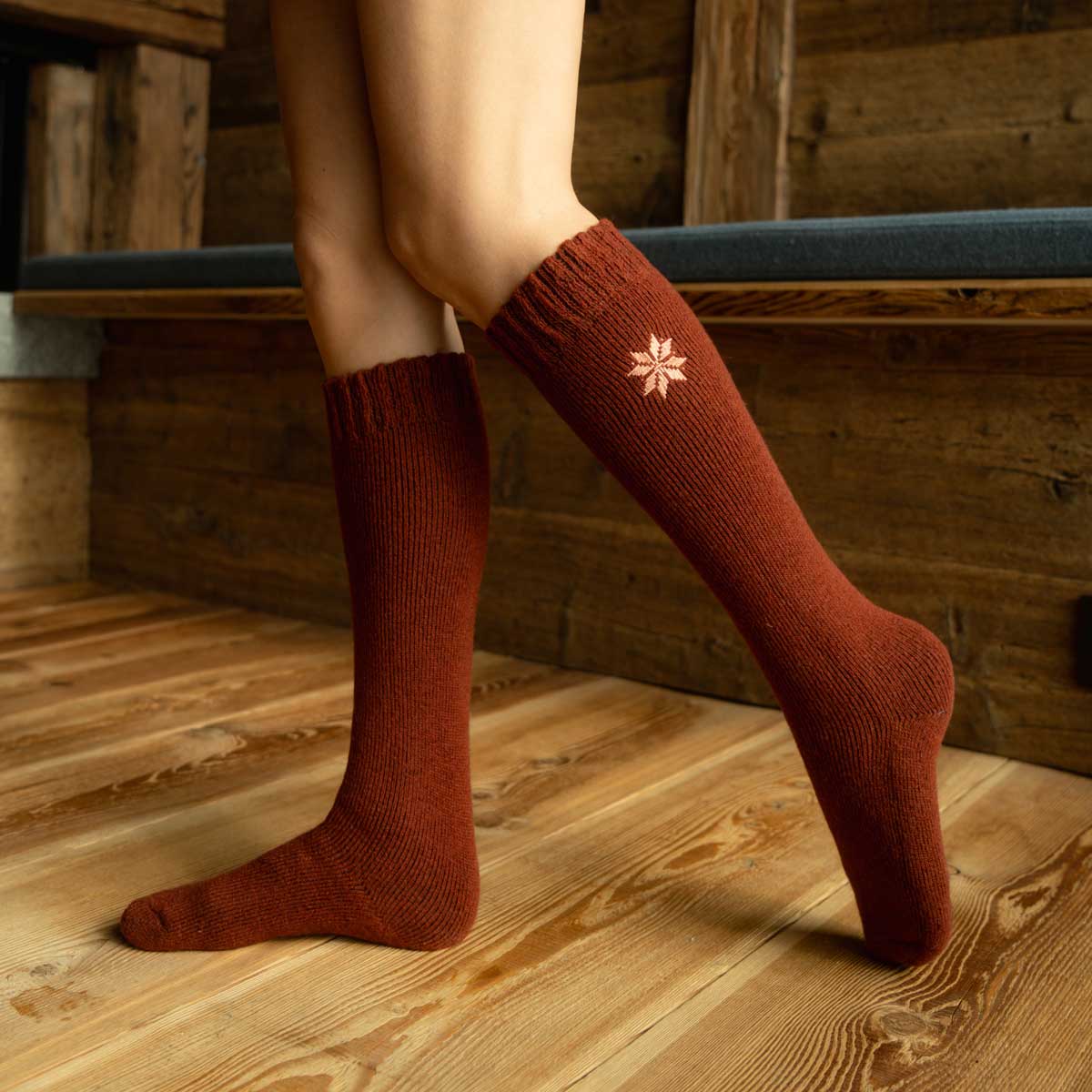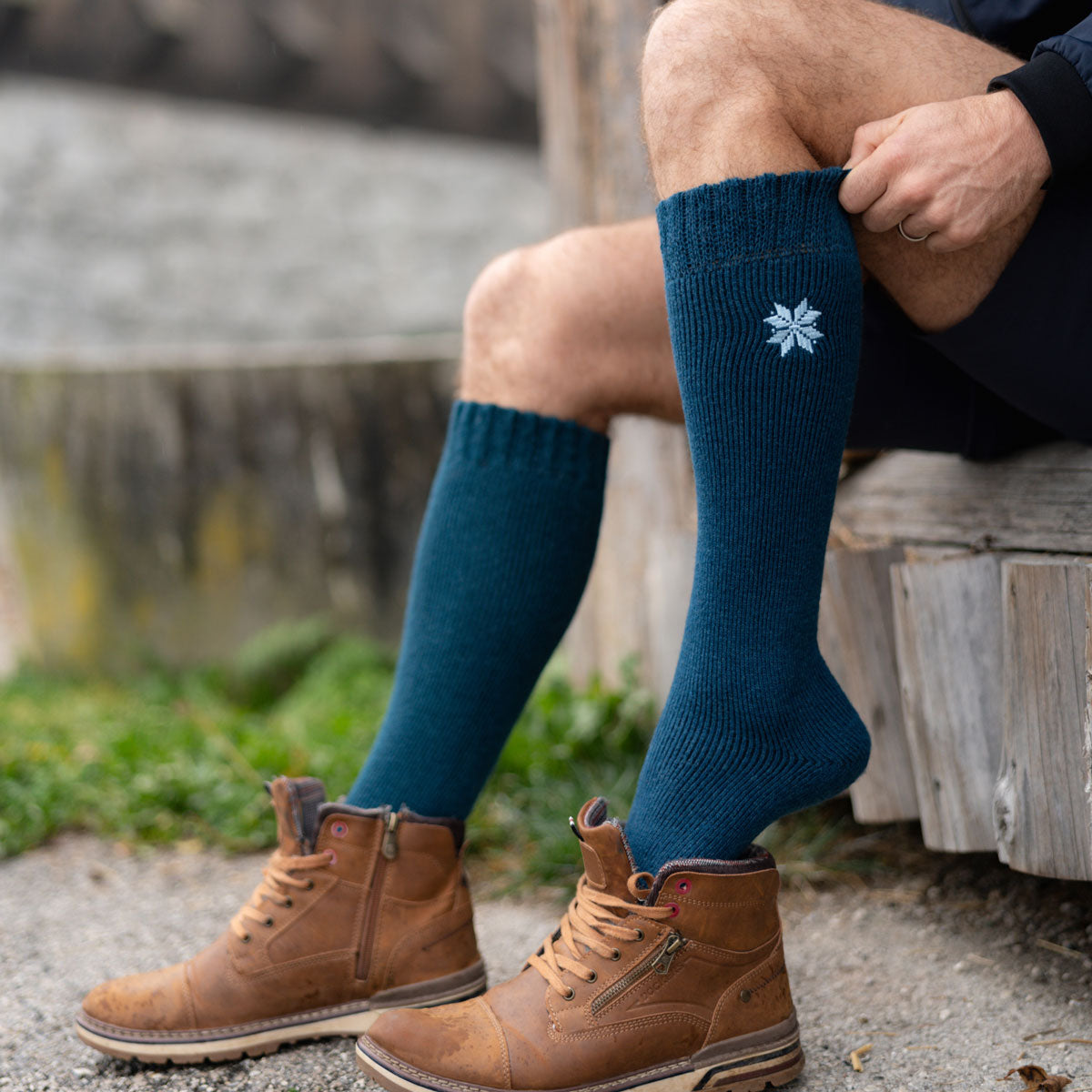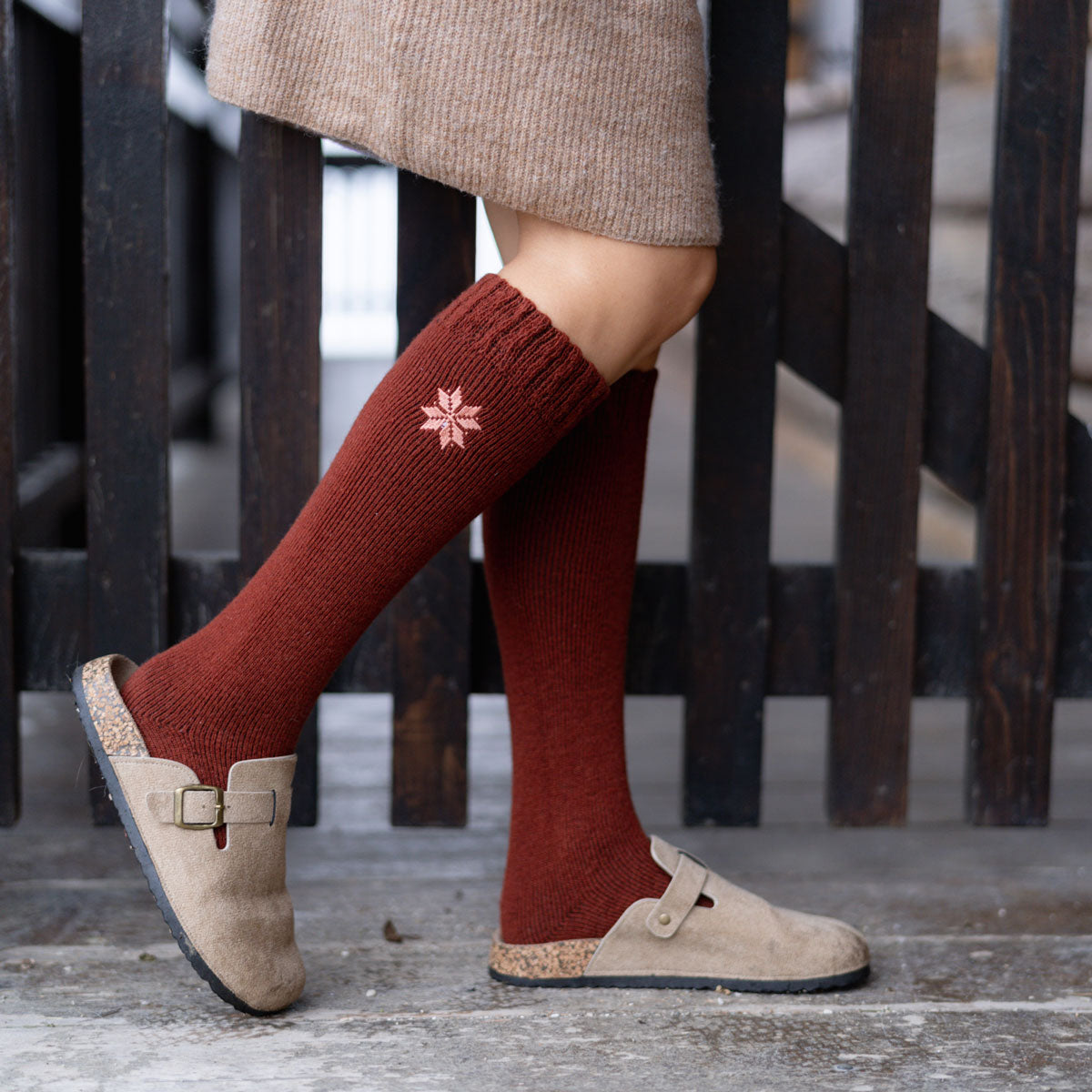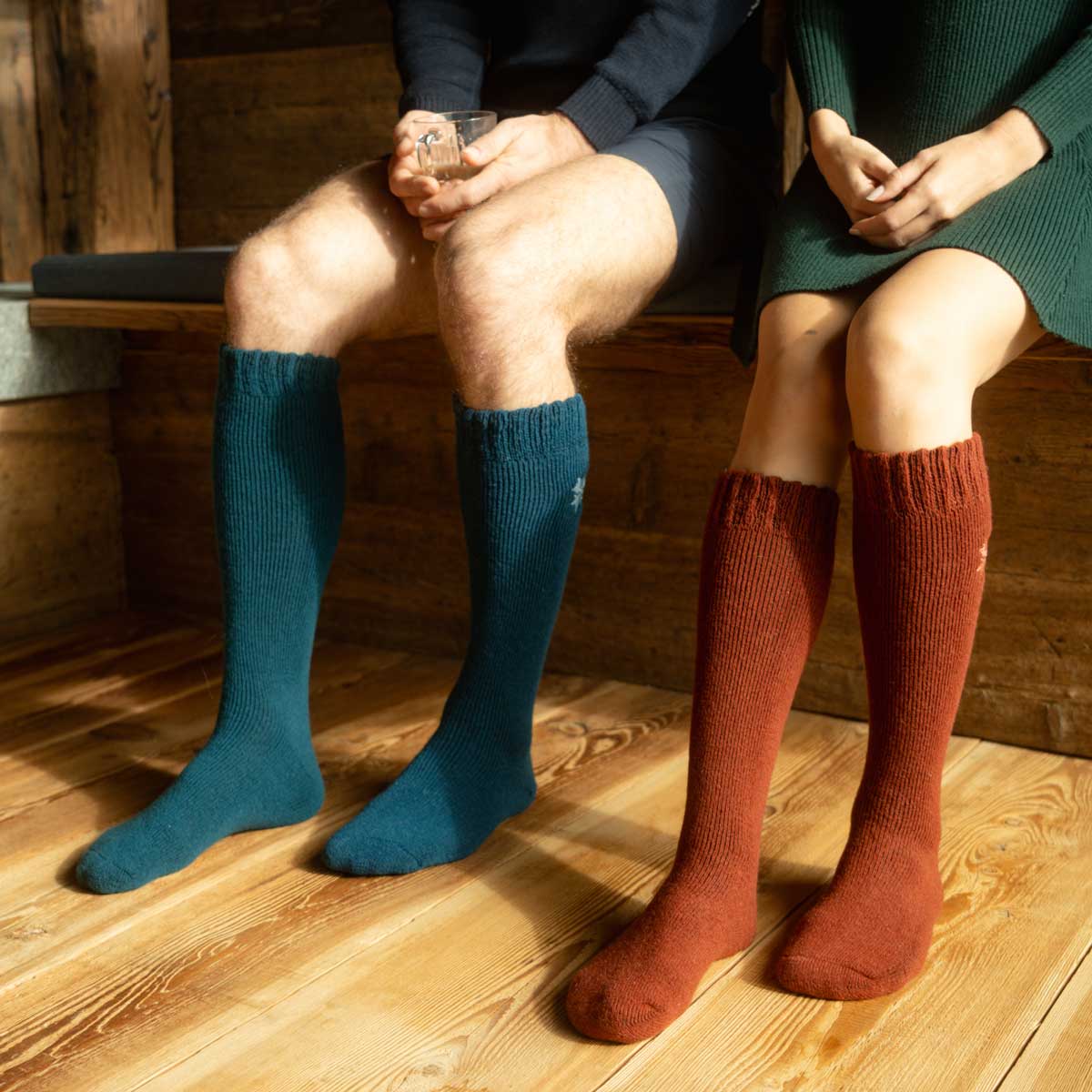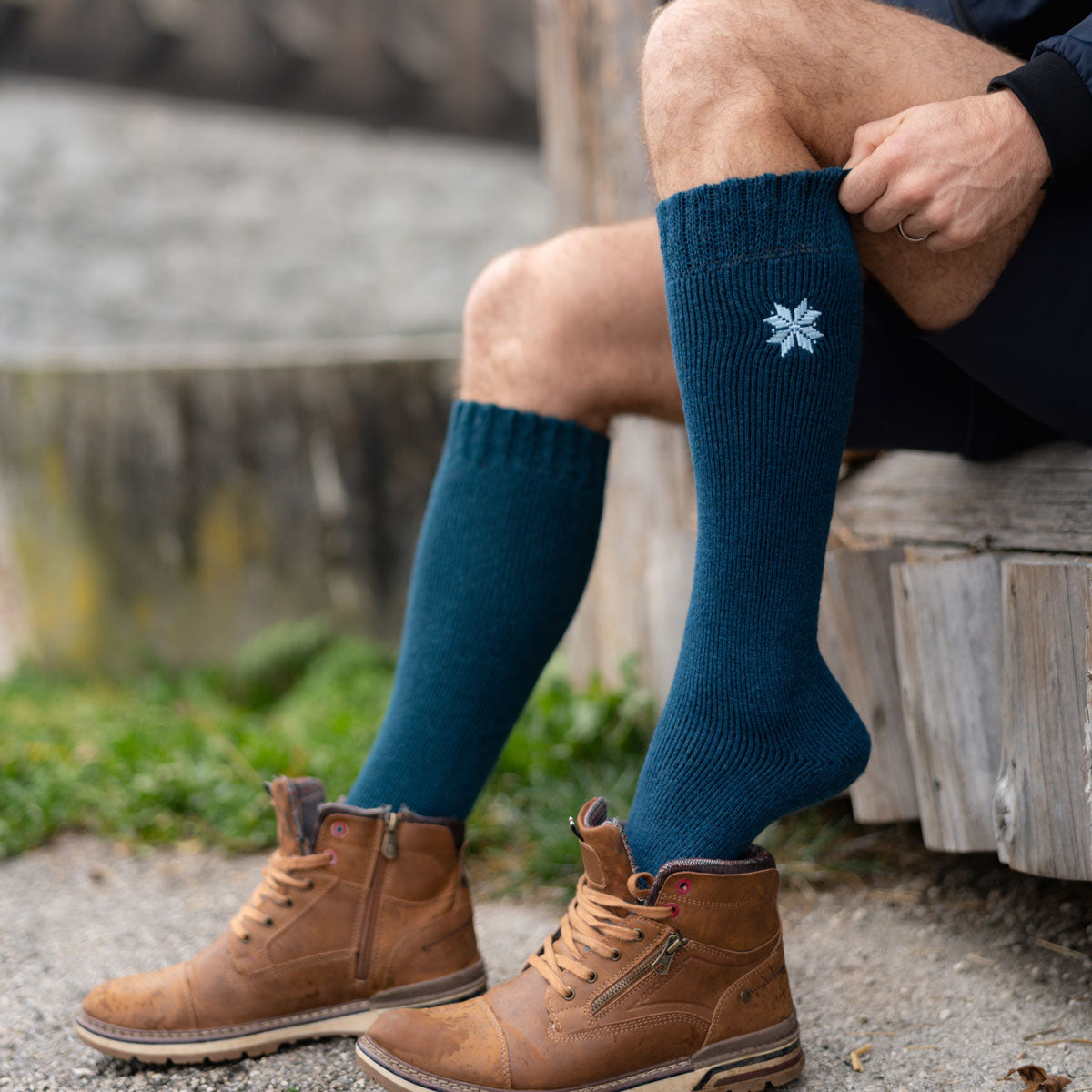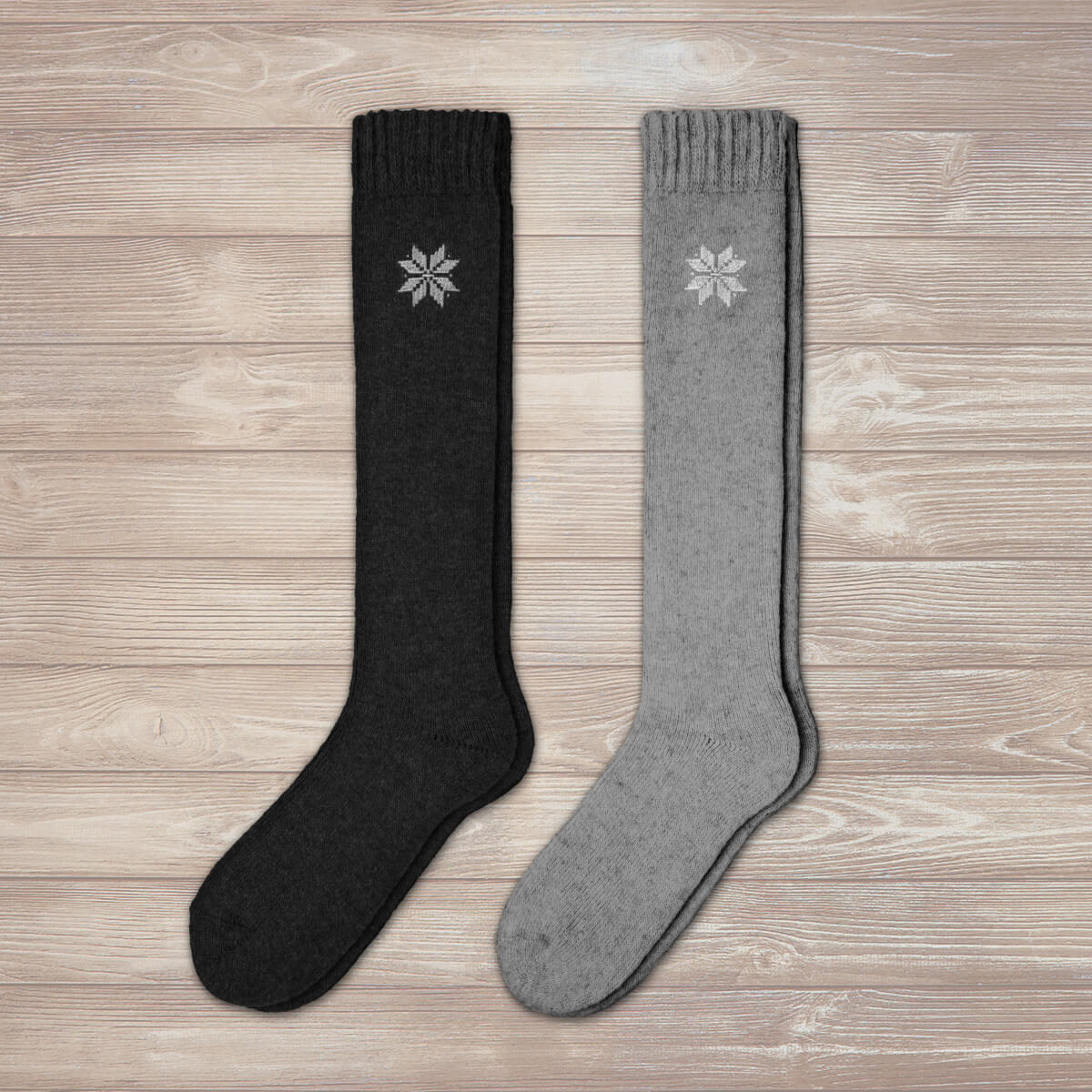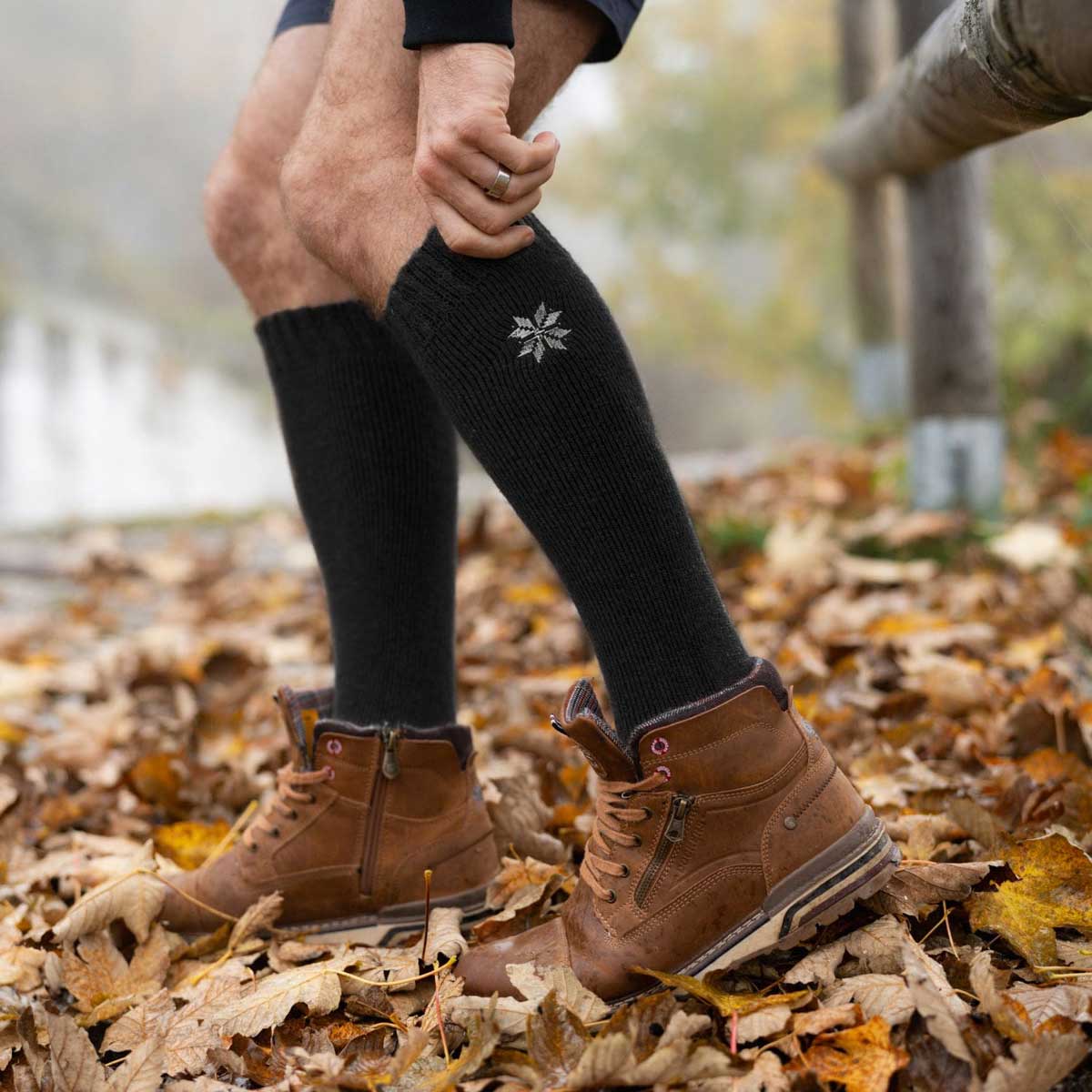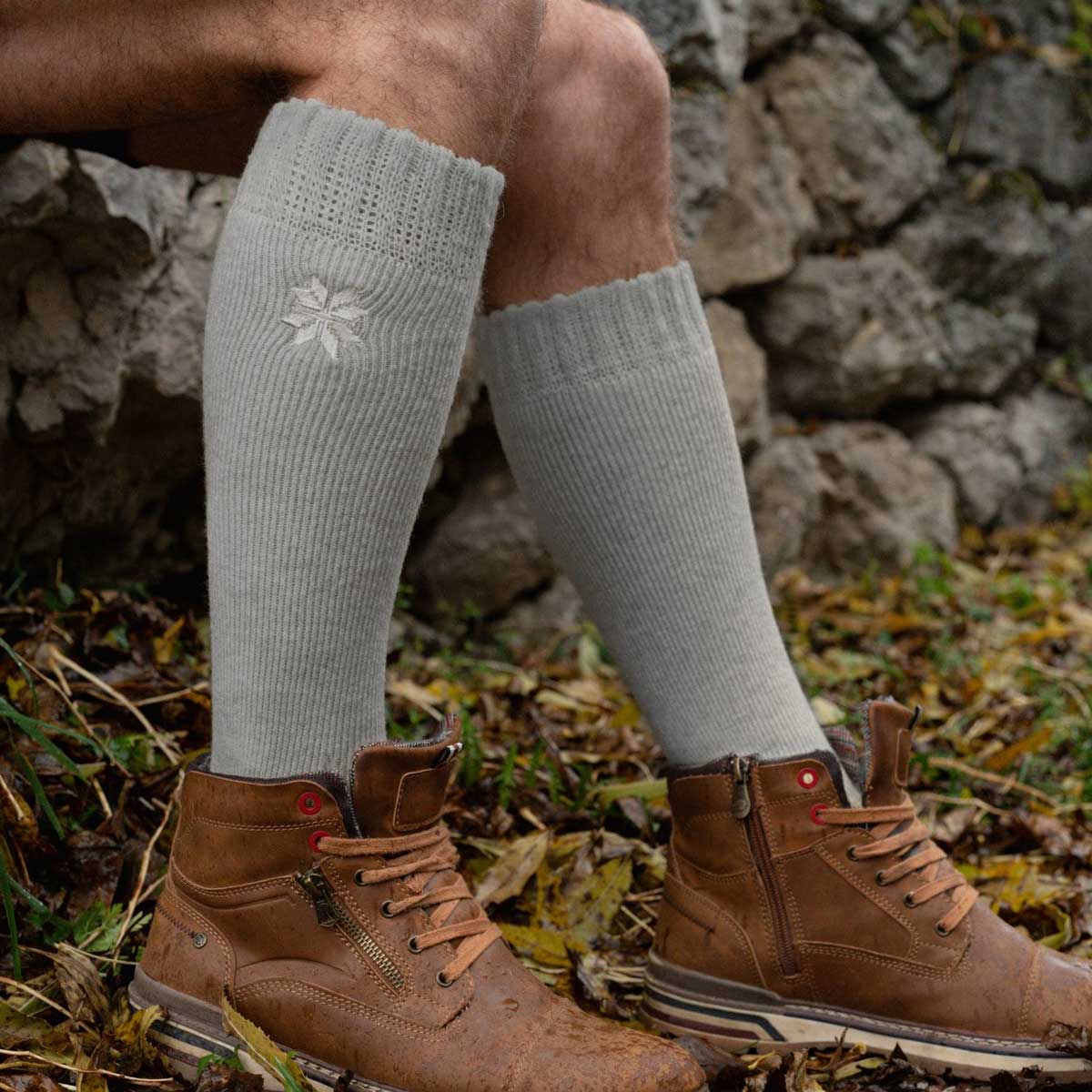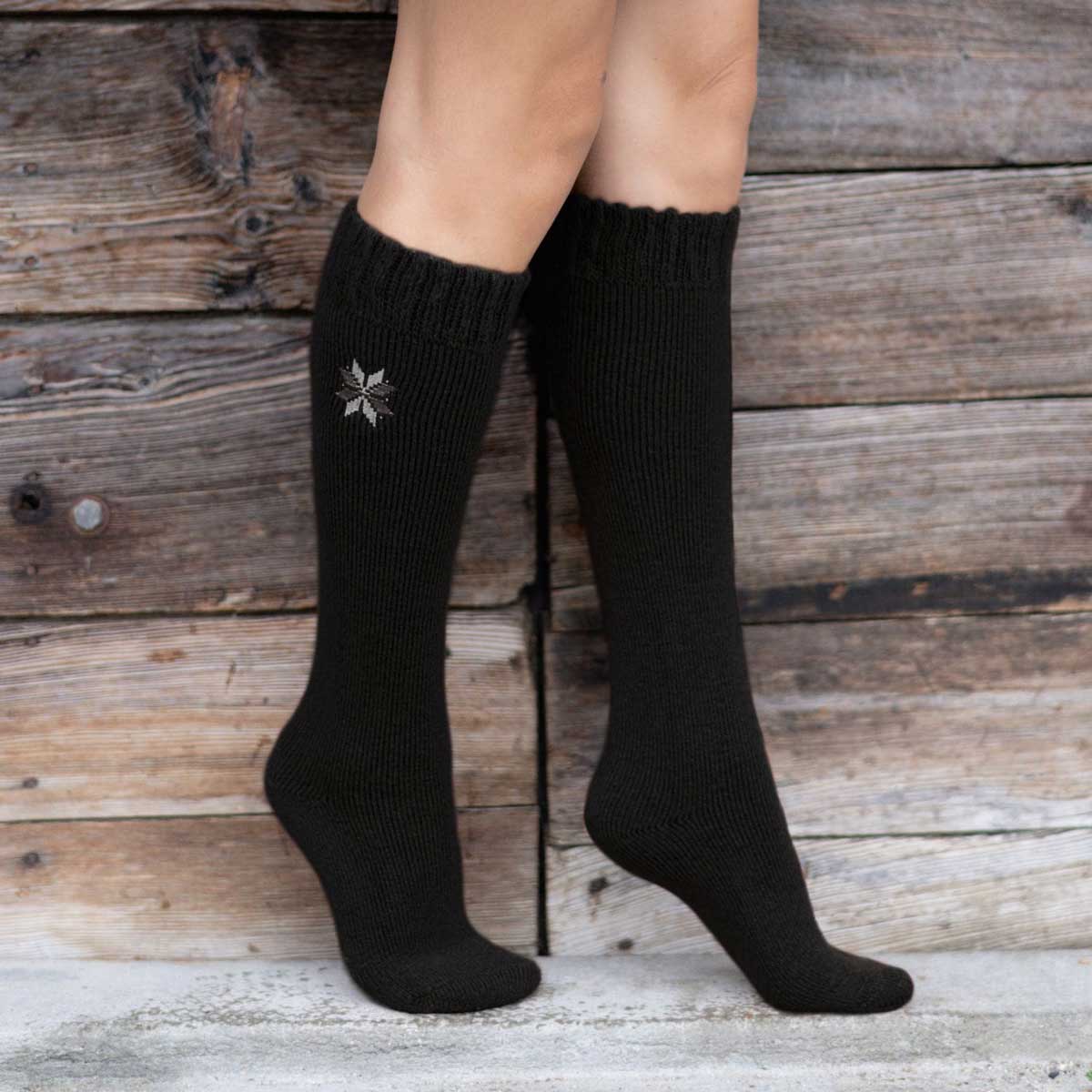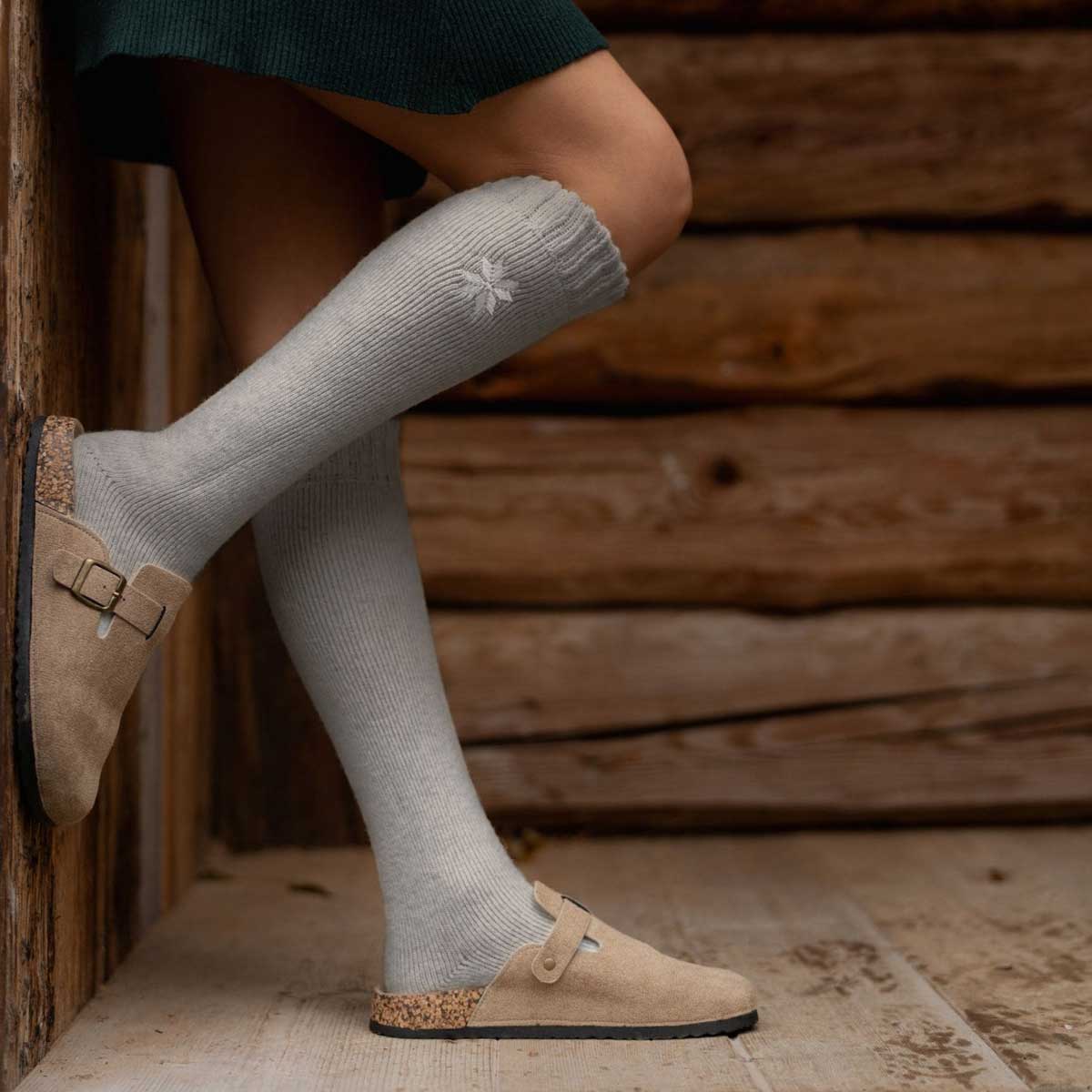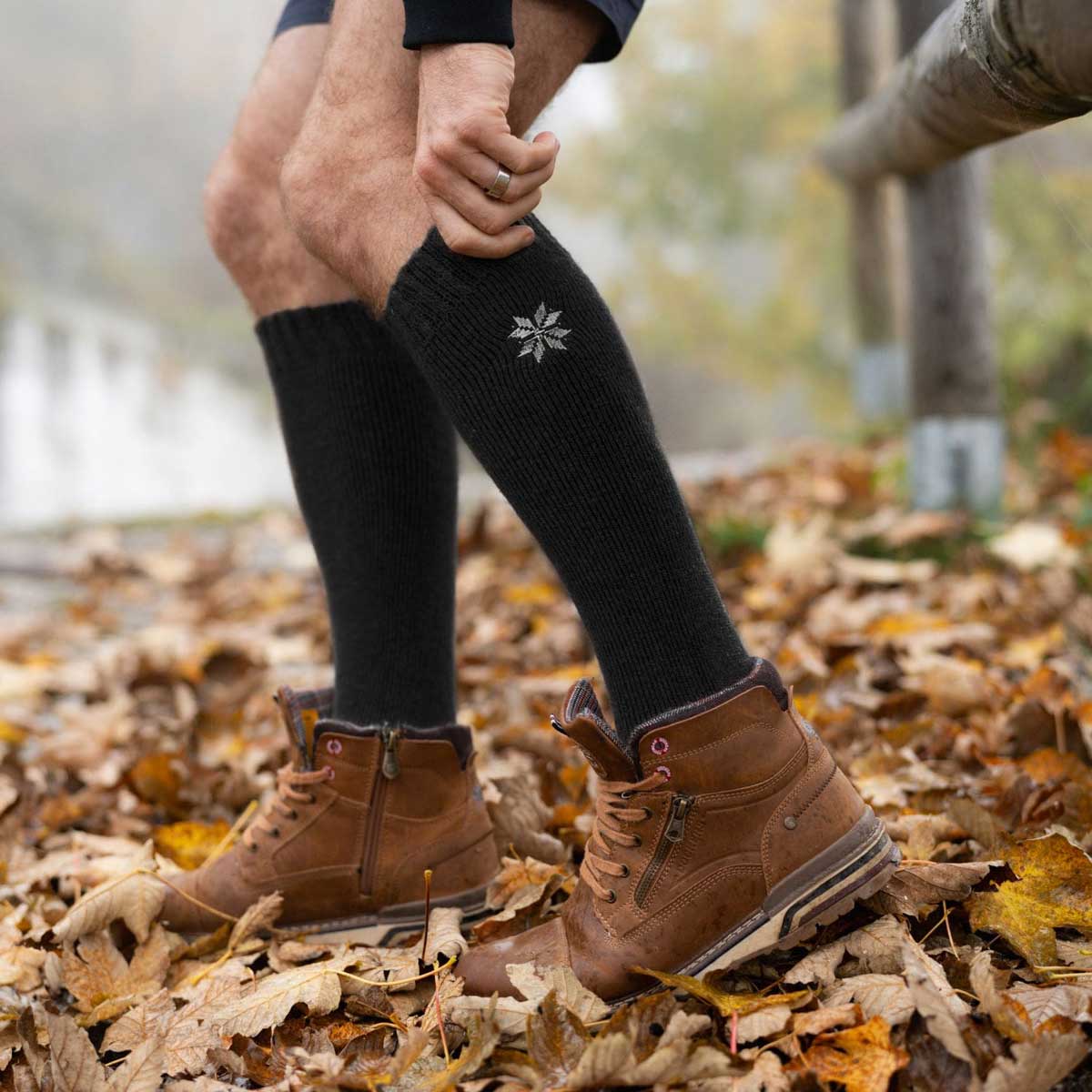Your Cart is Empty
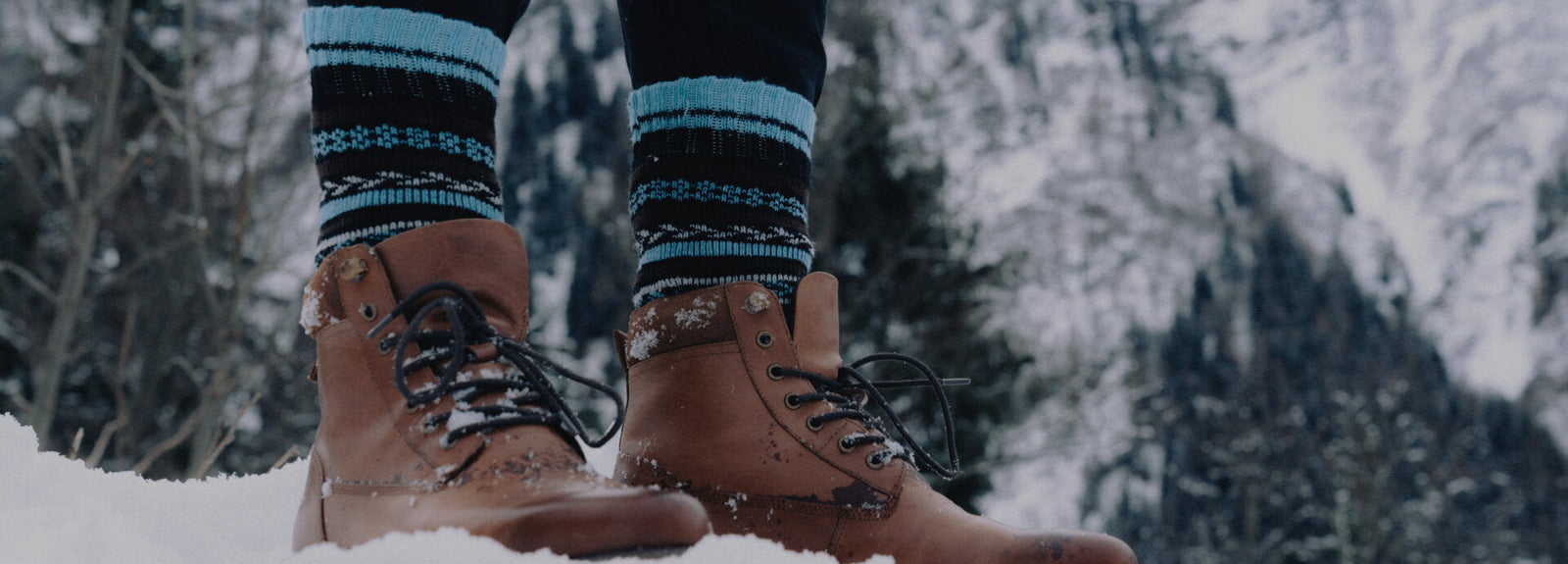
Say Goodbye to Cold Feet: A Guide to Choosing the Perfect Wool Socks
6 min read
As the chilly embrace of winter settles in, one often underappreciated yet crucial aspect of our well-being becomes apparent - keeping our feet warm in cold weather. While most of us recognize the sheer comfort of snug wool socks on a frosty day, we also need to discuss the more practical aspects of the subject.
From bolstering circulation to preventing the dreaded cold feet, socks protect our feet, ensuring they are shielded from harsh temperatures. By providing insulation and promoting proper circulation, socks play a pivotal role in maintaining comfort and preventing potential health issues caused by cold feet. This is why many people opt for the best merino wool socks, known for their exceptional warmth and moisture-wicking abilities.
Understanding how to choose the best socks for cold feet and poor circulation is the best way to take proactive measures to ensure your well-being during winter. This article explores the vital role of socks as temperature regulators for our feet and how to select the most appropriate type of sock to keep comfortable when temperatures outside start dropping.
Common Mistakes in Choosing Socks for Cold Weather
When it comes to preparing your feet for cold weather, choosing the right socks can make all the difference in keeping you snug and comfortable. However, many people unknowingly make mistakes that lead to chilly toes and general discomfort.
One common such error is going for cotton socks, as they tend to retain moisture, leaving feet damp and vulnerable to the cold. Another widely-encountered mistake is wearing too tight or restrictive socks, which can impede proper blood circulation and reduce the body's natural ability to keep feet warm. Additionally, overlooking the importance of sock thickness can be a bad decision, as thin socks provide inadequate insulation against the cold.
A sure way to avoid these common mistakes is going for Merino wool socks. Merino wool is a natural fiber renowned for its superior insulating properties. Socks made from it efficiently regulate temperature by trapping warm air while wicking away moisture at the same time, ensuring feet stay dry and toasty even in icy conditions. This is why they are often considered the best warm socks for winter.
Key Features to Consider for Warm Socks
Warm socks are designed to provide optimal insulation and comfort during cold weather. Here are some key features that make them effective in keeping feet cozy.
Insulating materials
Warm socks are made from insulating materials like Merino wool, synthetic blends, or thermal fabrics. These materials trap warm air close to the skin, creating a barrier against the cold. However, while synthetic blends and thermal fabrics have their merits, Merino wool stands unrivaled, ensuring continuous warmth and comfort in any environment. If you're looking for the best wool socks to keep your feet warm in winter, prioritizing high-quality Merino wool will provide superior insulation and long-lasting durability.
Moisture-Wicking Properties
Good warm socks have moisture-wicking capabilities, which help draw sweat and moisture away from the skin. Keeping feet dry is essential in maintaining warmth and preventing discomfort. And when it comes to this, Merino wool stands out once more.
Merino wool boasts exceptional absorbent properties, quickly drawing sweat away from your skin. Unlike traditional fabrics, it can absorb moisture without feeling damp, keeping your feet dry and comfortable in any weather.
Fabric Blending
Blending Merino wool with synthetic fabrics for warm Merino socks combines the best of both worlds. First and foremost, the natural moisture-wicking properties of Merino wool that we mentioned above complement the quick-drying capabilities of synthetics for a more comfortable wear.
On top of that, the blend enhances durability and flexibility, making the socks more resilient to wear and tear while providing a snug fit. Blending Merino wool and synthetic fibers also improves breathability and temperature regulation, adapting to various climates.
To identify the highest quality wool-blend socks, especially those containing merino wool, look for reputable brands known for their quality. Check the fiber content - an adequate Merino wool percentage of over 35% indicates better insulation and softness. Seek out features like reinforced toes and heels, seamless construction, and moisture-wicking properties. If you're searching for the best merino wool socks, look for a high percentage of Merino fiber to maximize warmth and softness while reducing foot fatigue.
Thickness and Cushioning
When it comes to wool socks for men or women, thickness and weight considerations are crucial in their insulation capabilities. The thickness of the socks directly affects their ability to retain heat and provide ample insulation during cold weather. This is because thicker socks have more air trapped between the fibers, creating a natural barrier that helps retain body heat and keep feet cozy.
Merino wool socks, known for their outstanding insulating properties, are available in varying thicknesses to suit different climates and activities. Opting for thicker wool socks ensures maximum warmth and comfort in colder conditions. Additionally, the weight of the socks can impact their breathability and moisture-wicking abilities. The best warm socks should feature extra cushioning to protect your feet from harsh weather, making them ideal for hiking, working outdoors, or simply lounging indoors during winter.
Proper Fit
Selecting the correct size for your Merino wool socks is paramount for optimal comfort and foot health. Ill-fitting socks can lead to various issues, from blisters to restricted blood flow and other complications in between.
To find the right sock size for you:
- Measure your feet accurately using a tape measure or ruler.
- Note the length from the heel to the tip of the longest toe and the circumference around the widest part of your foot.
- Refer to size charts provided by sock manufacturers to match your measurements.
Avoid tight socks that constrict blood flow, which can cause discomfort, numbness and even lead to circulation problems. Opt for socks with a snug yet comfortable fit that allows them to stay in place without causing compression. Properly sized socks prevent discomfort and enhance moisture-wicking and insulation properties, ensuring your feet stay dry and ready to conquer any adventure. Always opt for the best socks for cold feet and poor circulation, which offer a balance of warmth and breathability without restricting blood flow.
Right Length
When it comes to selecting the right sock length, consider the occasion and weather. Ankle-length socks offer versatility and are suitable for everyday activities, while crew-length socks provide added warmth and support during moderate temperatures.
For colder weather, knee-length socks stand out like those in the Nordic Socks knee-length collection. Perfect for chilly days, they will keep your legs cozy and comfortable while adding a touch of fashion flair. Whether it's ankle, crew, or knee-high, choosing the appropriate sock length ensures you stay fashionably warm and prepared for any climate.
Final Thoughts
In conclusion, choosing the best socks for cold feet requires attention to key factors. Remember to opt for insulating materials like merino wool, with its exceptional moisture-wicking properties, providing unmatched warmth and comfort. Recap the significance of a thicker and cushioned design, which aids in shock absorption, reduces friction, and prevents blisters and hot spots.
Our Nordic socks are soft and comfy, keeping your feet warm and dry. Made with the highest quality Merino wool, they support your overall well-being in any weather conditions, ensuring comfort, circulation, and protection from the harsh cold. So, when winter comes knocking, Nordic Socks has your back. Choosing the best merino wool socks will not only provide superior warmth but also promote breathability and odor resistance.
Make informed decisions when selecting cold-weather socks, considering factors like size, length, and the blend of materials to suit your needs and preferences. Trust in reputable brands and size charts for a perfect fit. As you embark on wintry adventures, don't underestimate the significance of keeping your feet warm. Whether hiking, working, or simply strolling through snowy landscapes, the right socks make all the difference.
Frequently Asked Questions
Are wool socks good for winter?
The answer is a definite yes—especially Merino wool socks, which offer exceptional insulation and breathability for all-day comfort in cold temperatures.
How do I keep my feet warm with poor circulation?
In colder weather, consider wearing woolly or insulating socks to retain heat, while during warmer months, opt for breathable cotton socks to promote better ventilation and keep your feet cool. Additionally, staying active and moving your legs will help improve blood circulation to your feet, aiding in keeping them warm and comfortable.
Does cold feet mean poor circulation?
Frequently, cold feet can be attributed to circulation issues. When a person experiences poor circulation, they may find it challenging to supply enough warm blood to their extremities, resulting in frequent complaints of cold hands and feet. Poor circulation can stem from various underlying causes.
Should you wear socks to bed if your feet are cold?
Keeping your feet warm is essential as it encourages the dilation of blood vessels, releasing heat and subsequently lowering the core body temperature. Wearing socks can be beneficial for individuals experiencing sleep difficulties caused by cold feet. However, it's essential to understand that using socks as a remedy for sleep troubles is not a substitute for addressing underlying issues like insomnia or other sleep-related problems.
Get Exclusive offers
Join our email list and get exclusive offers and 10% off on first order.
Recent Articles
-
 What Are the Warmest Wool Socks for Outdoor Work October 21, 2025
What Are the Warmest Wool Socks for Outdoor Work October 21, 2025 -
 Why Are Merino Wool Socks Considered the Best Choice? September 23, 2025
Why Are Merino Wool Socks Considered the Best Choice? September 23, 2025 -
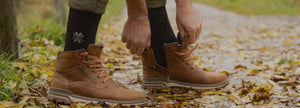 Warm Socks to Wear with Boots September 23, 2025
Warm Socks to Wear with Boots September 23, 2025 -
 Why it’s worth investing in high-quality, durable socks for kids August 16, 2025
Why it’s worth investing in high-quality, durable socks for kids August 16, 2025 -
 WHY COTTON SOCKS ARE THE BEST CHOICE August 12, 2025
WHY COTTON SOCKS ARE THE BEST CHOICE August 12, 2025
Related Products
Enjoying this content?
Sign up to get notification about new articles, special offers and new products.
NEWS & UPDATES
Get the newsletter to receive direct information about offers and new products.
Where are we shipping to?
Purchase from your country’s website.
It’s the fastest way to pamper your feet with comfy socks.
other countries
English









